Traveling with Stephy


The ultimate Costa Rica travel guide: 1-month itinerary
Disclaimer: this post may contain affiliate links. That means if you buy something through these links, I may earn a small commission, at no extra cost to you. Thank you for the support!
TABLE OF CONTENTS
How to get to Costa Rica?
- Juan Santamaria international airport (SJO), located in the central part of the country, more precisely in San Jose.
- Liberia airport, also known as Daniel-Oduber-Quiros, located in North West part of the country. I would only recommend this airport if you plan to visit the Nicoya Peninsula.
When to visit Costa Rica?

How long to stay in Costa Rica?
How to move around in costa rica, what budget do you need per day.
Regarding the lodging, it depends on what you are looking for. If basic accommodation is OK with you, then you can have an average of 30 US$ per night for a double room and private bathroom. Note that to get this kind of price, you need to book way ahead your stay! Book your room now at the best prices here!
1-month costa rica itinerary
I am super happy to share with you our itinerary from the Pacific coast to the Caribbean coast, through the center of the country. Within this route, you will be able to see most of the places in Costa Rica. In this way, you will have the chance to get a great sense of what the country of Pura Vida has to offer! Enjoy!
Juan Santamari airport (SJO)
Depending on your flight arrival, you should stay one night close to the airport before starting your trip across Costa Rica. There are two scenarios:
- If you traveling by car, grab your rental car and then stay at Alajueal town instead of San Jose downtown. You will skip the traffic jam the next morning and save time.
- If you traveling the country by bus, try to find accommodation close to Calle 5 in Downtown San Jose. This is where Tracopa Station is with all the buses that go to Costa Ballena (your next stop!).
“In case you arrive early in the morning, I advise you to skip San Jose/Alajuela town and start directly your journey to Costa Ballena!”
1 NIGHT (depends on your flight)
Dominical, Uvita or Ojochal
4 DAYS / 5 NIGHTS

3 DAYS / 4 NIGHTS

Manuel Antonio
Manuel Antonio is the ideal hub if you like beautiful beaches, living towns, and intense jungles. Indeed, Manuel Antonio town is home to the most famous National park of Costa Rica, called by the same name.

4 DAYS / 3 NIGHTS

Tamarindo is a great place to enjoy beautiful beaches and amazing living city vibes! It is one of the few towns in Costa Rica that has so many restaurants and bars close to the beach.
Book the best lodge in Costa Rica for your stay in Tamarindo!
3 DAYS / 2 NIGHTS

Cahuita or Puerto Viejo
Cahuita and Puerto Viejo are the two main towns located on the Caribbean side of the country. They are the perfect hub to visit Cahuita National Park.
Cahuita National Park is one of my favorite parks in all of Costa Rica. Indeed, this place is packed with so many species. From a family of Howler monkeys to many sloths in the trees, this National Park offers a beautifully marked path along the Caribbean sea. In addition to their abundant wildlife, those two towns offer great reggae vibes! This side of the country is completely different from what you have seen now.

Tortuguero National Park
Alajuela town.
Alajuela town is a great hub to visit the volcanoes of the region such as Poas or Irazu. In addition, the city is closer to Juan Santamaria airport than San Jose downtown itself. Therefore, this is the perfect last stop of your trip before flying back home.
In conclusion
Related posts:.

Leave a Comment Cancel Reply
Your email address will not be published. Required fields are marked *
Save my name, email, and website in this browser for the next time I comment.
Privacy Overview
Not authorized.
Javascript not detected. Javascript required for this site to function. Please enable it in your browser settings and refresh this page.
Costa Rica Travel Guide

Courtesy of Matteo Colombo | Getty Images

Why Go To Costa Rica
To many, Costa Rica's charm lies in its lush rainforests, unspoiled beaches and abundance of wildlife. With breathtaking landscapes and a myriad of creatures – from toucans to monkeys to jaguars – it's easy to see why. Where else can you hike active volcanoes, zip line through cloud-covered rainforests and surf warm turquoise waters within the span of just a few days? In this compact but diverse tropical paradise , exhilarating outdoor activities are abundant. Nature-seekers will roam thick jungles while beachgoers will sprawl across the powdery sands. It's hard not to admire all the splendors this "Rich Coast" has to offer.
However, for others, this small Latin American country has a different appeal: it's a relaxed way of life. Residents – known as Ticos – often recite the catchphrase " pura vida " (or "pure life"). This guiding philosophy can be observed from Costa Rica's central cosmopolitan capital of San José all the way to the sandy Atlantic and Pacific coasts. To truly immerse yourself in the good life, kick back and admire the awe-inspiring scenery. Surround yourself with graceful butterflies at La Paz Waterfall Gardens , hike along the monumental Arenal Volcano , mingle with locals at Puerto Viejo de Talamanca , or simply sit in a hammock under a palm tree along the Nicoya Peninsula . We have a strong feeling you'll discover the pure life, too.
Find Flight and Hotel Deals
Navigate forward to interact with the calendar and select a date. Press the question mark key to get the keyboard shortcuts for changing dates.
Navigate backward to interact with the calendar and select a date. Press the question mark key to get the keyboard shortcuts for changing dates.
- # 2 in Best Places to Visit in Spring
- # 2 in Best Cheap Destination Wedding Locations
- # 4 in Best Cheap Vacations in Central and South America
See All 8 Rankings
Best of Costa Rica
Best hotels in costa rica.
- in Gaia Hotel And Reserve - Adults Only
- in Nayara Hotel Spa & Gardens
- in Los Suenos Marriott Ocean & Golf Resort

Best Things to Do in Costa Rica
- # 1 in Nicoya Peninsula
- # 2 in Guanacaste
- # 3 in Ecotermales Fortuna
Popular Tours

Catamaran Tour from Playa del Coco - Trimaran
(12 reviews)
from $ 120.00

Guachipelin Adventure Volcano Zipline Horseback River Tubing Combo
(956 reviews)
from $ 135.00

La Fortuna Waterfall, Hanging Bridges, Arenal Volcano Combo Tour
(1086 reviews)
from $ 172.00
Costa Rica Travel Tips
Best months to visit.
The best time to visit Costa Rica is from mid-December to April (the dry season). This peak tourist season boasts plenty of sunshine making it an ideal time for exploring rainforests and lounging on beaches. That said, the dry season is the most popular (and expensive) time to visit. Luckily the U.S. dollar goes a long way in Costa Rica no matter the season. You'll have to book your room and tour reservations three months in advance to secure a spot. If you don't mind getting a little wet, visit between May and November when prices are at their lowest. During June and July, rain showers pause briefly, and Costa Rica's forests burst with green foliage.
While planning your trip, keep in mind that the weather varies by region. In the thick forests of the Caribbean Sea coast and Northern Plains, expect high humidity and temperatures ranging between the 70s and high 80s year-round. Conversely, in the North Pacific, prepare for lower humidity levels, but temperatures that often soar into the 90s during Costa Rica's dry months.
Weather in Costa Rica
Data sourced from the National Climatic Data Center
What You Need to Know
Pack an umbrella Even if you're planning to visit during Costa Rica's dry season (December to April), don't count on continuous sunshine. Showers can occur year-round.
Bring small bills The U.S. dollar is widely accepted in Costa Rica. It's to your advantage to bring American money, particularly small bills for purchasing souvenirs and tipping.
Ask to see the ICT card You'll be approached by guides offering their services at many of Costa Rica's natural wonders. To ensure you're hiring a professional guide, ask to see their ICT card, which is issued by the Costa Rican Tourism Board. This will ensure you're receiving guide services that have been vetted by the government. You can also sign up for one of the best tours in Costa Rica to ensure you're being led by a professional.
How to Save Money in Costa Rica
Don't rent a car at the airport Most car rental companies at Costa Rica's airports add a 13 percent charge to their rates. It's best to reserve a car ahead of time from a company located in the heart of town rather than the airport.
For better rates, exchange at the airport The exchange rate is generally better in Costa Rica for American dollars. While you'll want to bring a few Costa Rican colóns with you for small purchases upon arrival, exchange the bulk of your cash once you're in the country or withdraw local currency from an ATM.
Make sure the meter is running Taxi drivers have a reputation for charging extra by not switching the meter on. As soon as you step into a taxi, either check that the meter is running or negotiate a flat rate with the driver to avoid a scam.
Culture & Customs
Costa Rican residents ( los Costarricenses or " Ticos ") are known for their pleasant and easygoing nature. Always warm, welcoming and living life to the fullest, Ticos often greet each other with a hearty " Pura Vida! " (meaning "pure life"). Don't be alarmed by their benevolence and eagerness to please guests. To blend in, just reciprocate with kindness and embrace their positive philosophy.
The official language here is Spanish; however, you'll find English-speakers in popular tourist areas. But using some key phrases, such as " por favor " ("please") and " gracias " ("thank you"), is a polite gesture that goes a long way.
Dressing in casual clothing coincides with the laid-back Costa Rican lifestyle. You'll want to pack loose fitting clothing and sturdy hiking shoes if you're planning to explore the country's rustic wildlife reserves, volcanoes and parks. You'll also want to lather up with sunscreen and insect repellent, as mosquitoes and other critters swarm Costa Rica's damp rainforests.
Coffee beans are commonly associated with the "Gold Coast." You're also likely to spot coffee plantations in the Central Plains; many travelers enjoy taking tours here. However, high-end coffee beans are hard to come by since they are commonly exported rather than sold locally.
Costa Rica's official currency is the Costa Rica Colón (CRC). Since the CRC to U.S. dollar exchange rate fluctuates, be sure to check what the exchange rate is before you go. Major credit cards are accepted at most restaurants and shops.
As far as dining goes, travelers should note that restaurants add gratuity onto the bill. However, tipping extra is not uncommon; if the service is stellar, leave an additional tip. For tour guides and drivers, plan to dole out about $10 per day.
Costa Rica's official religion is Catholicism. More than 70 percent of Costa Rica's population identifies as Catholic; however, the Catholic Church's presence is not readily visible to the unsuspecting traveler, except during patron saint celebrations when locals flock to the streets outside churches for dancing, music and scrumptious cuisine.
In Costa Rica, you'll face few safety concerns. However, in congested San José, you'll want to keep an eye on your belongings and your rental car. Pickpocketing and car theft are common in heavily trafficked tourist areas.
What to Eat
With its tropical temperatures, Costa Rican cuisine features an abundance of exotic fruits (especially pejibayes – a type of savory fruit) and vegetables, and depending on what part of the country you are in, lots of fresh fish. Black beans and rice are a staple and are a part of almost every traditional meal. Of course, Costa Rica is famous for its coffee beans (though much of it is exported), but you shouldn't leave without trying a cup.
Common dishes you will see on menus include gallo pinto (rice and beans), ceviche (fish marinated in lemon juice), pati (pastry dough stuffed with curried beef and onions) and agua dulce (warm melted sugarcane). If you visit San José, don't miss the Central Market, which opened in 1880, and is the largest market in the city, with more than 200 shops, stalls and small restaurants. Taking a food tour in San José is a great way to get a taste for the country's unique markets and flavors.
Getting Around Costa Rica
The best way to get around Costa Rica is by bus, which is reliable, navigable, inexpensive and frequently runs through San José , Costa Rica's capital. Driving on your own is not highly recommended as some roads are tricky (speckled with potholes and ambiguously marked intersections). A better alternative to renting your own set of wheels is hiring a car-and-driver service recommended from your hotel , so you can enjoy the country's gorgeous scenery without having to tackle challenging roads with confusing signage. Signing up for one of the best tours in Costa Rica is another great way to sightsee without having to navigate the country on your own. For a hassle-free means of getting to downtown San José from the Juan Santamaría International Airport (SJO), you'll want to flag a taxi. Official taxis at the airport are orange. If you're planning to explore Guanacaste and the Nicoya Peninsula in the northwest region of Costa Rica, you can easily hail a taxi from the Daniel Oduber Quirós International Airport (LIR).
Entry & Exit Requirements
U.S. citizens traveling to Costa Rica will need a passport that is valid for the length of their stay in Costa Rica. Many airlines also require travelers to have a round-trip ticket before boarding flights to Costa Rica to ward off fines imposed by Costa Rican immigration. Travelers should expect to pay a $29 airport departure tax. Visitors can pay the fee upon arrival in Costa Rica or before departure. Check to see if the fee was included in the price of your airline ticket, as some airlines do add this in. However, it is highly recommended to pay in advance as lines can get long at the airport. If you're planning to stay longer than 90 days, you are required to apply for an extension to the Office of Temporary Permits. To learn more, visit the U.S. State Department website .
Recent travelers suggested exploring Tortuguero National Park by boat to marvel at its beautiful landscape and animals.
Explore More of Costa Rica

Things To Do
Best hotels.

You might also like

# 1 in Best Cheap Destination Wedding Locations

# 8 in Best Cheap Honeymoon Destinations for 2024

Chilean Patagonia
# 2 in Best Places to Visit in Central and South America in 2023
If you make a purchase from our site, we may earn a commission. This does not affect the quality or independence of our editorial content.
Recommended
The 18 Best Napa Valley Wineries to Visit in 2024
Lyn Mettler|Sharael Kolberg April 23, 2024

The 25 Best Beaches on the East Coast for 2024
Timothy J. Forster|Sharael Kolberg April 19, 2024

The 50 Best Hotels in the USA 2024
Christina Maggitas February 6, 2024

The 32 Most Famous Landmarks in the World
Gwen Pratesi|Timothy J. Forster February 1, 2024

9 Top All-Inclusive Resorts in Florida for 2024
Gwen Pratesi|Amanda Norcross January 5, 2024

24 Top All-Inclusive Resorts in the U.S. for 2024
Erin Evans January 4, 2024

26 Top Adults-Only All-Inclusive Resorts for 2024
Zach Watson December 28, 2023

Solo Vacations: The 36 Best Places to Travel Alone in 2024
Lyn Mettler|Erin Vasta December 22, 2023

26 Cheap Beach Vacations for Travelers on a Budget
Kyle McCarthy|Sharael Kolberg December 4, 2023

The 50 Most Beautiful White Sand Beaches in the World
Holly Johnson December 1, 2023

Type of Traveler

Type of Experience
Planning a trip to costa rica: the pura vida guide.
Ready to zip-line through lush canopies or relax on pristine beaches? Our essential guide to planning a trip to Costa Rica covers everything from volcanic peaks to tropical retreats, ensuring your journey is as exhilarating as the destination itself.
Known for its “Pura Vida” lifestyle and stunning biodiversity, Costa Rica is a country where over a quarter of its land is dedicated to conservation areas. That means planning a trip to Costa Rica is tantamount to stepping into a world where nature takes center stage, boasting five percent of the world’s biodiversity on just 0.03% of the earth’s surface.
But whether you’re a thrill-seeker or a nature lover, this country definitely promises you an adventure like no other.
Planning A Trip To Costa Rica: Knowing The Basics
When you’re planning a trip to Costa Rica, understanding a few key travel essentials can make your journey as smooth as the country’s famous coffee.
First, take note that visitors from the U.S., Canada, and most European countries do not require a visa for stays of up to 90 days. However, a passport valid for at least six months post-visit is necessary.a requisite.
For the best airfare, we encourage you to consider booking your flights during the shoulder seasons of May to June or September to November. Not only do these periods let you avoid the tourist rush, but they also coincide with the country’s best weather (just before or right after the rainy season).
And for the best times to visit? December to April boasts the driest weather, which is arguably perfect for exploring those sprawling beaches and lush rainforests.
However, if you’re a fan of verdant landscapes and don’t mind a bit of rain, visiting during the green season (May to November) can be a cheaper and quieter alternative.
Planning A Trip To Costa Rica: Creating Your Itinerary
Crafting the perfect itinerary for your trip to Costa Rica is similar to mixing your ideal tropical cocktail: a little bit of adventure, a splash of relaxation, and a twist of the unexpected!
Kick things off in Costa Rica’s bustling capital, San José , with its rich history and lively markets. It’s truly the perfect gateway to the country’s natural wonders.
Head next to Arenal Volcano National Park , where you can hike through lava fields and soak in natural hot springs. And for an adrenaline boost, don’t miss out on zip-lining through the Monteverde Cloud Forest , where the treetops are alive with exotic birds and howler monkeys.
Of course, no trip to Costa Rica is complete without experiencing its stunning beaches . With that, remember that Tamarindo is great for surfing and sunsets, while the more secluded beaches like Montezuma offer tranquility and unspoiled beauty. Whether you want to go snorkeling or just relax on the white sands, it’s your call. After all, soaking up the Costa Rican sun is definitely where the most fun happens.
Meanwhile, wildlife enthusiasts should venture into Tortuguero National Park to witness sea turtles nesting on the beach or explore the dense jungles of Corcovado. Known as the “Little Amazon,” its waterways are best explored by boat, offering glimpses of diverse bird species and the occasional crocodile.
Finally, wrap up your trip with a visit to the lush landscapes of the Osa Peninsula , where you can disconnect and reflect on the natural beauty around you.
Keep in mind that planning a trip to Costa Rica is all about embracing the pura vida lifestyle— so we encourage you to take your time, explore freely, and let the country’s charm do the rest.
Where To Stay In Costa Rica
Choosing where to stay in Costa Rica can define your travel experience.
Here are some top recommendations to help you narrow down your options:
For a taste of local culture and accessibility, San José offers a range of hotels from luxury to budget-friendly, ideal for your first or last night in the country. It’s a great launching pad for day trips with numerous dining and entertainment options.
If you’re a nature lover, Monteverde’s eco-lodges provide a direct connection to the cloud forest, allowing you to wake up surrounded by the sounds of wildlife. Similarly, the cabins around Arenal Volcano offer stunning views and are perfect for those seeking adventure right outside their door.
On the other hand, beachgoers might prefer the laid-back vibe of Tamarindo or the luxurious resorts of Manuel Antonio , where comfort meets the ocean breeze. These areas boast a variety of beachfront hotels and vacation rentals that cater to all tastes and budgets.
Lastly, for a truly unique experience, consider staying in one of Tortuguero’s remote lodges, which are accessible only by boat or plane. There, you can have an immersive experience in a lush, wildlife-rich area that’s truly one for the books!.
Plan The Perfect Trip To Costa Rica With ThisCityKnows
Now that you’re armed with the essentials for planning a trip to Costa Rica, all that’s left is to embrace the pura vida spirit and enjoy the ride!
Whether zip-lining through the forest canopy or lounging on sun-kissed beaches, your Costa Rican adventure promises to be unforgettable. And remember, ThisCityKnows is your ever-trusted guide in making things easier for you to explore Costa Rica, and all the must-visit cities in the world .
Got a cool travel hack or stumbled upon a new hidden gem in Costa Rica? We’re all ears!
Share your experiences in the comments or reach out directly—we do love swapping stories that inspire further exploration.
So, are you ready to explore? Costa Rica awaits, and the memories you’re about to make are just a click away !
Katie is all about hitting the road solo, always on the lookout for spots the internet hasn't fully discovered yet. She’s the one turning left when the map says right, hunting for those genuine, "you had to be there" moments. With a style that's as engaging as a late-night chat by the hostel fire, her stories aren't just about places, but the raw, unfiltered joy of exploring them on your own terms.
- But a smiling visitor here to share the love (:, btw outstanding pattern. Here is my site: web page
Leave a Reply Cancel reply
Your email address will not be published. Required fields are marked *
Post Comment

Planning A Trip To Alaska: Where Wild Wonders Await

Planning A Trip To New York City: The ABCs of NYC

Planning A Trip To Hawaii: Your Ultimate Island Guide

Planning A Trip To Italy: A Quick Starter Guide

Things to Know Before You Go to Venice, Italy

Things to Know Before You Go to Prague, Czech Republic

Things to Know Before You Go to Los Angeles, California

Things to Know Before You Go to Orange Beach, Alabama

Things to Know Before You Go to Moscow, Russia

Things to Know Before You Go to Copenhagen, Denmark

Things to Know Before You Go to Bangkok, Thailand

Things to Know Before You Go to Lisbon, Portugal

Things to Know Before You Go to Marrakesh, Morocco

Things to Know Before You Go to New York City

Things to Know Before You Go to Paris, France

Things to Know Before You Go to Tokyo, Japan

Fun Things To Do in Dubai, Tips on Where To Stay, and More

Visit London On A Budget: Tips On What To Do, Where To Stay, and More

Navigate To New York City: Fun and Easy Ways to See the Big Apple

A Curated List of the World’s Most Secluded Destinations

Things to Know Before You Go to Athens: The Cradle of Civilization

Things to Know Before You Go to Oslo: Fjords and Viking History

Things to Know Before You Go to Tel Aviv: Beaches and Bustling Markets

Things to Know Before You Go to Buenos Aires: Tango and European Flair
Related posts, explore captivating destinations worldwide from hidden gems to iconic landmarks, dive into the wonders of travel and get inspired for your next adventure..

Unveiling the Best Lakes in Georgia: Where Serenity and Adventure Collide
Explore Costa Rica
Plan your trip to costa rica: best of costa rica tourism.
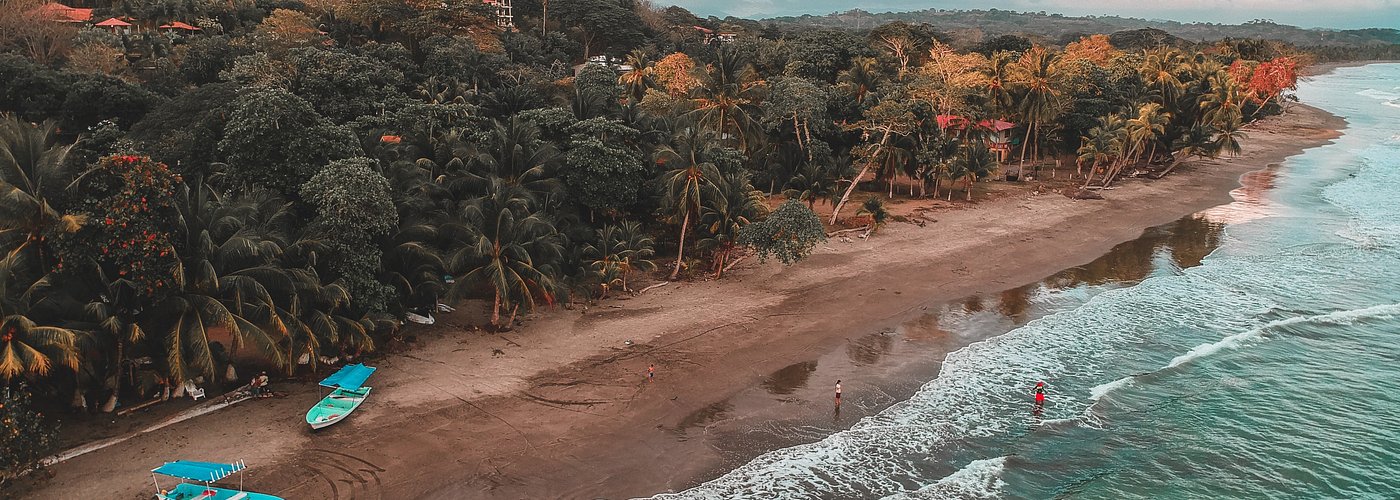
Travel Advice
Essential costa rica.
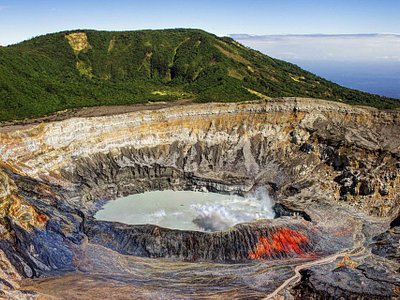
Where to stay
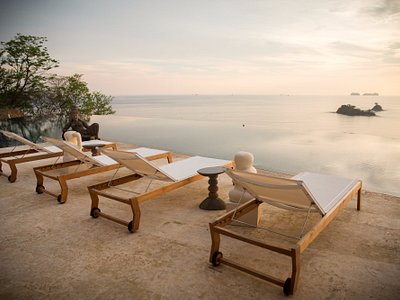
Where to eat
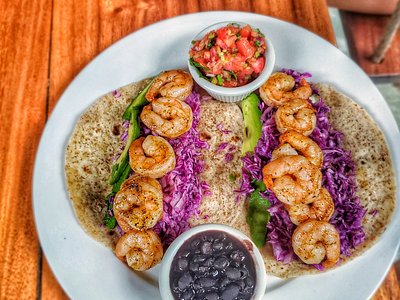
The perfect seven days in Costa Rica

My under-the-Radar family adventures on the Nicoya Peninsula
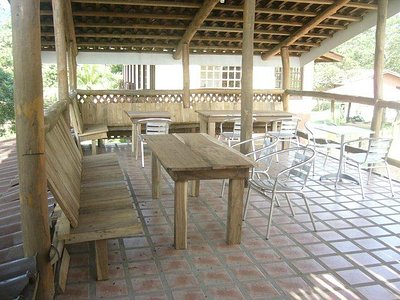
Browse collections

More Latin American sunshine
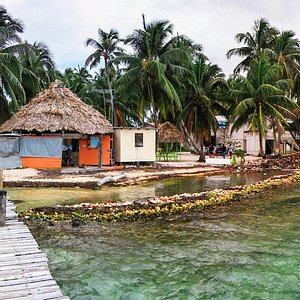
Costa Rica Travel Guide
Travelers' pro tips or experiencing costa rica.
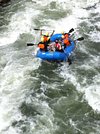
A 10% service charge is included or added to every restaurant bill. Tipping is not a part of Costa Rican culture but some Ticos in the service industry who cater to North American tourists have come to expect it.
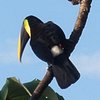
Costa Rica is a beautiful and generally very safe country to visit, but petty theft is a problem, so don’t ever leave valuables in your car or on the beach while you go in swimming.

raquel_z 🙊🙉🙈🐒
The sun sets in Costa Rica by 6 p.m. all year round, and it is really not advisable to drive after dark — especially if it is your first visit.

I have realized that this is a huge part of the real Costa Rica experience....the people. They are so friendly, helpful, kind, humble, and absolutely genuine. Another reason why I want to keep coming back over and over again.

I just love Costa Rica!

Manuel Antonio Beach is truly one of the top beaches in the world. Don’t miss it when you come to Costa Rica.

Costa Rica deserves to be proud!
What is the best way to get there?
Costa Rica is served by two international airports: San Jose International Airport (Juan Santamaria) and Liberia International Airport.
Do I need a visa?
Most visitors from the US, Europe, and Australia will not need a visa to travel to Costa Rica; but do consult the Costa Rican embassy for details.
When is the best time to visit?
Costa Rica has two distinct seasons. The wet season (May to November) sees daily showers up and down the country, with the heaviest rains occurring in September and October. The dry season is the most popular time to travel, with daytime temperatures in the late 70°Fs (mid 20°Cs) — ideal for hitting the beach or hiking through the cloud forests. This is also festival season, with major events including the Fiestas Palmares (January), Semana Santa (Easter), and the Festival de la Luz (Festival of Lights, December).
Domestic airline Sansa has regular flights between all of Costa Rica’s main cities. Other airlines that fly domestically are Skyway, Aerobell, and Green Airways.
The cheapest way to travel around Costa Rica is by bus, and there is a wide network of long-distance buses that will take you wherever you want to go. Find route information and fares.
For shorter trips and local transport, taxis are widely available.
ridesharing
Uber is available in San Jose and some other Costa Rican cities on your smartphone.
On the ground
What is the timezone.
Central Standard Time
What are the voltage/plug types?
The standard voltage in Costa Rica is 120 V and the standard frequency is 60 Hz. The plug has two flat parallel pins.
What is the currency?
Costa Rican colón. US dollars are widely accepted, especially in cities and tourist areas.
Are ATMs readily accessible?
Yes, in all large towns and cities.
Are credit cards widely accepted?
Yes, but it’s worth carrying some cash, especially outside of major cities and tourist areas.
How much do I tip?
Tipping is not obligatory in Costa Rica, although tipping for exceptional service is always appreciated.
Are there local customs I should know?
The federal legal age for buying and drinking alcohol is 18 years old.
Try to speak the language
English is widely spoken in establishments frequented by travelers, but learning a few Spanish phrases will be appreciated. If you plan on venturing further afield, a basic knowledge of Spanish will go a long way.
Expect relaxed time-keeping
Locals tend to be laid-back about timekeeping, so don’t get too worried if your taxi or tour guide shows up 15 minutes late.
Tap water is drinkable in Costa Rica, except in remote rural areas, so pack a refillable water bottle.
Keep your clothes on!
Topless sunbathing is not acceptable in Costa Rica, and while you may find it’s tolerated at some private resorts, it’s best to do as the locals do and keep covered.
13 essential things to know before visiting Costa Rica

Sep 1, 2023 • 7 min read
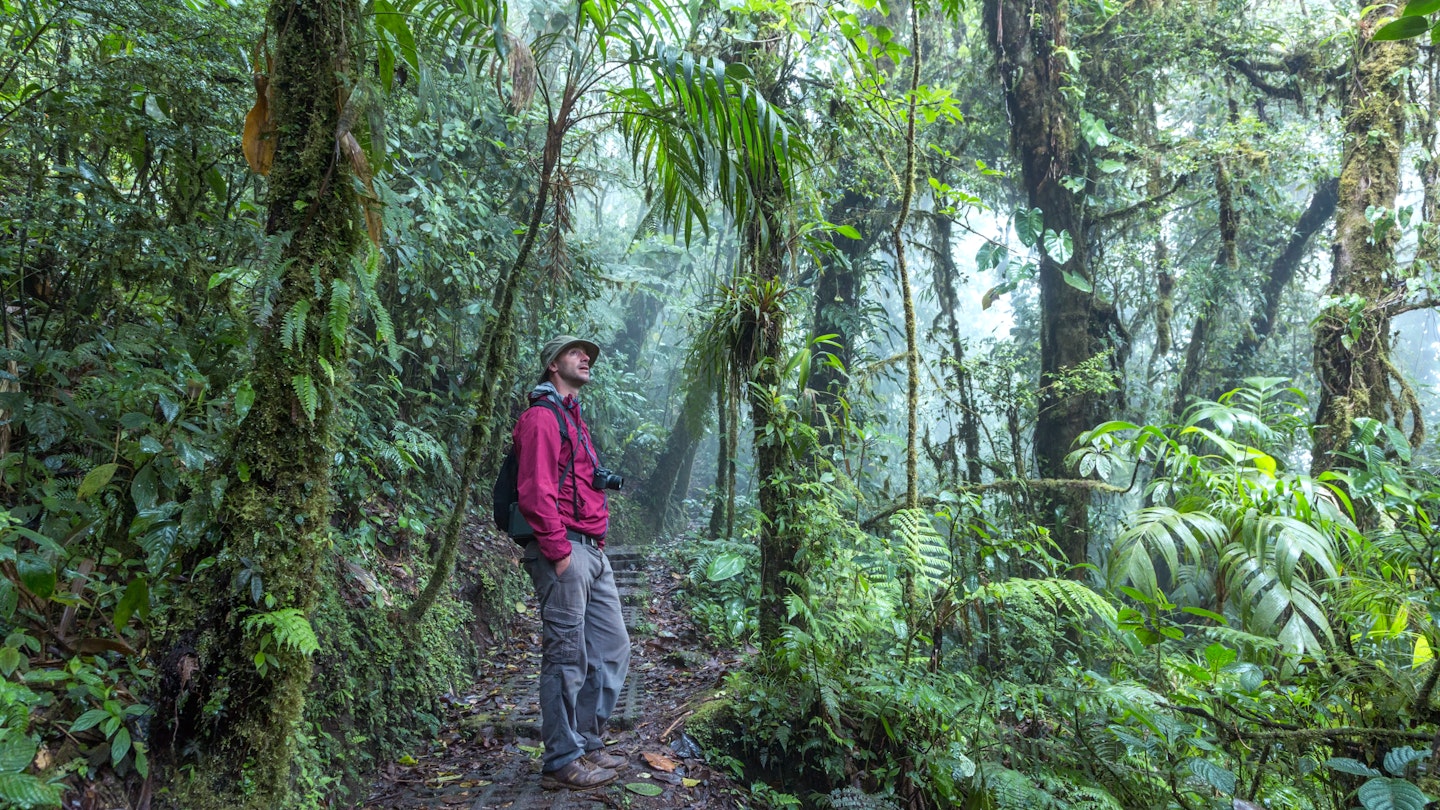
From weather-proof essentials to pura vida, here's our list of things to know before visiting Costa Rica © Matteo Colombo
On a recent trip to Costa Rica , on a hike in the remote forests of Volcán Tenorio National Park , the sky unexpectedly opened up, dumping buckets of rain on my 12-year-old twins and me. We were completely soaked, despite our rain gear.
“So much for the dry season,” I complained.
My kid looked at me with incredulity.
“Mom, we’re in the rainforest!”
Good point, kid.
In Costa Rica, every adventure comes with a potential misadventure. That’s the lesson I have learned (and learned to love), from 25 years of traveling in this wild wonderland.
From driving through rivers due to washed-out bridges, to getting stung by scorpions, to getting lost in the country’s largest national park…I have had my fair share of travel “disasters.”
But I have also learned how good planning (and a healthy dose of reframing) can turn almost any disaster into an extraordinary experience. Here are 13 tips to make sure your trip to Costa Rica is memorable in all the right ways.
1. Your essential packing item: waterproof hiking sandals
Waterproof sandals are ideal for river crossings, rocky beaches, waterfall swimming and other essential Costa Rica activities. Close-toed sandals are recommended (and sometimes required) for many activities.
2. It’s hot in the lowlands, but cool in the mountains
Costa Rica is in the tropics and yes, it gets hot on the coast and in the humid lowlands. But the temperature drops significantly as you climb into the mountains. If you’re planning to go to the cloud forest – Monteverde or San Gerardo de Dota or Rivas – you’re going to want a jacket (at least).
3. It rains a lot in the rainforest – even in the dry season
The rainforest and cloud forest are wet climates at any time of year. So it’s best to pack for rain, even if you are traveling in the so-called dry season. Bring sturdy, waterproof boots for hiking on muddy trails.
Be prepared for showers (or downpours) with a quick-drying, moisture-wicking base layer and a waterproof rain jacket.
4. Costa Rican liability insurance is mandatory for all vehicle rentals
Everybody who rents a vehicle in Costa Rica is legally required to purchase liability insurance from the rental agency. This can be frustrating and confusing for travelers, especially since the extra cost of this insurance is (often) not included in the original price quoted at the time of reservation.
It seems like a scam, but it’s an official scam and there’s no way around it. You can usually avoid this confusion (but not the charge) by reserving your vehicle directly with a rental car agency and not through a third-party consolidator.
Note that most rental agencies also require drivers to have comprehensive insurance, in addition to liability insurance. You may be able to avoid purchasing a comprehensive insurance package if you use a credit card that provides this benefit.

5. Do you need a 4WD vehicle in Costa Rica?
Do you want to swim at secret beaches, discover hidden waterfalls and hike untrodden trails? You’re probably going to need a 4WD to get there.
There are plenty of wonderful places in Costa Rica that do not require a 4WD; but there are plenty that do, and it’s hard to know which is which until you are sliding slowly but surely backward down a steep hill. Or staring at a road that continues on the other side of a river. Or stuck solid in a muddy rut.
So, yes - if you’re going to rent a vehicle, you should probably rent a 4WD.
6. Pura Vida is a state of mind
It’s easy to travel in Costa Rica without knowing much Spanish, but there is one phrase you need to know: Pura vida! It’s a salutation and a valediction, a statement of affirmation or appreciation. It means that life is good, or literally, “pure.” Pura vida! You will hear this a lot, and hopefully you will feel it too.
7. Costa Rica is eco-conscious
Many Costa Rican residents are passionate about protecting the country’s incredible natural resources. You’ll notice this earth-positive attitude when you tour organic farms, hike at private nature reserves, learn about local wildlife and stay at eco-lodges. Ecotourism is a huge part of the Costa Rican economy (accounting for up to 10% of GDP).
That said, there is an appreciation of country’s biological and geological diversity for its inherent value, not just its economic value. This means that the country prioritizes things like reducing its carbon emissions and preserving its habitats, even when it’s not immediately economically beneficial.
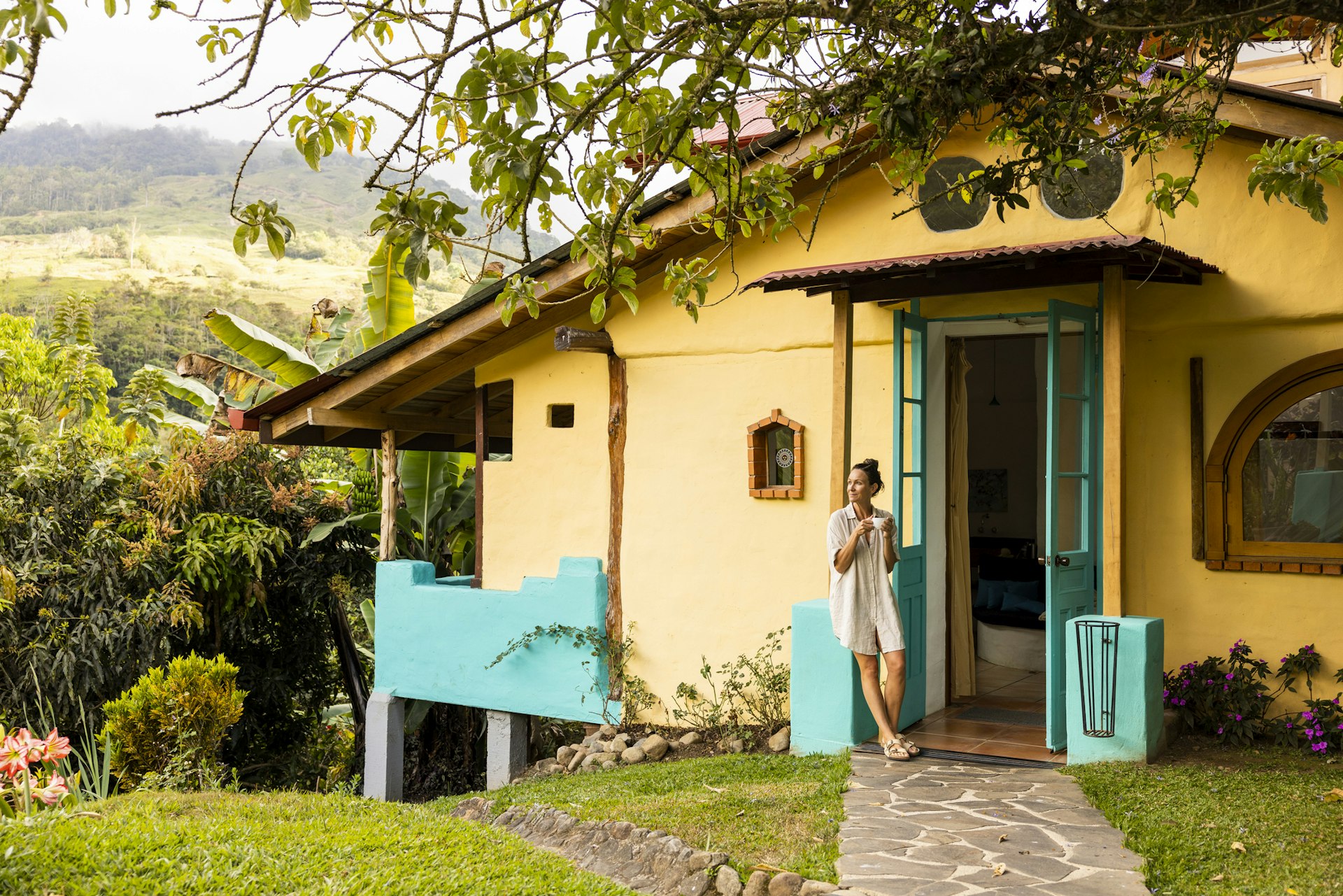
8. Set your watch to Tico time
Efficiency is not a high priority in Costa Rica. Be prepared for a slow start to almost any scheduled event, including tours, meetings, etc. This does not mean you should arrive late, but it does mean that you will spend some quality time… waiting around. Remember, this is a country that has embraced the sloth as a national symbol.
Not unrelated, things in Costa Rica often take longer than you expect. This applies especially when you're to driving to your destination (traffic, road hazards, poor driving conditions, beautiful scenery, etc.) and eating in restaurants (unhurried service, food cooked from scratch). So, take your time and enjoy!
9. Your tip means something
Tipping in Costa Rica is optional. Really! A tip is not expected, but it is much appreciated by hard-working guides and servers. If your service was ho-hum, you are not obliged. But if you receive excellent service on a tour or in a restaurant, don’t hesitate to give a tip to show your gratitude.
10. Staying safe on the trail and in the surf
The biggest danger to travelers in Costa Rica? Rip tides. To stay safe, look for warning flags on beaches: yellow means you should swim with caution and red means swimming is prohibited.
Always be cautious about swimming and surfing alone. Remember: don’t struggle against a current pulling you out to sea; instead, swim parallel to the shore until you are free from the current.
When hiking, be sure to inform a park ranger or reserve attendant before setting out, and always stay on marked trails. Watch out for snakes on the trail and never approach wild animals. (It’s illegal to feed or take a selfie with a wild animal!)
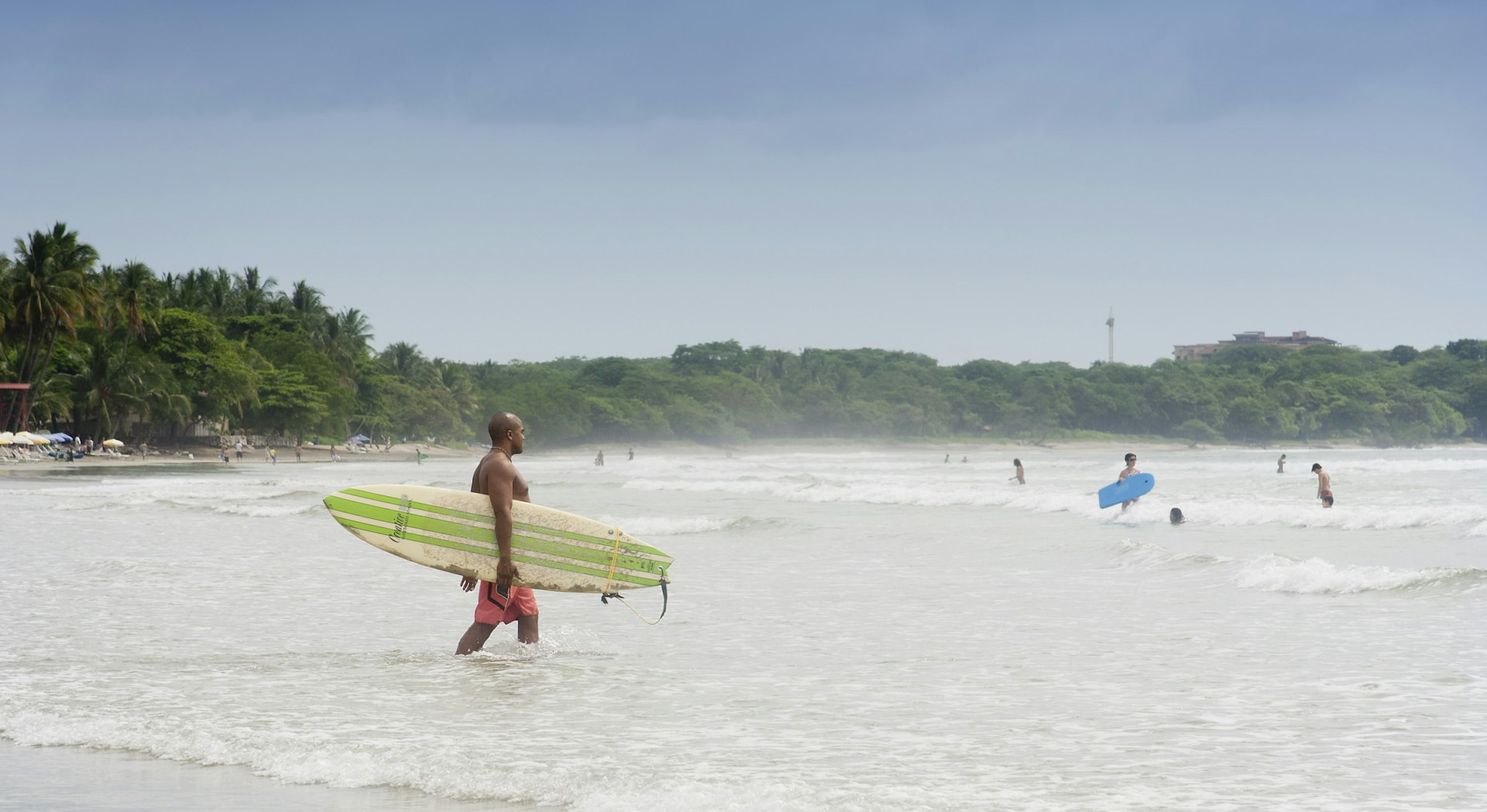
11. Driving conditions can be challenging
Driving is one of the most stressful aspects of traveling in Costa Rica. Be prepared for heavy traffic in cities and poor road conditions everywhere else.
Recent years have seen many new roads and vast improvements to Hwy 1 (aka the Interamericana), which makes for safer, more pleasant driving.
However, you are likely to find yourself driving on some roads that are narrow, winding, unpaved and/or poorly maintained. To stay safe while driving, take your time! Don’t be in a rush to reach your destination. Plan to travel during daylight hours (that is, before 6pm), as the lack of road lighting makes driving in the dark even more precarious.
12. Tap water is a-OK to drink
There may be exceptions in remote villages or off-the-grid locales. For the most part, however, the tap water in Costa Rica is safe to drink. So, there’s no need to purchase single-use plastic bottles. Bring your own water bottle to save money and save the planet!
13. High-quality healthcare is available
The healthcare system in Costa Rica is ranked among the best in the world (according to the World Health Organization and the United Nations), so in case of minor mishaps or unfortunate emergencies on your trip, you will be well taken care of.
Although the country’s public healthcare system (Caja) provides free universal coverage for citizens and permanent residents, travelers and ex-pats need to cover their own costs.
There’s also a private healthcare system, which may be covered by US or European health insurance. Medical consultations, procedures and medications are relatively affordable in Costa Rica, but travelers’ insurance with medical coverage is always recommended.
In case of emergency, call 911.
Explore related stories
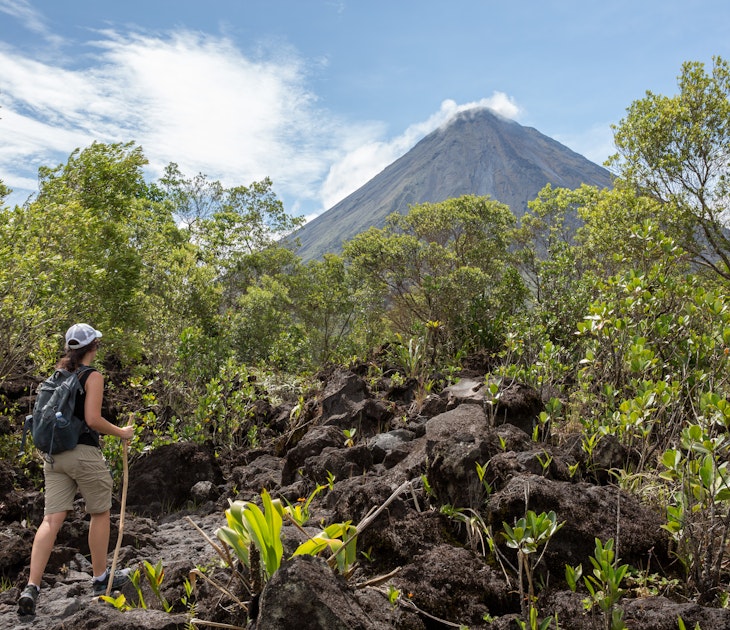
Wildlife & Nature
Mar 3, 2024 • 7 min read
Trying to decide where to go in Costa Rica? Don't miss these beautiful places.

Feb 19, 2024 • 7 min read

Jan 26, 2024 • 9 min read

Jan 25, 2024 • 4 min read

Dec 3, 2023 • 7 min read

Oct 6, 2023 • 4 min read

Sep 14, 2023 • 7 min read
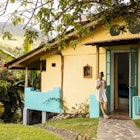
Sep 3, 2023 • 5 min read

Aug 14, 2023 • 9 min read
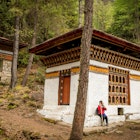
Apr 19, 2023 • 6 min read
Costa Rica Tours & Vacations

Biodiverse, brilliantly colorful and naturally breathtaking, Costa Rica embraces a slower pace of life.
An adventure hotspot for some, a cultural haven for others and a tropical paradise for most, Costa Rica definitely lives up to its translation as the ‘rich coast.’ And as you journey under lush jungle canopies and through laidback surf towns, you’ll soon be rich with memorable experiences. Lean into the slower pace of life as you become a pro at spotting toucans in Monteverde’s steamy cloud forests or listening out for the distant whoop of white-faced capuchins in Manuel Antonio. The phrase ‘hustle and bustle’ isn’t in Costa Rica’s vocabulary, as you’d expect from a country whose unofficial motto is ‘ pura vida ’ – the pure life.
Our Costa Rica trips
Let's create an exclusive trip for your group.
Costa Rica tour reviews
Filter by rating
Costa Rica Experience
Central American Journey
Costa Rica Family Holiday
Articles of Costa Rica
Costa Rica or Mexico: Which country to check off next?
The best thing about a family tour? Seeing your children make life-long friends
The best time of year to travel to Costa Rica
How to connect with Costa Rica’s indigenous Terraba community on your travels
6 ways you can celebrate, support and connect with Indigenous cultures in 2023
9 ways to get to know a place through multi-active adventures in 2023
7 unforgettable wildlife experiences for 2023
Costa Rica or Guatemala? The Central American country you need to travel to next
Costa Rica at a glance
Capital city.
San Jose (population approximately 340,000)
Approximately 5.1 million
(GMT-06:00) Central America
CALLING CODE
Electricity.
Type A (North American/Japanese 2-pin) Type B (American 3-pin)
Learn more about Costa Rica
Culture and customs.
Costa Rican culture can be summed up in two words: 'pura vida', or the pure life. It's a greeting, farewell and a way to show appreciation. Like any good life motto, pura vida is better experienced than explained. It means being friendly and polite, taking it easy and being thankful for what you have. Costa Ricans' carefree way of life, coupled with living in one of Central America's most progressive and prosperous nations, makes the locals some of the happiest in the world.
You'll find that people in Costa Rica are generally in less of a hurry than most North Americans or Europeans. Following what is affectionately known as 'Tico time', people will often be fashionably late, except for things with schedules – Tico time does not apply at work, the movies or the train station.
Costa Ricans (or Ticos and Ticas) are known for their conflict-averse nature. Peace is so highly valued here that their army was abolished in 1949, with all funds reallocated to create an 'army' of teachers instead.
History and government
Ancient history.
Like most Central American countries, indigenous communities thrived for thousands of years as hunter-gatherers, and it's believed that humans have lived in Costa Rica's jungles and rainforests for as many as 10,000 years. However, with no urbanized civilization like the Aztecs or Mayas, and little to no cultural preservation during the time of Spanish colonization, not much is known about Costa Rica's true indigenous populations.
Colonization, independence, and trade
At the time of Spanish colonization, it was estimated that 400,000 people lived in what is now known as Costa Rica. Christopher Columbus arrived in the region in 1502 on his fourth voyage, leading to the settlement of the first Spanish colony in Costa Rica.
As settlements grew, indigenous populations dwindled due to disease and forced labor. After around a century, the population had fallen to 20,000, and a century later, down to 8000.
In 1821, the Americas broke free of Spanish control following the Mexican War of Independence. Costa Rica became part of the Federal Republic of Central America in 1823 before gaining complete independence in 1838
Costa Rica eventually found its feet in the global coffee trade, and by the end of the century, coffee crops accounted for nearly 90% of Costa Rica's exports and 80% of its foreign income. Not only was coffee production an indicator of wealth in Costa Rica, it was also a powerful political tool prompting the emergence of other industries, including the banana trade, which surpassed coffee exports in the early 20th century.
Costa Rica's economy relies on eco-tourism, and the country has championed the idea that the 'rich coast' refers not to resources dug from the ground but to the natural wonders above ground. The easygoing attitude of Ticos comes from a love of their country and pride that their democracy has endured in a conflict-ridden region.
Eating and drinking
Costa Rican cuisine is wholesome and fresh, with influence from Spanish , South American , and Caribbean culinary traditions. On the Caribbean coast, you'll find dishes with Afro-Caribbean flair, usually featuring more meats, spices and coconut milk.
Capital city, San Jose, not only has an up-and-coming food scene but has established itself as the craft beer hub of Costa Rica. Enjoy seasonal samplings on a San Jose Bites and Sites tour with Urban Adventures
Look out for these favorite dishes and drinks across Costa Rica:
What to eat in Costa Rica
- Gallo pinto Gallo pinto, the most common side dish in Costa Rica and across the Americas is served alongside meals morning, noon and night. It’s made of rice, beans, onions, peppers and spices, and the name translates to ‘speckled rooster’ because of the pops of color in the rice.
- Casado If you eat at a ‘soda’ or a traditional Costa Rican restaurant, when traveling, chances are a casado will be on the menu. Although there are multiple variations of this tasting plate, you’ll likely get served up some gallo pinto, fried plantains and salad with either chicken, beef or fish, and freshly squeezed juice, covering all your food groups in one.
- Chifrijo Chifrijo is a common bar snack in Costa Rica. The word is a combination of its two main ingredients – chicharrones (fried pork rinds) and frijoles (beans). The chicharrones and beans are layered together and topped with guacamole and pico de gallo and served with fresh tortilla or plantain chips for dipping.
- Ceviche While ceviche is probably more often associated with Peru, the Tico version is a delicious variation. Made with raw fish cured in citrus juice, onions, coriander and peppers and served with tortilla chips or fried plantains, this dish is light, refreshing and a great start to a meal.
- Patacones Patacones are deep-fried green plantains that are ideal for a snack or as a dipping device for chifrijo, guacamole or pico de gallo.
- Sopa negra Sopa negra is a Costa Rican black bean soup, often flavoured with tomatoes and spices and served with egg and coriander.
- Rondon Rondon is a seafood chowder that comes from Jamaica. Other Caribbean countries who’ve adopted the recipe have put their own spin on it with their choice of seafood – fish, crab, small lobster – as well as the coconut milk broth and spices.
- Arroz con leche Sweet tooths can rejoice with this Central and South American dessert staple of arroz con leche – a spiced, sweet rice pudding made with cinnamon, cloves and raisins. Try it as a warming snack or a special dessert.
- Pejibayes This unusual fruit comes from a type of palm known as the peach palm – the same tree that heart of palm comes from. After boiling for a few hours and discarding the inner seed and outer skin, the fruit is finished with a squeeze of lime or a dollop of mayonnaise to eat the local way. The taste has been likened to a mix between a squash, potato and cashew.
What to drink in Costa Rica
- Coffee Costa Rica produces some of the best coffee in the world, so you’re set for your caffeine fix during your time in Costa Rica. It has both the ideal soil composition and the perfect elevation to grow the perfect coffee crop, so be sure to sample as many fresh local brews as you can.
- Alcohol If you’re looking for drinks of the alcoholic variety, try guaro – a liquor made from sugar cane, best enjoyed in a guaro sour (with lime, simple syrup and soda). The craft beer scene is growing quickly here as well, so look for microbrews from a multitude of small local breweries. And if you’re wondering how to say cheers, just say ‘pura vida’ again!
- Naturales Naturales – sometimes also called refrescos or batidos – are delicious fresh fruit juices blended with either milk or water. You can find them all over the country at small kiosks or booths in a variety of flavors like mango, pineapple and guanabana.
Geography and environment
Costa Rica is known for its incredible beaches and magical rainforests. But the backbone of this coastal nation is truly stunning mountain ranges, many of which contain both active and dormant volcanoes. You’ll also find heaps of waterfalls, lakes and rivers throughout the country. For this reason, adventure sports such as zip-lining, whitewater rafting and cycling are popular in inland destinations such as La Fortuna and Montverde, and adventure-packed activities are a popular way to experience the country.
Get active on an 8 day Costa Rica: Hike, Bike & Raft trip
Costa Rica’s diverse topography is home to many microclimates, and the temperature and weather can vary dramatically depending on elevation and how close you are to the coast. Rainforests, cloud forests, jungles and mountains exist side by side. The varied land and climate foster over 5% of the world’s total biodiversity.
Witness ecological diversity firsthand on a 10 day Best of Costa Rica trip Costa Rica is home to over 500,000 species of plants and animals. Those seeking to spot local wildlife will be enthralled by Costa Rica’s unique flora and fauna. And the spectacular variety of wildlife isn’t limited to the land – scuba diving is another popular activity, with Costa Rica boasting some of the most beautiful bays, beaches and reefs in the world.
Four of the most beautiful beaches in Costa Rica
- Tortuguero National Park One of Costa Rica’s best-kept secrets, this national park is the unspoiled paradise you’ve been searching for. Take a dip in Tortuguero’s warm turquoise waters or just relax on the idyllic shores
- Manuel Antonio A true eco-playground, you can spend a day exploring misty rainforests and searching for sloths and monkeys before cooling off on one of the delightful beaches. Head into Quepos town for some good food and fiery nightlife after the sun sets.
- Jaco Once a sleepy beach town, Jaco’s proximity to San Jose has made it a one-stop shop for those seeking big waves and even bigger parties. The gateway to national parks and active adventures , there’s no denying Jaco’s uber-cool surf-town vibe.
- Corcovado Well off the tourist trail, Corcovado isn’t your average beach experience. Boasting a diversity of colors, landscapes and wildlife, Corcovado is perfect for those seeking beaches with character and charm. Oh, and it’s got the largest primary forest in the American Pacific, if you needed another reason to visit.
Whether you’re buying souvenirs or groceries, your best bet in Costa Rica is to shop at local markets. Head to the Mercado Calle Nacional de Artesania y Pintura (National Craft Market) in San Jose for the best selection of handmade goods and souvenirs. Here you can stroll through dozens of stalls selling handmade hammocks and painted oxcarts as well as t-shirts and shot glasses that say ‘pura vida’. San Jose's Mercado Central is also a great place to grocery shop and pick up souvenirs, and vendors offer everything from fresh produce to coffee to leather goods.
You’ll often see carved wooden masks for sale but, while all of them are beautiful, for a truly authentic mask, you should aim to buy directly from indigenous communities who make them.
As in any destination, check that any souvenirs made from natural materials have been ethically sourced. Avoid buying products made from rainforest woods that were not sustainably harvested, sea turtle shells and other animal products. Before heading home, check with your local customs officials to ensure that you are able to bring certain items back into your home country. Australia and New Zealand, for example, have strict quarantine laws regarding some materials, such as food and wooden objects.
Festivals and events
Costa Ricans definitely know how to throw a party, and place a lot of importance on food, family and community. Many Costa Rican festivals celebrate the country’s farming and ranch heritage, and a lot have a Catholic element. No matter which festival you’re celebrating, you’re pretty much guaranteed a deep dive into Tico culture. Here are a few of the biggest festivals in Costa Rica:
Las Fiestas de Zapote
This festival, celebrated from Christmas until New Year’s Eve every year in the town of Zapote, is a week-long fiesta. It’s home to the biggest rodeo in Costa Rica, many carnival games, as well as rides and food stalls.
Palmares Fiestas
After the festivities of Christmas, New Year’s and the Zapote festival have wound down, it’s time for the Palmares festival. In mid-January, more than one million Ticos and tourists head to the town of Palmares for one of the largest festivals in Costa Rica. Revelers drink beer, enjoy food, listen to international acts and watch traditional bullfighting and the ‘tope’ – a horse parade through the streets.
Fiesta de los Diablitos
The ‘Festival of the Little Devils’ is celebrated twice each year (in December and February) in the indigenous communities of Boruca and Rey Curre. The festival celebrates the triumph of the original inhabitants over the Spanish conquistadors, with dancing and performances featuring costumes and painted masks.
Limon Carnival
If you’re traveling to Costa Rica in October, you’ll probably find yourself in the festive spirit as you touch down, as this is the month of Carnival. Notably, it’s when the Caribbean town of Puerto Limon celebrates this annual festival, with elaborate costumes, floats, parades and food stalls aplenty, spread across two weekends.
Further reading
For inspiring stories to prepare you for your Costa Rica adventure, check out these books:
- Green Phoenix: Restoring the Tropical Forests of Guanacaste, Costa Rica – William Allen
- The Ticos: Culture and Social Change in Costa Rica – Mavis Hiltunen Biesanz
- Off the Map – Dorien Kelly
- The Costa Rica Reader: History, Culture, Politics – Steven Palmer and Ivan Molina
- Mamita Yunai – Carlos Luis Fallas
- Unica Looking at the Sea – Fernando Contreras Castro
- Monkeys are made of Chocolate: Exotic and Unseen Costa Rica – Jack Ewing
Costa Rica travel FAQs
Do i need a covid-19 vaccine to join an intrepid trip.
Trips from 1 January 2023 onwards
From 1 January 2023, Intrepid will no longer require travelers to provide proof of vaccination against COVID-19 (excluding all Polar trips and select adventure cruises).
However, we continue to strongly recommend that all Intrepid travelers and leaders get vaccinated to protect themselves and others.
Specific proof of testing or vaccination may still be required by your destination or airline. Please ensure you check travel and entry requirements carefully.
When is the best time to visit Costa Rica?
Year-round tropical warmth means there really isn’t a bad time to visit Costa Rica. December to April are normally the driest months; however, Costa Rica’s diverse topography and blanket of rainforests suggest that you should be prepared for at least some rain any time of the year – a very small price to pay for such lush surroundings.
The good news is that even during the rainiest of seasons, the rainfall tends to be limited to a couple of hours a day – just enough time for you to enjoy a cup of Costa Rica's acclaimed coffee in one of its many cafes.
The most popular time to visit Costa Rica is between December and March – the driest and hottest months along the Pacific Coast. May to October brings the most rainfall across the country, but this is dependent on the region, as the wetter seasons are extended on the Osa Peninsula and northern sections of the Caribbean Coast.
Do you need a visa to travel to Costa Rica?
Generally, Costa Rica grants visas to most countries’ passport holders for a period of 90 days, providing travelers have a valid passport, a return or onward ticket and their trip is for leisure. Some countries’ citizens must apply for a visa before leaving their home country, but most do not.
Visas are the responsibility of the individual traveler. Entry requirements can change at any time, so it's important that you check for the latest information. Please visit the relevant consular website of the country or countries you’re visiting for detailed and up-to-date visa information specific to your nationality. Check the Essential Trip Information section of your tour itinerary for more information. This is for general information only and may be subject to change. It is your responsibility to obtain relevant visa and travel information required for entry, departure and travel to each country or region you visit on your trip. You should confirm these with the relevant embassies and/or consulates.
Last updated: 14/12/2023
Is tipping customary in Costa Rica?
While tipping isn't mandatory in Costa Rica, rounding up the bill and leaving spare change at restaurants and cafes is standard practice. Many restaurants do add a service charge to the final bill which is usually a 10% gratuity; however, 500 colones (or around USD 1) of local currency is an appropriate extra amount.
What is the internet access like in Costa Rica?
Costa Rica's cities and tourist centers have wi-fi and internet access available in hotel lobbies and internet cafes. Internet access is less available in rural and remote areas.
Can I use my cell phone while in Costa Rica?
Cell phone coverage is generally good in Costa Rica's cities and metropolitan areas, although expect limited coverage in remote or mountainous areas. Ensure you have global roaming activated with your carrier if you wish to use your phone while in Costa Rica, but, be sure to check with your service provider first to find out about any fees you may incur, as sometimes this can be expensive.
Costa Rica has one state-owned phone provider – Kolbi – as well as a selection of private companies, should you wish to purchase a SIM while abroad. Depending on what connection and coverage you need during your stay in Costa Rica, a prepaid option with one of these providers may be the cheapest way to go.
What are the toilets like in Costa Rica?
Costa Rica's toilets are a mixture of flushable and squat toilets, so be prepared to encounter both. Carry your own supply of toilet paper and soap or hand sanitizer, as these aren't always provided.
What will it cost for a...?
Costa Rica's unit of currency is the colón (CRC). Here's what you can expect to pay for a:
- Cup of coffee = 500 CRC
- Naturales (fresh fruit drink) = 1600 CRC
- Bottle of beer = 1100 CRC
- Lunch at a soda (local restaurant) = 3200 CRC
- Dinner in a restaurant = 5000-9000 CRC
Can I drink the water in Costa Rica?
Although tap water is considered safe to drink in Costa Rica's cities, it's probably a good idea to avoid drinking tap water in Costa Rica. For environmental reasons, try to avoid buying small bottles of water. Ask your leader where filtered water can be found as some hotels provide this, so you’re able to use a reusable bottle. It's also advisable to avoid ice in drinks and to peel fruit and vegetables rather than eating washed or unwashed produce.
Are credit cards widely accepted in Costa Rica?
Major credit cards are accepted by most large shops, hotels, and restaurants, although smaller vendors and market stalls often only accept cash, so be sure to have a combination of both when traveling.
What is ATM access like in Costa Rica?
ATMs are easily found in large cities and airports, although are less common in rural and remote areas. When traveling out of the city, come prepared by having enough cash, as ATMs aren't always an option.
What public holidays are celebrated in Costa Rica ?
- 1 Jan: New Year’s Day
- 11 April: Juan Santamaria Day
- April: Maundy Thursday (the day before Good Friday)
- April: Good Friday (the Friday before Easter)
- April: Easter Sunday
- 1 May: Labor Day
- 25 July: Guanacaste Day
- 2 August: Our Lady of Los Angeles Feast Day
- 15 August: Mother’s Day
- 15 September: Independence Day
- 16 October: Natural Cultures Day
- 25 December: Christmas Day
Please note: Costa Rica public holidays may vary.
Is Costa Rica safe for LGBTQIA+ travelers?
Generally speaking, Costa Rica is a safe destination for LGBTQIA+ travelers. Same-sex relationships are legal and, in 2015 Costa Rica became the first country in Central America to recognize gay relationships; however, recognition of same-sex marriage is currently pending government approval. In many places in Costa Rica, public displays of affection might attract unwanted attention, but there are a few places in Costa Rica with a thriving LBGTQI scene. Quepos has long been known as the LGBTQIA+ capital of Costa Rica, and the actual capital, San Jose, has a good number of gay bars and clubs.
For more detailed and up-to-date advice, we recommend visiting Equaldex or ILGA before you travel.
If you are traveling solo on an Intrepid group tour, you will share accommodation with a passenger of the same gender as per your passport information. If you don’t identify with the gender assigned on your passport, please let us know at time of booking and we’ll arrange the rooming configuration accordingly. A single supplement is available on some tours for travelers who do not wish to share a room.
What is the weather like in Costa Rica?
Being in the deep center of Central America, Costa Rica gets hot and oh so humid. However, there’s a whole number of microclimates inside its borders – that’s a fancy way of saying that the terrain is pretty hilly – so depending where you are in the country, the temperature may fluctuate. Generally speaking, Costa Rica enjoys a tropical climate year-round with temperatures averaging at 64°F minimum and 81°F maximum.
Costa Rica’s Pacific Coast has tropical heat almost all year round. March is the driest and hottest month, and May to October brings the wet season to the region. The Western Central Valley, including cities like San Jose, indirectly follow the Pacific Coast’s weather trends.
The Caribbean Coast has pretty steady rainfall all year round with no distinct dry season. September to October and February to March are considered the best months to travel to this side of the country as they are drier than most, but still experience rainfall. The Eastern Central Valley usually follows a similar weather pattern.
Is Costa Rica accessible for travellers with disabilities?
Intrepid is committed to making travel widely accessible, regardless of ability or disability. That’s why we do our best to help as many people see the world as possible, regardless of any physical or mental limitations they might have. We’re always happy to talk to travelers with disabilities and see if we can help guide them toward the most suitable itinerary for their needs and, where possible, make reasonable adjustments to our itineraries.
Much of Costa Rica’s travel highlights are based around the coast and in nature, so depending on travelers’ level of mobility, this may present obstacles. Many national parks are difficult to visit for travelers using a wheelchair, as jungle paths are mostly remote and not stable. Manuel Antonio does have wider paths and more accessible routes to venture into the rainforest, and the wide boardwalks and beaches are wheelchair friendly. The capital, San Jose, is a bit tricky to get around, with rough sidewalks and a lack of ramps. There are, however, taxi companies in the capital that offer wheelchair-accessible vans.
If you do live with a visual, hearing, or other impairment, let your booking agent or group leader know early on so they’re aware and suitable arrangements can be made. As a general rule, knowing some common words in the local language, carrying a written itinerary with you, and taking to the streets in a group, rather than solo, can help make your travel experience the best it can be.
What to pack for a trip to Costa Rica
Packing for a trip to Costa Rica doesn't have to be difficult as long as you take into account the weather conditions you're likely to experience while you're over there. This means packing lightweight, comfortable clothing, walking shoes for exploring, appropriate sun protection items like sunscreen and hats, and a backpack so you can carry your camera and a reusable drink bottle.
What language is spoken in Costa Rica?
Spanish is the official language of Costa Rica, however, there are five indigenous languages that are still spoken throughout the country, as well as a mixture of English, Portuguese, German, and French spoken by a percentage of the population.
How do I stay safe and healthy while traveling?
From Australia?
Go to: Smart Traveller
From Canada?
Go to: Canada Travel Information
From the UK?
Go to: UK Foreign Travel Advice
From New Zealand?
Go to: Safe Travel
From the US?
Go to: US Department of State
The World Health Organisation also provides useful health information.
Do I need to purchase travel insurance before traveling?
Absolutely. All passengers traveling with Intrepid are required to purchase travel insurance before the start of their trip. Your travel insurance details will be recorded by your leader on the first day of the trip. Due to the varying nature, availability and cost of health care around the world, travel insurance is very much an essential and necessary part of every journey.
For more information on insurance, please go to: Travel Insurance
Does my trip support The Intrepid Foundation?
Yes, all Intrepid trips support the Intrepid Foundation. Trips to this country directly support our global Intrepid Foundation partners, Eden Reforestation Projects and World Bicycle Relief. Intrepid will double the impact by dollar-matching all post-trip donations made to The Intrepid Foundation.
Eden Reforestation Projects
Eden Reforestation Projects are helping to mitigate climate change by restoring forests worldwide; they also hire locally and create job opportunities within vulnerable communities. Donations from our trips support restoration across planting sites in 10 countries around the globe. Find out more or make a donation World Bicycle Relief
World Bicycle Relief provides people in low-income communities with bicycles to mobilize school kids, health workers, and farmers in far-out areas – giving them access to vital education, healthcare, and income. Donations help provide Buffalo Bicycles – specifically designed to withstand the rugged terrain and harsh environment of rural regions – to those who need them most. Find out more or make a donation

A Beautiful Costa Rica Itinerary 10 Days – Rainforests, Beaches, & Wildlife
By: Author Charles
Posted on August 22, 2023
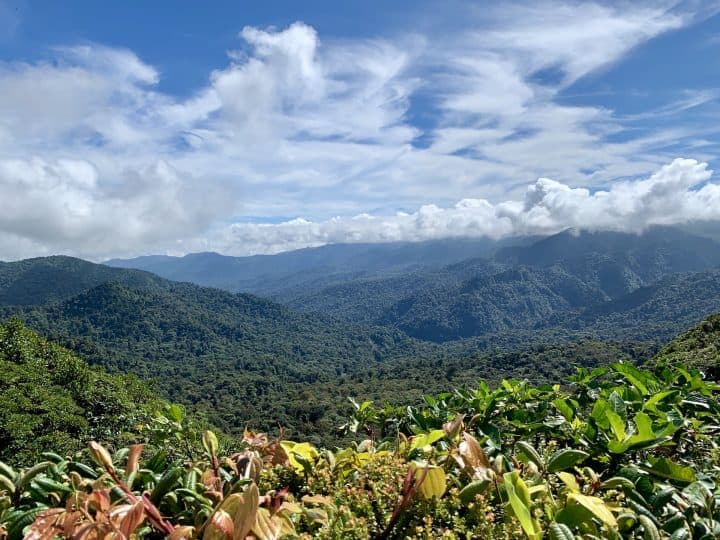
Are you looking for a country that offers beaches, rainforests, wildlife, adrenaline activities, volcanoes, hikes and more?
Well, Costa Rica is the perfect choice if you are interested in having a diverse and exciting vacation that has it all.
Throughout this guide I will go through what a 10-day Costa Rica itinerary can look like. Not only will I walk through a detailed day by day breakdown of the trip, but I will also point out several important and helpful things to know when planning out a trip.
At the end of the reading through this itinerary, you should have a great sense of how to go about 10 days in Costa Rica.
* Affiliate Disclosure : This post may contain affiliate links, which means I may receive a commission if you make a purchase through the links provided, at no additional cost to you. Thanks for supporting the work I put into TripTins!
1) Costa Rica Itinerary
Here is a high-level view of what this 10-day Costa Rica itinerary will look like. In all, it will focus in on 3 main areas of the country giving you enough time to truly enjoy each place you visit.
Day 1 – Poas Volcano & La Paz Waterfall Gardens
- Day 2 – La Fortuna / Arenal
- Day 3 – La Fortuna / Arenal
Day 4 – Rio Celeste Day Trip
- Day 5 – Travel from Arenal to Monteverde
- Day 6 – Monteverde
- Day 7 – Monteverde
Day 8 – Travel from Monteverde to Manuel Antonio
- Day 9 – Manuel Antonio
- Day 10 – Manuel Antonio
I would consider this a good mix of adventure, wildlife, and relaxing, as you get to experience a little bit of everything that Costa Rica offers.
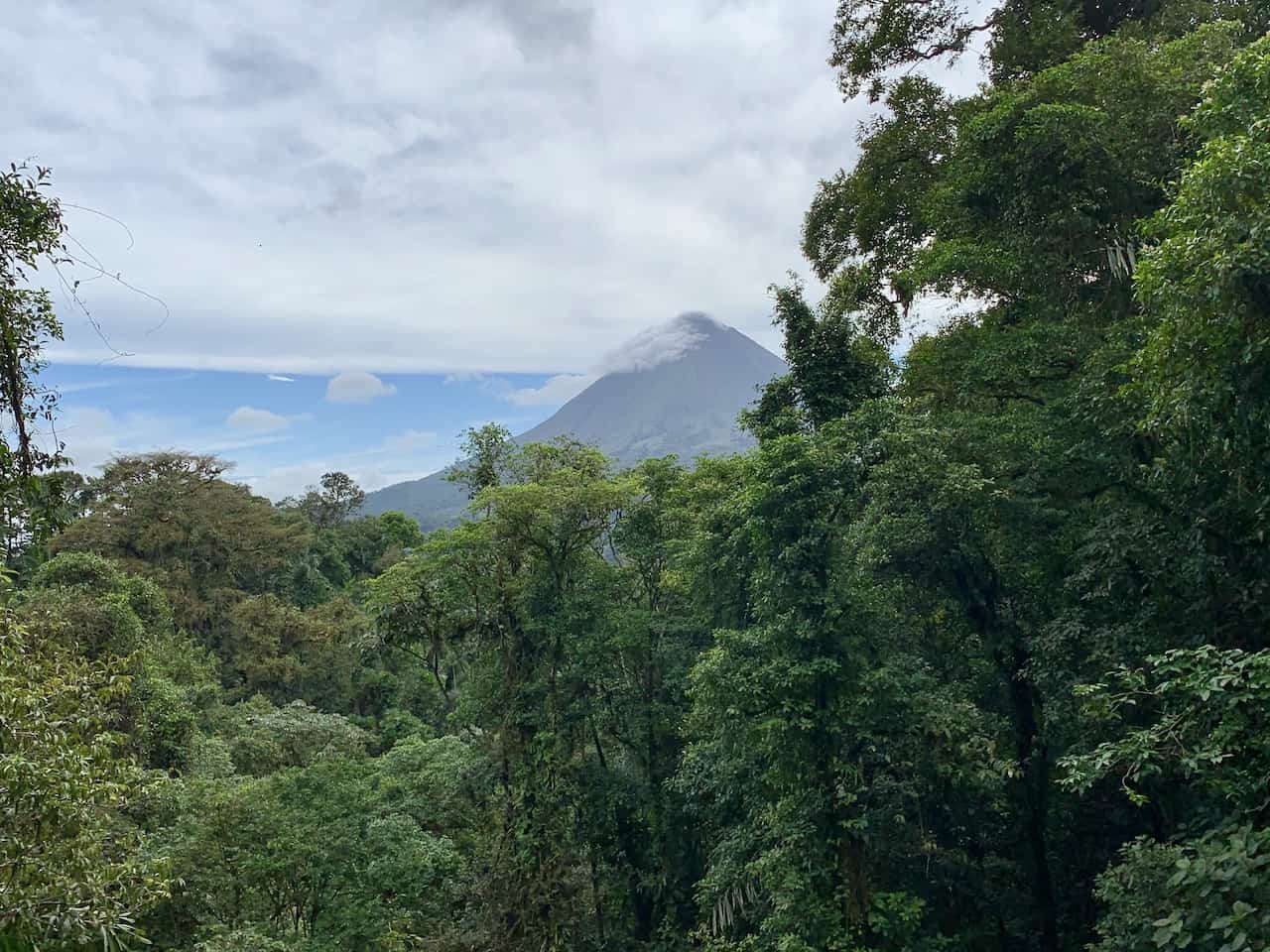
2) Things to Know Before You Go
Before jumping into the day by day itinerary, I did want to mention some important things to know about this trip in general.
10 Full Days : As you can see from the above overview, this is truly 10 full days in the country . This means arriving on Day 0 and leaving later on day 10 or sometime on day 11. If you need the itinerary to be 10 days including travel, there are ways to cut back on the above.
Flights : For this itinerary in particular, it is easiest to fly into and out of San Jose airport (SJO) . Day 1 will essentially start in San Jose and on your journey back from Manuel Antonio, it should be about a 3 hour drive to the airport.
Car Rental : Speaking of driving, I would highly recommend renting a car during your time in the country . Having a car is a very convenient way to get around and take the trip at your own pace. The alternatives to renting a car would be public transport or private drivers.
Renting a Car : Feel free to take a look at Rentalcars.com for a variety of car options to choose from for your time in Costa Rica. You will be able to filter by price, car type, rental company, & more to find the best car rental for your trip.
Time of Year : Costa Rica is known for its wet and dry season. The wet or rainy season runs from May to November, while the dry season runs from December to April . If you want the best chance of clear weather with less chance of rainfall then opt for the dry season for the trip.
Travel Guides : Throughout this Costa Rica itinerary I have linked to other travel guides on the site that dive into more details about certain sites, hikes, and experiences. Be sure to check those out to learn more!
Considering travel insurance for Costa Rica? World Nomads offers coverage for more than 150 adventure activities as well as emergency medical, lost luggage, trip cancellation and more. For years, World Nomads has been protecting, connecting & inspiring independent travelers, offering travel insurance & safety advice to help you travel confidently. Their mission is to support and encourage travelers to explore their boundaries . World Nomads has simple and flexible travel insurance that has been designed by travelers for travelers. Even if you leave home without travel insurance or your policy runs out, you can buy or extend out on the road. Get a quote for a World Nomads travel insurance policy today!
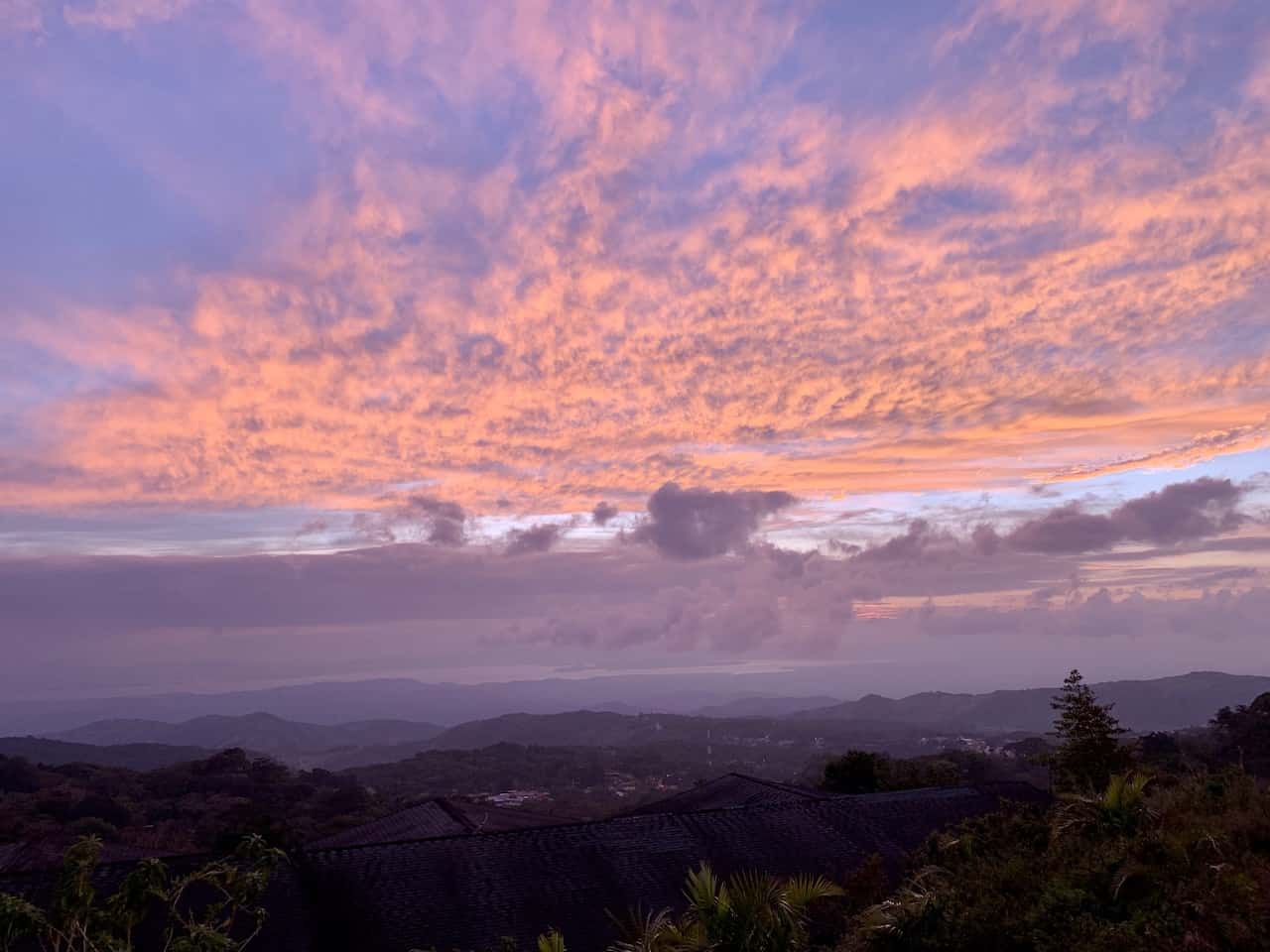
3) Costa Rica 10 Day Itinerary Map View
The map below shows the complete 10-day route starting and ending in San Jose , while making its way through La Fortuna, Monteverde, and Manuel Antonio.
Also pinpointed on the map are the various sights and attractions that you will have the chance to visit during your time in each one of these towns.
4) Where to Stay in Costa Rica
I thought it may be easier to lay out in one section some of the top recommended places to stay throughout a visit to Costa Rica.
Altogether there will be 4 hotels to book for this itinerary. The nightly breakdown will look something like this:
- San Jose (arriving on day 0): 1 Night
- La Fortuna: 4 Nights
- Monteverde: 3 Nights
- Manuel Antonio: 2 Nights*
*If leaving on day 11, it will end up being 3 nights in Manuel Antonio instead of 2
San Jose Hotels
- Hotel Presidente
- Autentico Hotel
- Where I Stayed: Hilton Garden Inn San Jose
La Fortuna Hotels
- Arenal Observatory Lodge & Spa
- Tabacon Thermal Resort & Spa
- Where I Stayed: Hotel Los Lagos Spa & Resort
Monteverde Hotels
- Monteverde Lodge & Gardens
- Camino Verde B&B Monteverde Costa Rica
- Where I Stayed: El Establo Mountain Hotel
Manuel Antonio Hotels
- Makanda by The Sea Hotel
- Hotel San Bada Resort & Spa
- Where I Stayed: Parador Resort & Spa
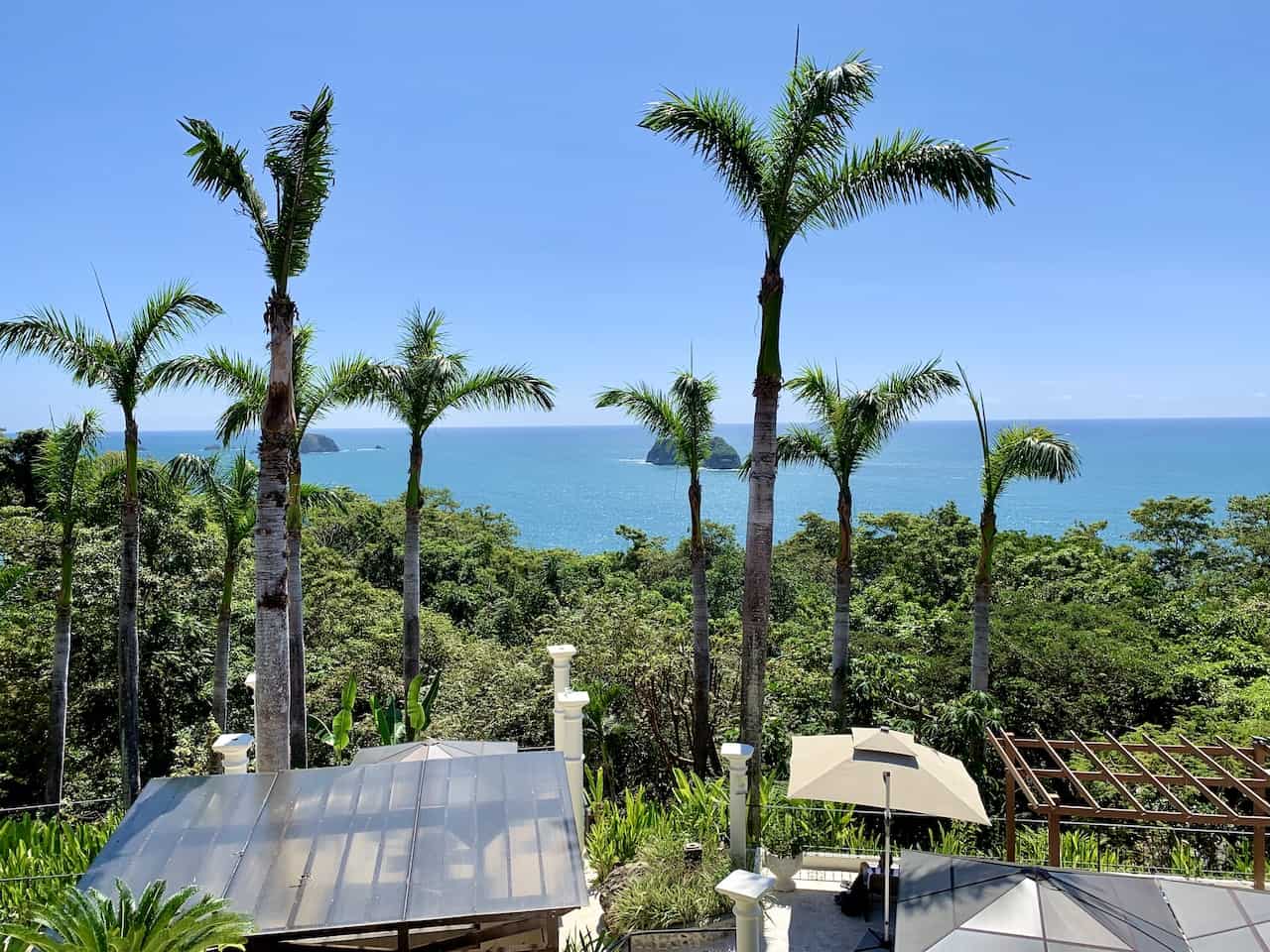
5) 10 Days in Costa Rica Breakdown
To better visualize the itinerary, here is a day by day breakdown of what 10 days in Costa Rica can look like .
You can see the various activities, driving portions, and overnights that make up the itinerary as a whole.
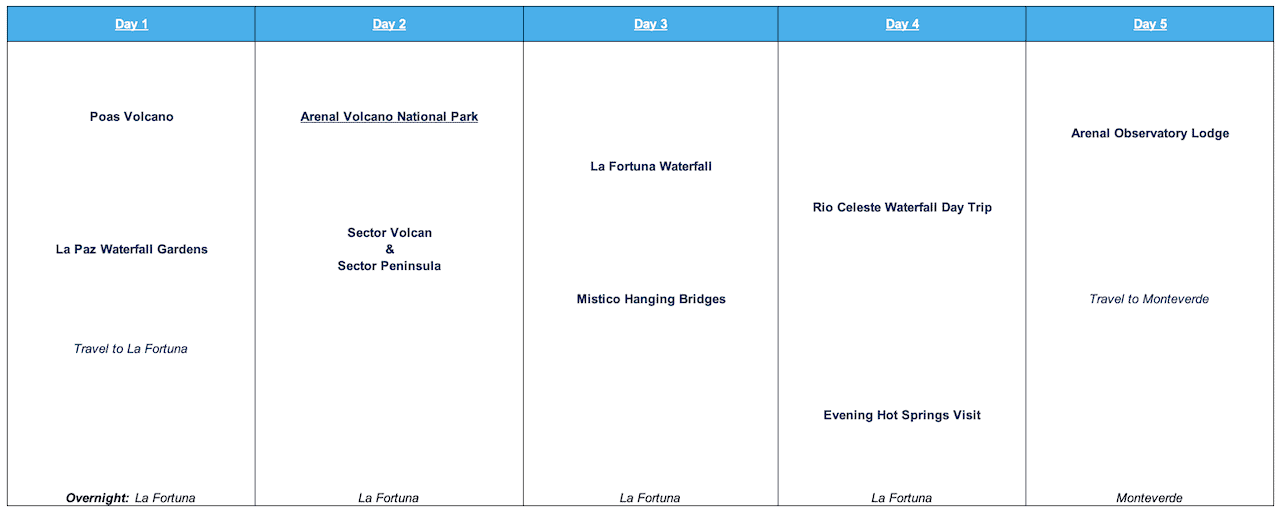
6) Costa Rica Itinerary 10 Days
Let’s now get a bit more detailed and walk through what a day by day itinerary entails.
After arriving in San Jose on day 0, picking up your rental car and heading over to your hotel, it is time to relax for a night in San Jose.
It is now time to begin the journey exploring Costa Rica for the next 10 days. The first day entails two fantastic sites (Poas Volcano & La Paz Waterfall Gardens) as you make the drive from San Jose to La Fortuna.
Poas Volcano
The Poas Volcano is an active volcano located just 1.5 hours away from the San Jose city center .
It is known to be one of the largest craters in the world and you will get the chance to see the crater from up top.
In order to visit Poas Volcano, you must make a reservation in advance through the SINAC website for a certain day and time.
The first reservation is at 8:00AM and from then there are time slots every 20 minutes. I would recommend one of the earlier time slots in the day to account for the rest of the day’s itinerary.
After you arrive at the Poas parking lot, you will be directed to an auditorium, where you will go through a short informational and safety session. From there, you will grab a helmet and make the 10 minute walk down the pathway and towards the lookout.
On a clear day you should get a vast view of the crater down below and the surrounding landscape . Note that seeing the crater is not guaranteed as clouds can roll through at any time!
You will only be able to hang around the crater area for around 30 minutes or so before being directed back to the entrance. This is due to the safety reasons and the sulfurous gases that are emitted from the crater.
→ It is understandable if you do not want to visit Poas due to the weather being unpredictable at times and a crater sighting not guaranteed.
Another option here is to visit the Catarata Del Toro Waterfall – one of the tallest waterfalls in the country and a true highlight of Costa Rica. You can visit the waterfall after the La Paz Waterfall Gardens mentioned next.
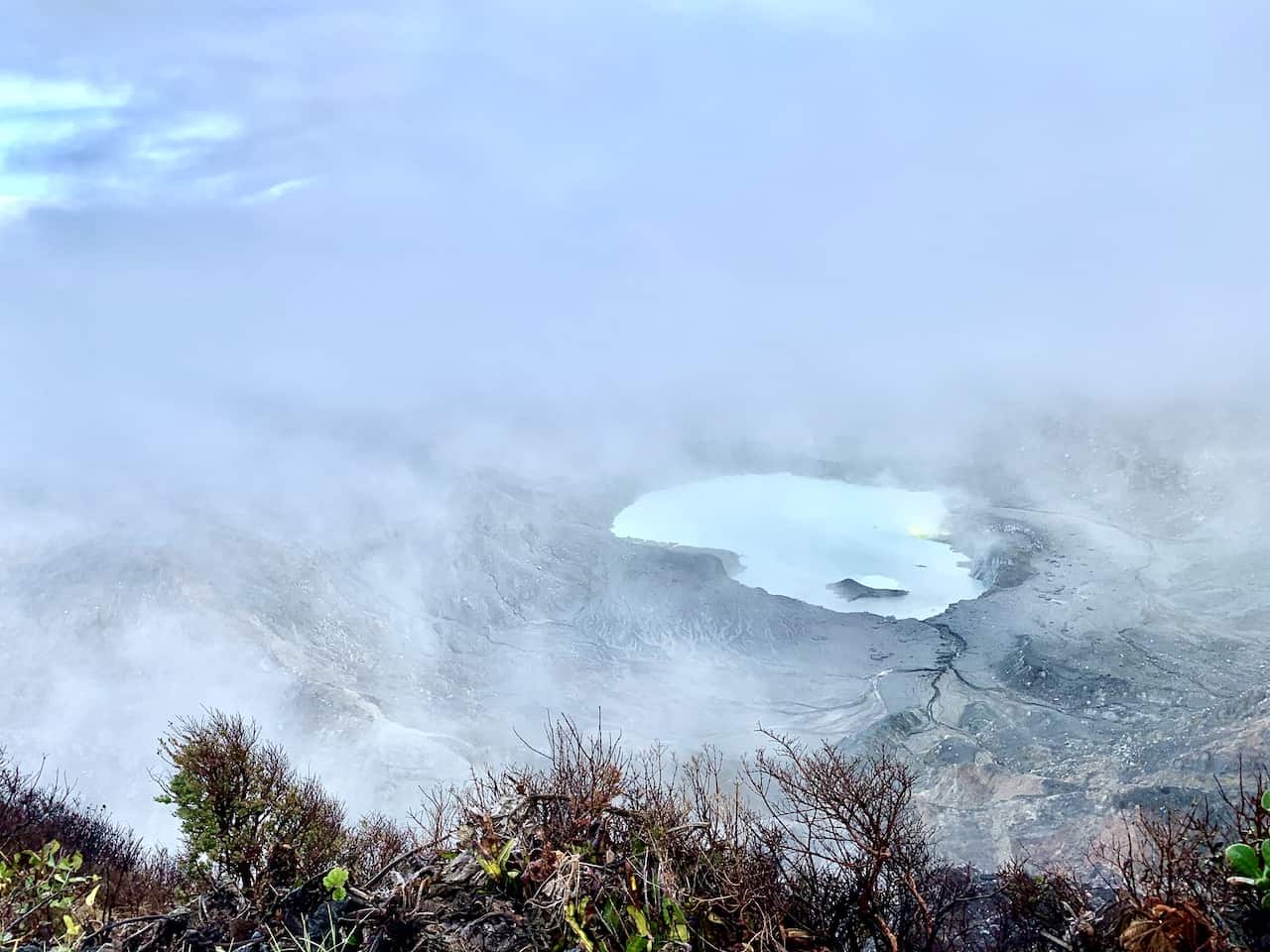

La Paz Waterfall Gardens
From the Poas Volcano it is a quick 30 minute drive to the La Paz Waterfall Gardens . Here you will find one of the most elaborate private nature reserves in the country.
There is an extensive amount of wildlife sanctuaries to visit here, with animals such as toucans, jungle cats, monkeys, hummingbirds, butterflies, and much more.
In addition to all the wildlife you will get to see, there are also hiking trails that will take you to several different beautiful waterfalls .
It is a perfect place to enjoy for a few hours as you explore the ins and outs of the Waterfall Gardens and Nature Park. If you are feeling hungry, there are also a few different restaurant options to choose from within the park itself.
After visiting the Poas Volcano and La Paz Waterfall Gardens, it is then about a 2 hour drive to La Fortuna, where you will be basing yourself for the next few nights.
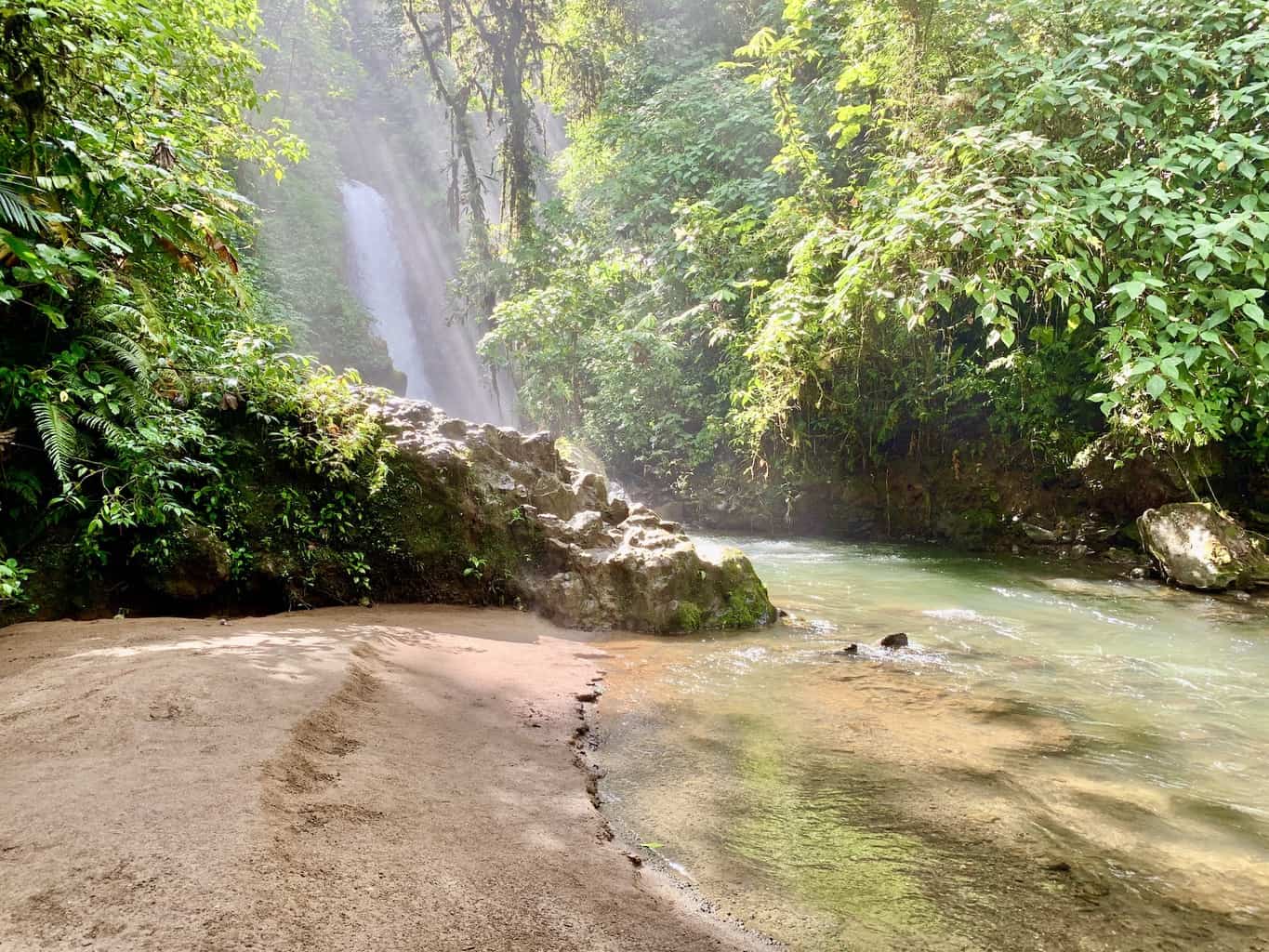
Day 2 – Arenal Volcano National Park
The first day in La Fortuna will be spent exploring the ins and outs of Arenal Volcano National Park . The National Park is one of the maintained and protected regions of the area, and it is full of various hiking trails, viewpoints, and wildlife.
Arenal Volcano National Park is split up into two main sectors – Sector Volcan and Sector Peninsula . With one ticket, you will have access to both sectors within a day.
I would recommend starting off the day visiting the Sector Volcan, where you enjoy a few different hiking trails – most notably the Las Coladas and El Ceibo loop.
Here you will walk through the rainforest, up along a lava trail, and enjoy a couple different viewpoints of the Arenal Volcano out in the distance.
Also, within the sector is another viewpoint that you can walk or drive to that offers one of the closest views to the volcano itself.
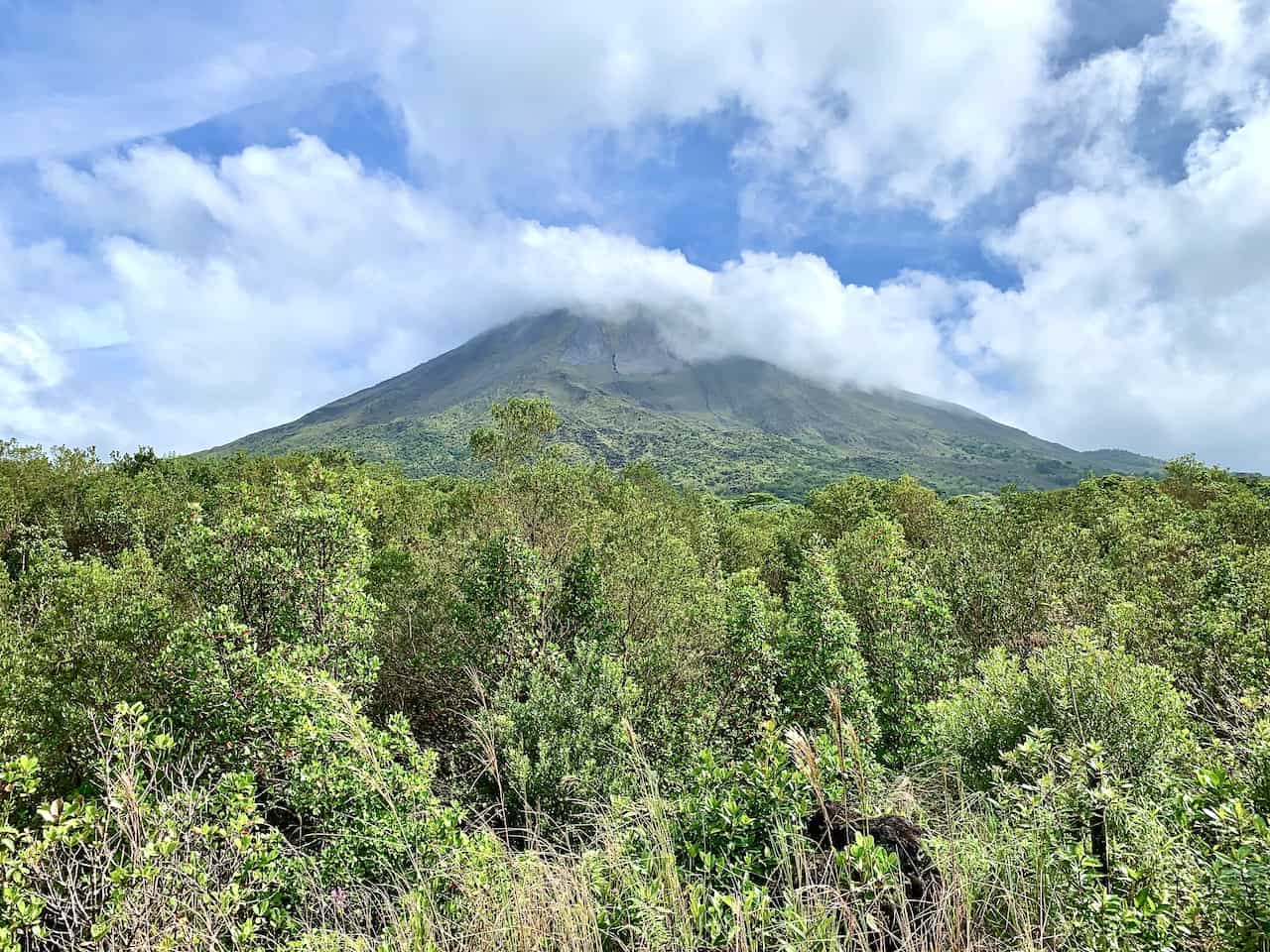
After a morning of exploring the Sector Volcan, you can spend the afternoon taking in the Sector Peninsula . This sector is located a short drive away from Sector Volcan and has another couple of hiking trails to enjoy.
The trails head off onto a peninsula and towards Lake Arenal. From there you will get some great views of the volcano with the lake in the foreground.
In addition, there is a lookout tower that gives you some great views from above.
Note that there are other places within the area to do hikes such as Arenal 1968 if you rather take a look at that instead (check out the guide to learn more)!
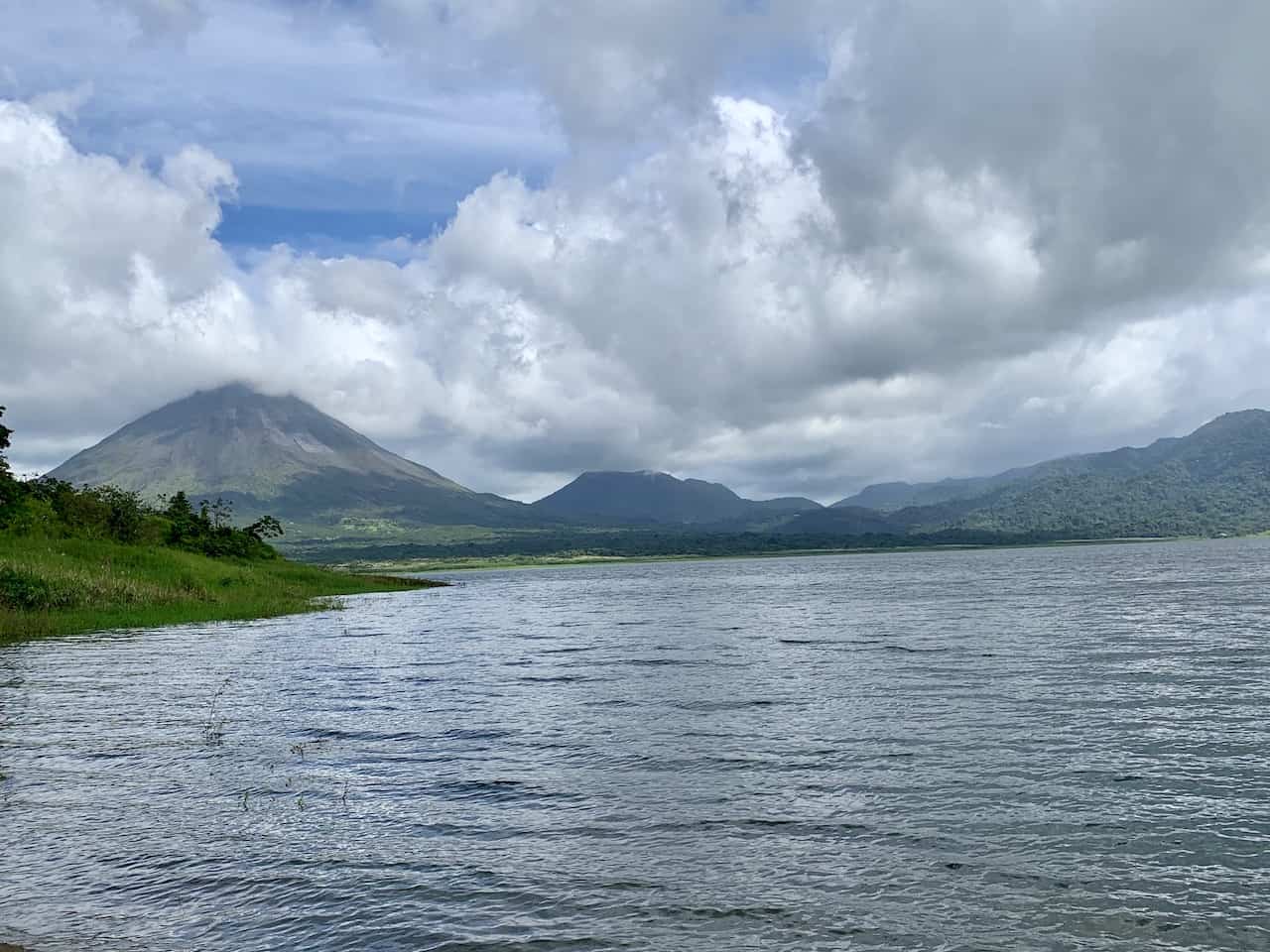
Day 3 – La Fortuna Waterfall / Mistico Hanging Bridges
On your second day in La Fortuna it is time to enjoy a waterfall and some hanging bridges.
La Fortuna Waterfall
Start off the day heading off to the La Fortuna Waterfall . I would recommend getting there as early as possible to avoid the crowds.
The waterfall is located just outside of town, and offers quite the experience to take part of. Instead of just arriving directly at the waterfall, you must first make your way down around 500 steps to reach the waterfall itself.
Once down at the bottom, you can decide to jump in the water (close to the shore) and take in the vastness of the waterfall coming down from above. In addition, there is a calmer section of water off to the side to enjoy as well.
After finishing up at the waterfall, retrace your steps back up to the entrance, as you walk up the 500 steps to end your time at the La Fortuna Waterfall.
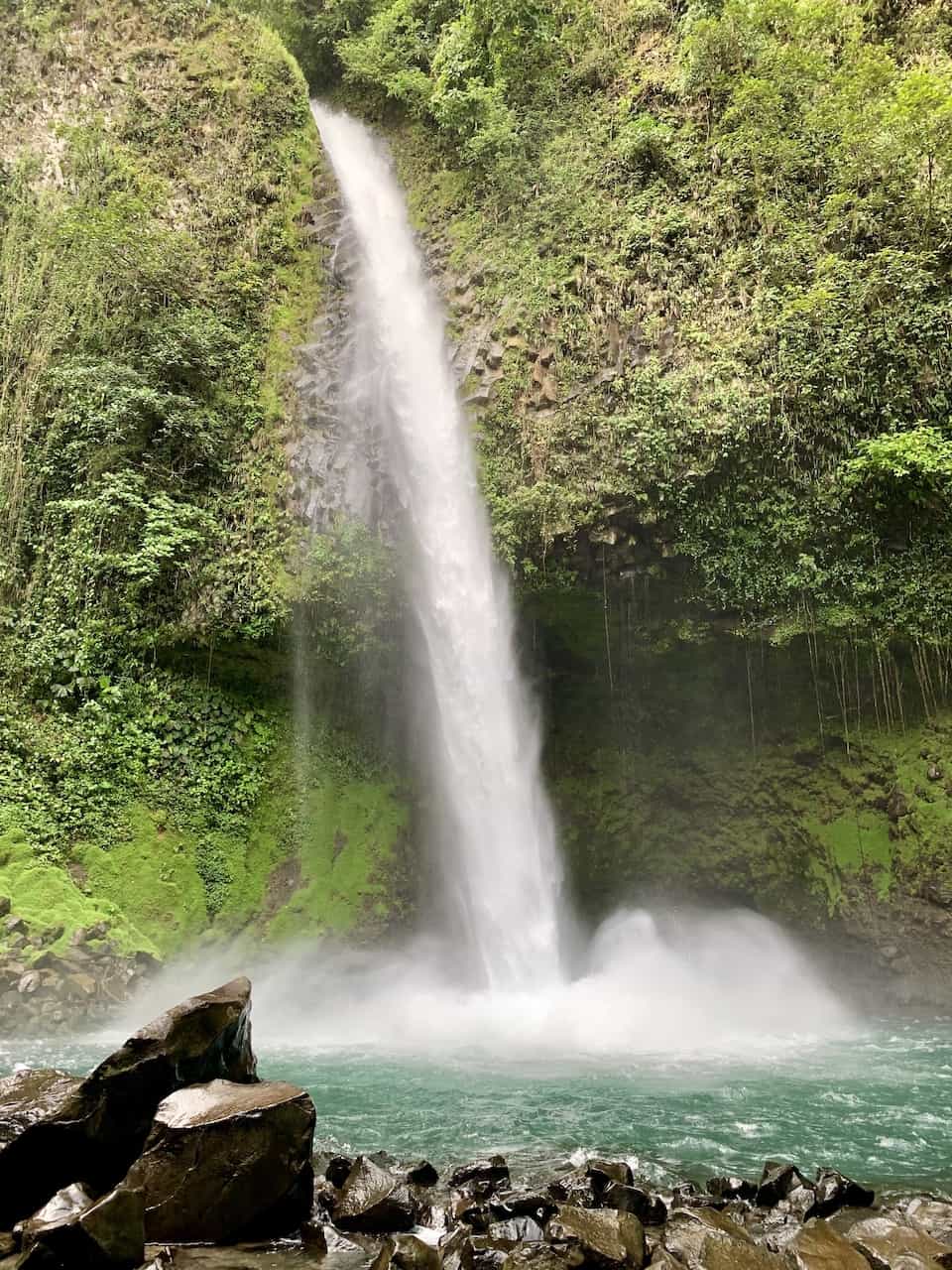
Mistico Hanging Bridges
During the afternoon, you can head to the Mistico Hanging Bridges . At Mistico, there are hiking trails to walk along as you make your way across suspension bridges connecting the trails.
It offers the perfect chance to see some great views of the Arenal Volcano from a far and take in some wildlife and rainforest along the way.
Below is a map to give you an idea of the Mistico layout. It is essentially a circular trail to follow all the way through with small and large bridges, viewpoints, and even a waterfall to visit.
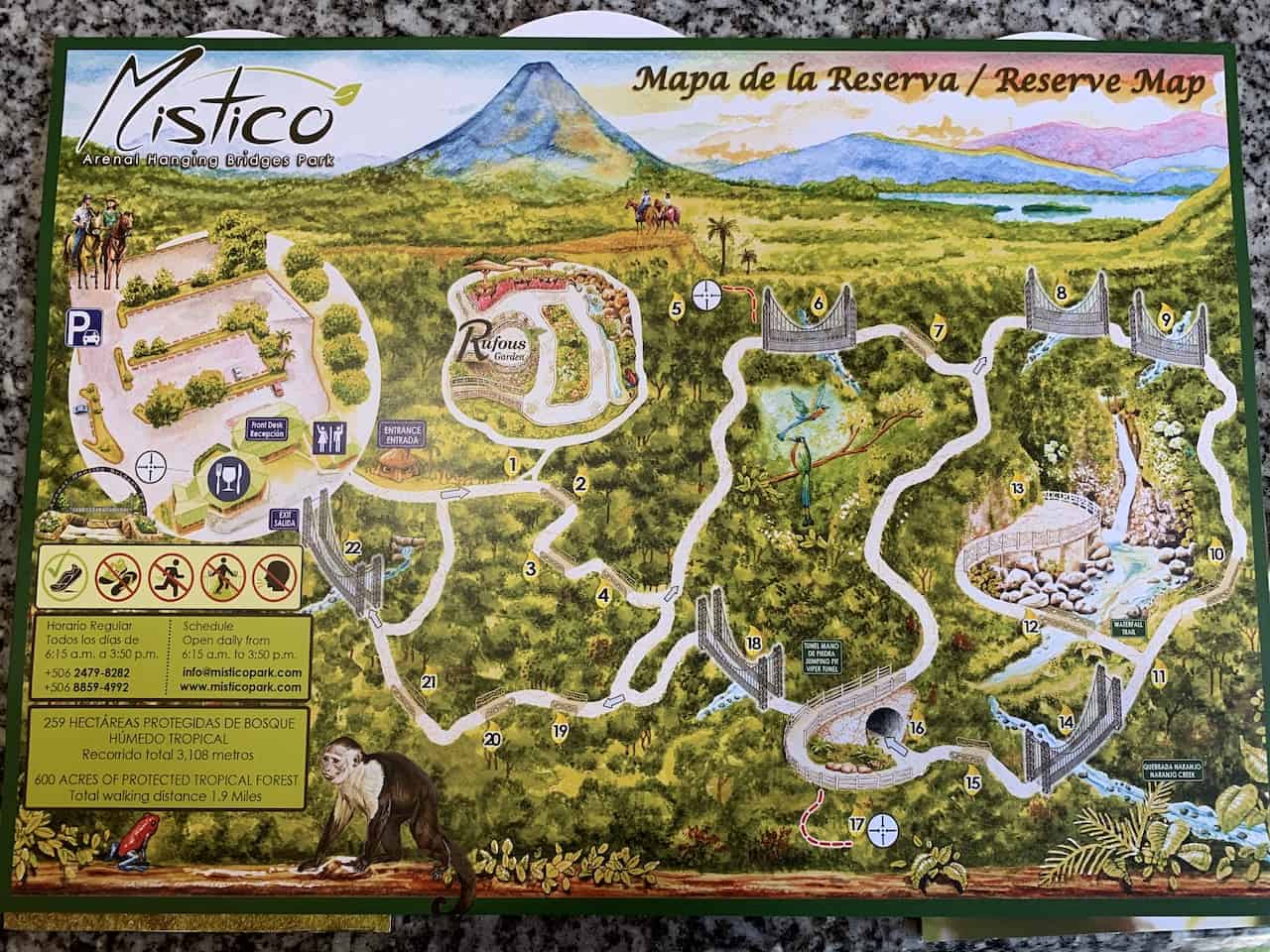
One of my favorite sites of Costa Rica is the Rio Celeste Waterfall . At Rio Celeste you will be welcomed to the most turquoise water you will ever come across.
But it is not just the waterfall that you can enjoy here. In addition to the main attraction Rio Celeste Waterfall, there is a hiking trail that follows the river upstream.
Along the trail, there are several highlights to stop at including the Laguna Azul, Borbollones, and even the point where the river turns into this turquoise color (Tenideros).
The drive from La Fortuna to Rio Celeste takes around 1.5 hours so do plan on some driving during the day. You can also swap this day with day 2 or 3 if you would like to switch things up a bit.
In the evening, why not enjoy one of the La Fortuna hot springs. If you are not staying at a hotel with hot springs, then take a look at Tabacon Resort & Spa, one of the top spots in the area (and mentioned in the accommodation options above).
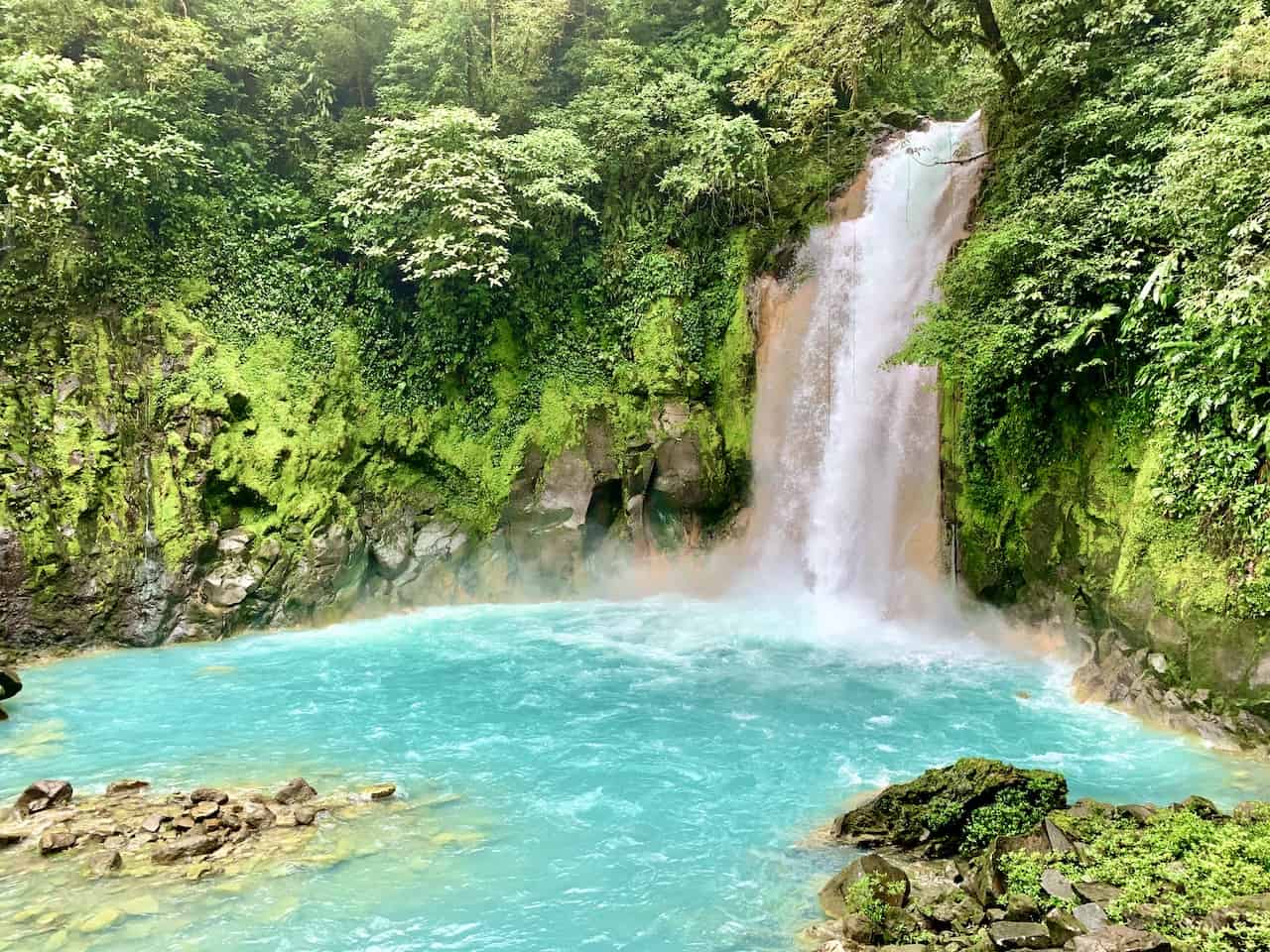
Day 5 – Arenal Observatory Lodge & Travel to Monteverde
Before heading off to Monteverde, spend the morning exploring the Arenal Observatory Lodge . If you remember from earlier on in the guide, I also recommended this as one of the top spots to stay in La Fortuna.
So, whether or not you are actually staying there, you are allowed to visit the lodge as a visitor. The lodge offers one of the best views of the Arenal Volcano, as it has a 92 foot observatory tower to climb up .
In addition to the tower, there are many hiking trails around the property including one that takes you to a waterfall.
After enjoying the morning at the lodge and having lunch at the restaurant there, it is time to make the 3 hour drive around Lake Arenal and to Monteverde.
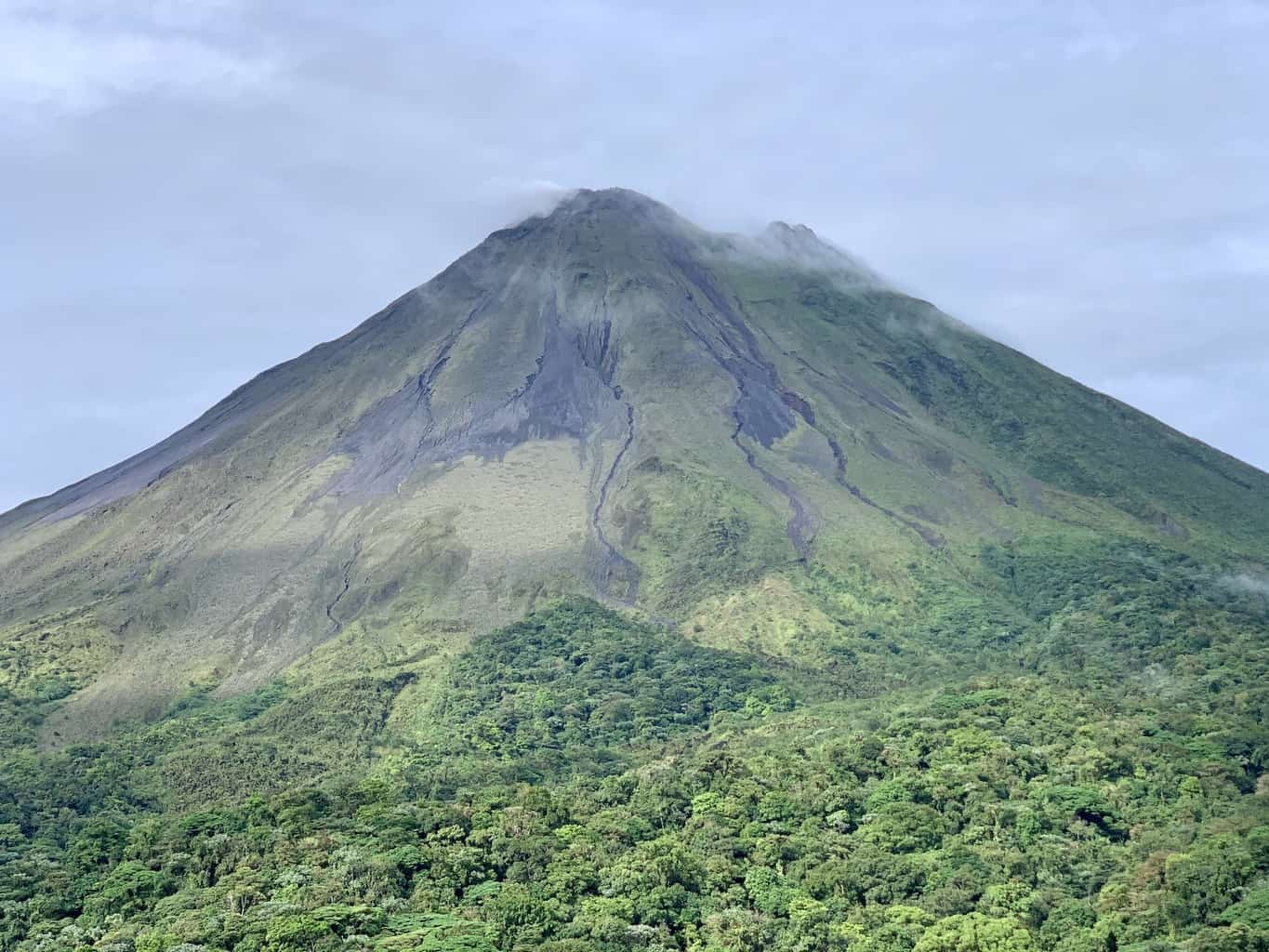
Day 6 – Monteverde Cloud Forest
There are a few different highlights of Monteverde, but one of the top activities is to visit the cloud forest .
Since Monteverde is one of the higher points in the country at over 4,500 feet above sea level, you can sometimes feel like you are in the clouds as the fog rushes over the forest.
There are a few different cloud forest areas that offer hiking trails: Monteverde Cloud Forest, Santa Elena Cloud Forest, and the Children’s Eternal Rainforest.
You can’t go wrong with either one but the Monteverde Cloud Forest does seem to be the most popular of choices.
There are many different hiking trails available here with viewpoints, hanging bridges, and waterfalls to visit along the way.
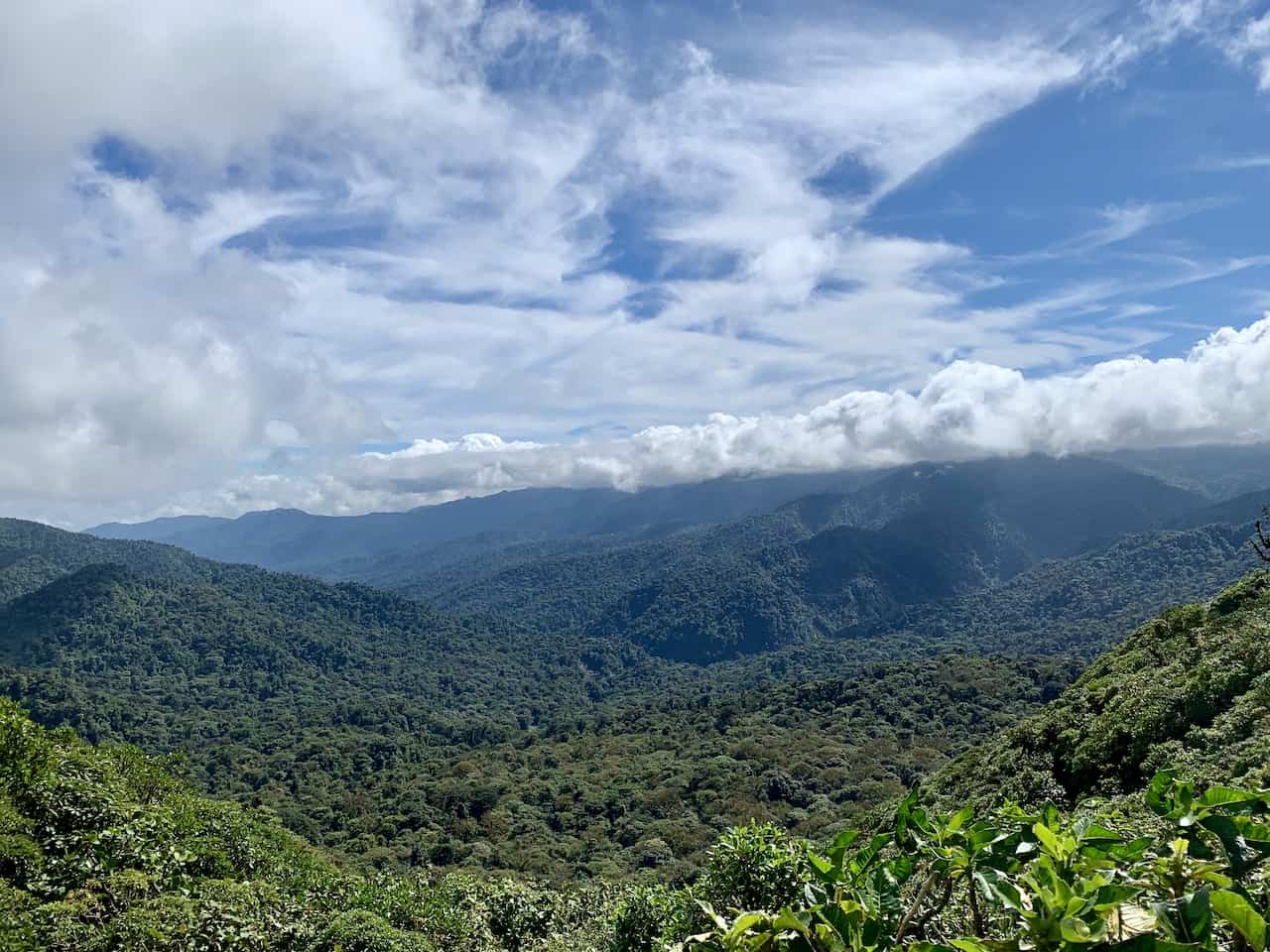
Below is a hiking map with the route pointed out that I took along the reserve.
I ended up taking the advice of the workers there and did the loop including: Sendero Wilford Guindon, Sendero Camino, Sendero La Ventana, and Sendero Bosque Nuboso .
Once back at the entrance, I also headed up to the waterfall trail to end an exciting day in the cloud forest.
Also, even though it is called the Cloud Forest, doesn’t mean its always cloudy. I had a perfectly clear day enjoying the forest and the views along the way.
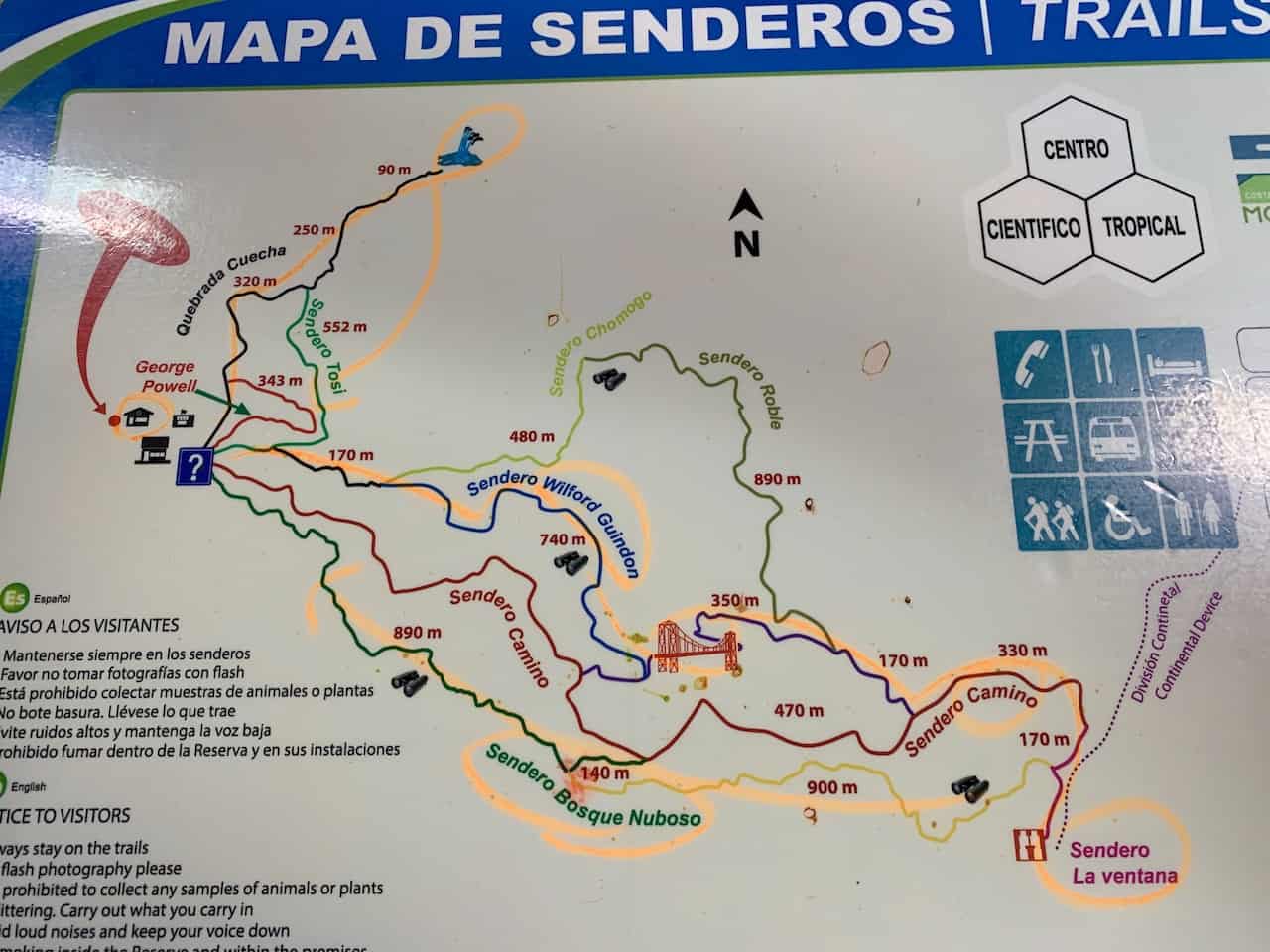
Day 7 – Ziplining Tour
A visit to Costa Rica is not complete without taking part of some adrenaline activities.
All around the country there are ziplining opportunities to sign up for. But there is no better place to do it than above the cloud forest .
In the vicinity of Monteverde there are several tour companies that offer similar experiences. These include ziplining canopy tours, Tarzan swings, rappelling, and even bungee jumping.
Depending on your comfort level, you can decide to take part of some or all of these types of activities.
I would recommend taking a look at the Monteverde Ziplining and Monteverde Bungee Jumping guides that go into more detail about these experiences.
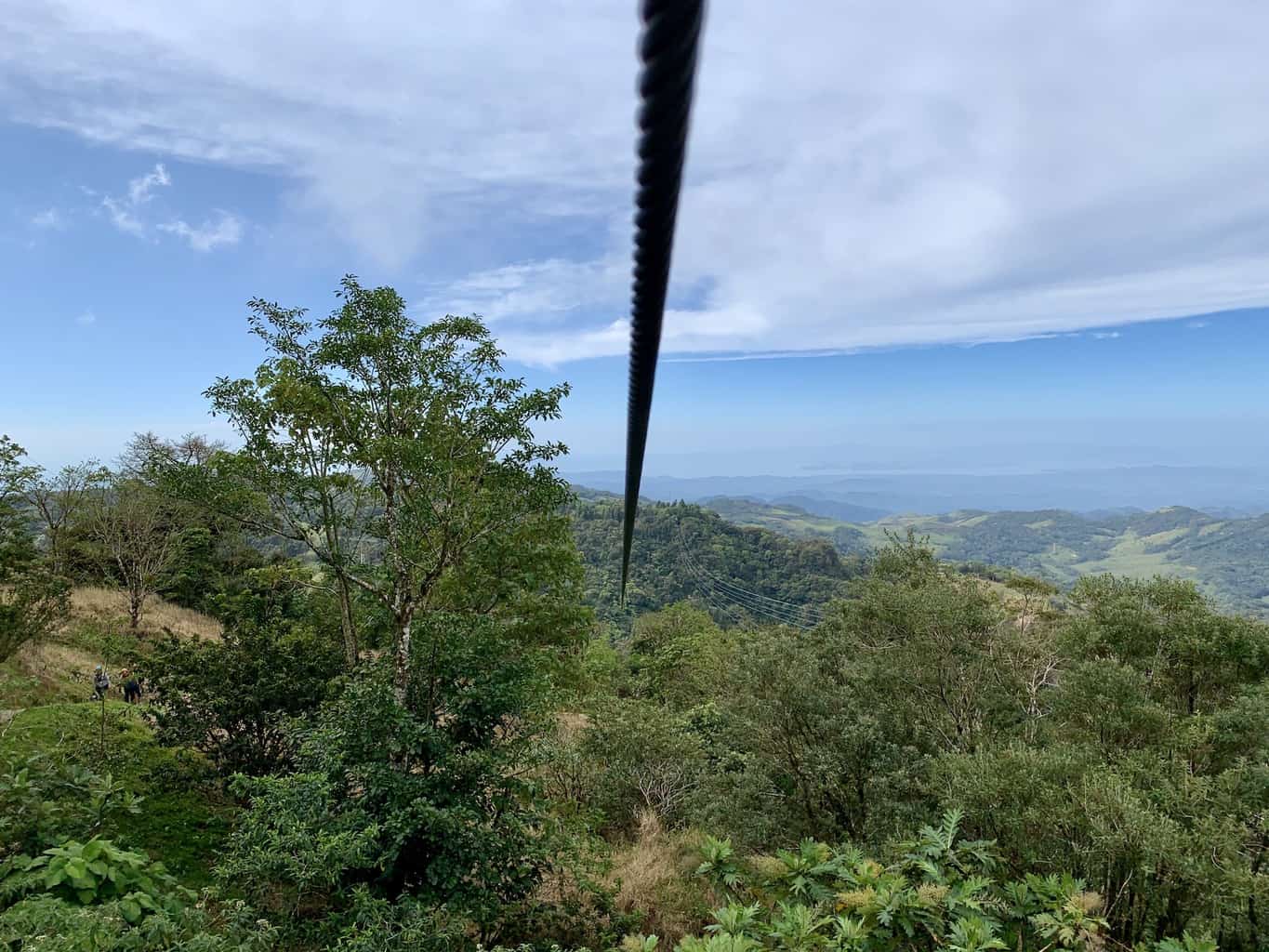
It is time for a bit of a drive as you head down from Monteverde and towards Manuel Antonio. The drive should take a bit less than 4 hours to complete as you head further south.
While the morning may be filled with some driving, once you arrive at your hotel, it is time to spend the afternoon relaxing.
I would recommend to just spend this afternoon at either the main Playa Espadilla Beach or the more secluded Playa Biesanz Beach .
Learn More : You can read more in the guide about the Beaches in Manuel Antonio
Take in a nice sunset and get ready for a full day of exploring Manuel Antonio National Park the following day.
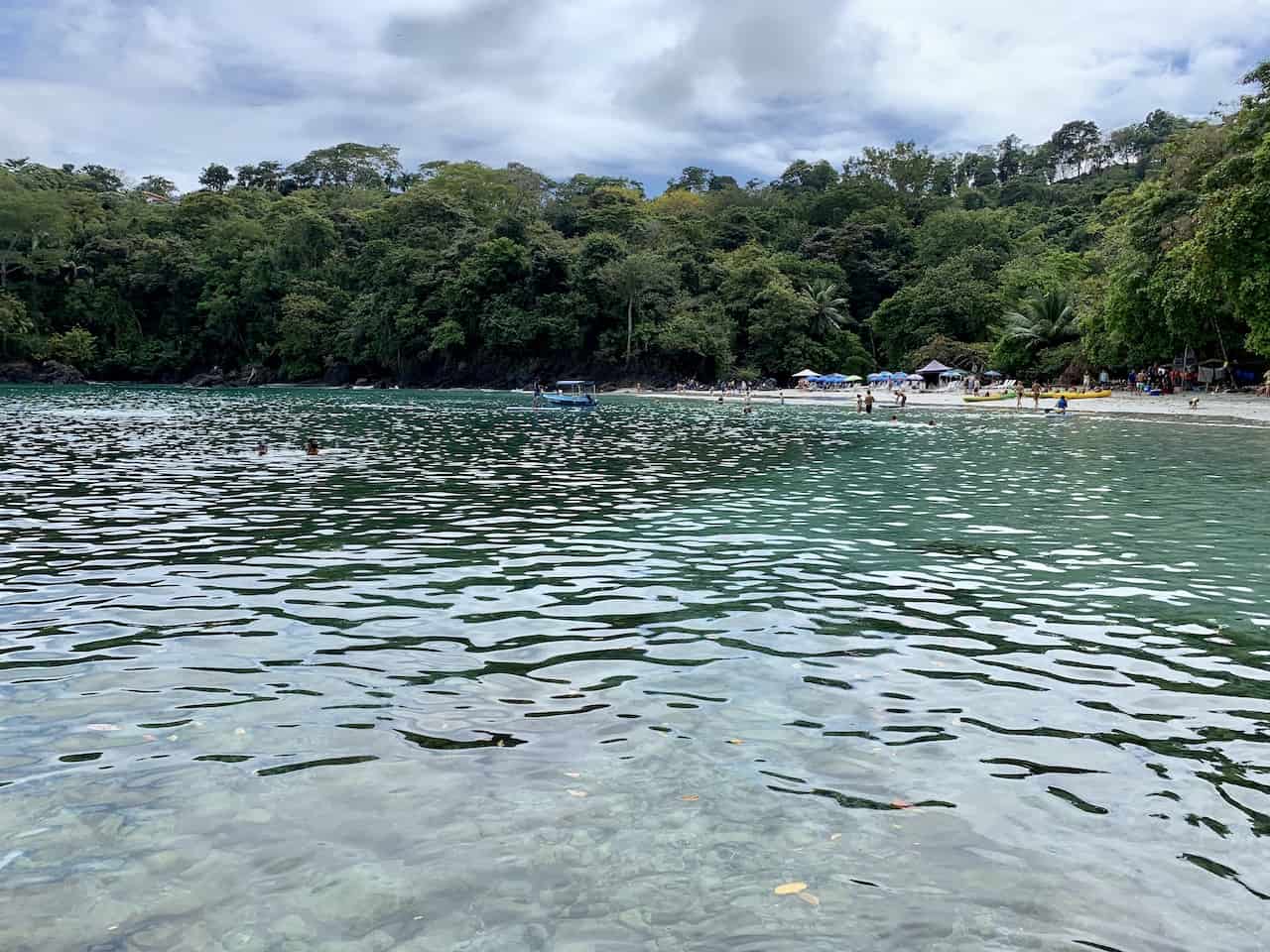
Day 9 – Manuel Antonio National Park
Just on the outskirts of Manuel Antonio you will find Manuel Antonio National Park . The park itself is a protected area with certain rules and regulations to keep the wildlife thriving.
Within the park you will find 10+ hiking trails, a few pristine beaches, and plenty of wildlife to enjoy. In order to take advantage of your time in the park, I would recommend hiring a guide for a morning tour to take you all along the trails.
This way you will have a greater chance of encountering the various wildlife and learn more about it all during your time there.
After completing a morning with a guide, you can then spend time on one of the beaches within the park .
These beaches will be a bit different than the ones outside of the park as you can’t bring chairs, umbrellas, food, sports balls, etc. This is as pristine as it gets with just the golden sand and turquoise waters to enjoy.
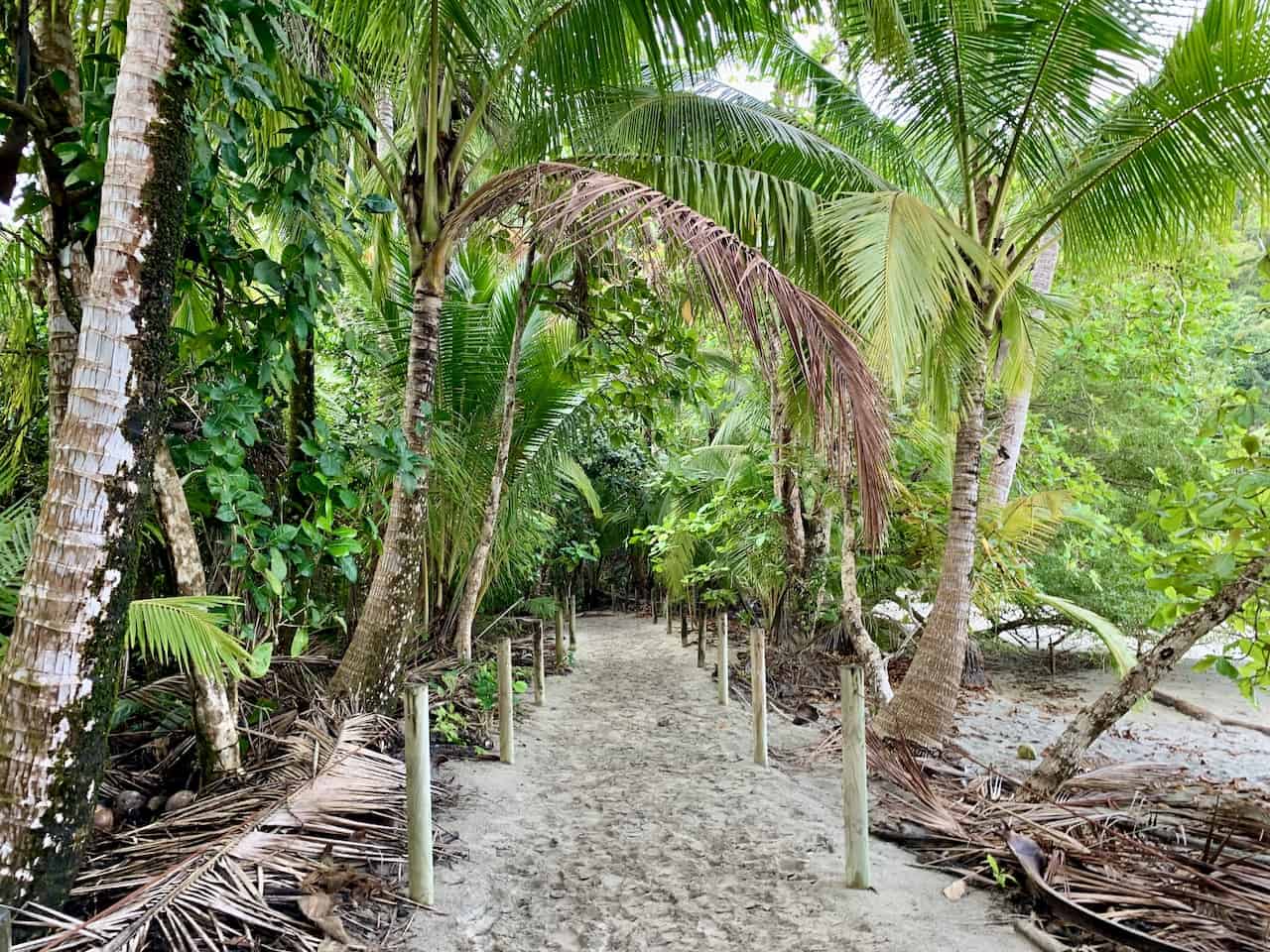
Day 10 – Manuel Antonio Beach Day
What better way to end your time in Costa Rica than to enjoy a day out in the sand and water relaxing .
After 9 full days of exploring the ins and outs of the country, spend your last day at one of the beaches inside or outside of the National Park.
If your flight is on day 10, then it may just be a morning of beach time before making the drive to the airport (3.5 hours). If your flight is on day 11, spend one last night in Manuel Antonio before heading out the next day.
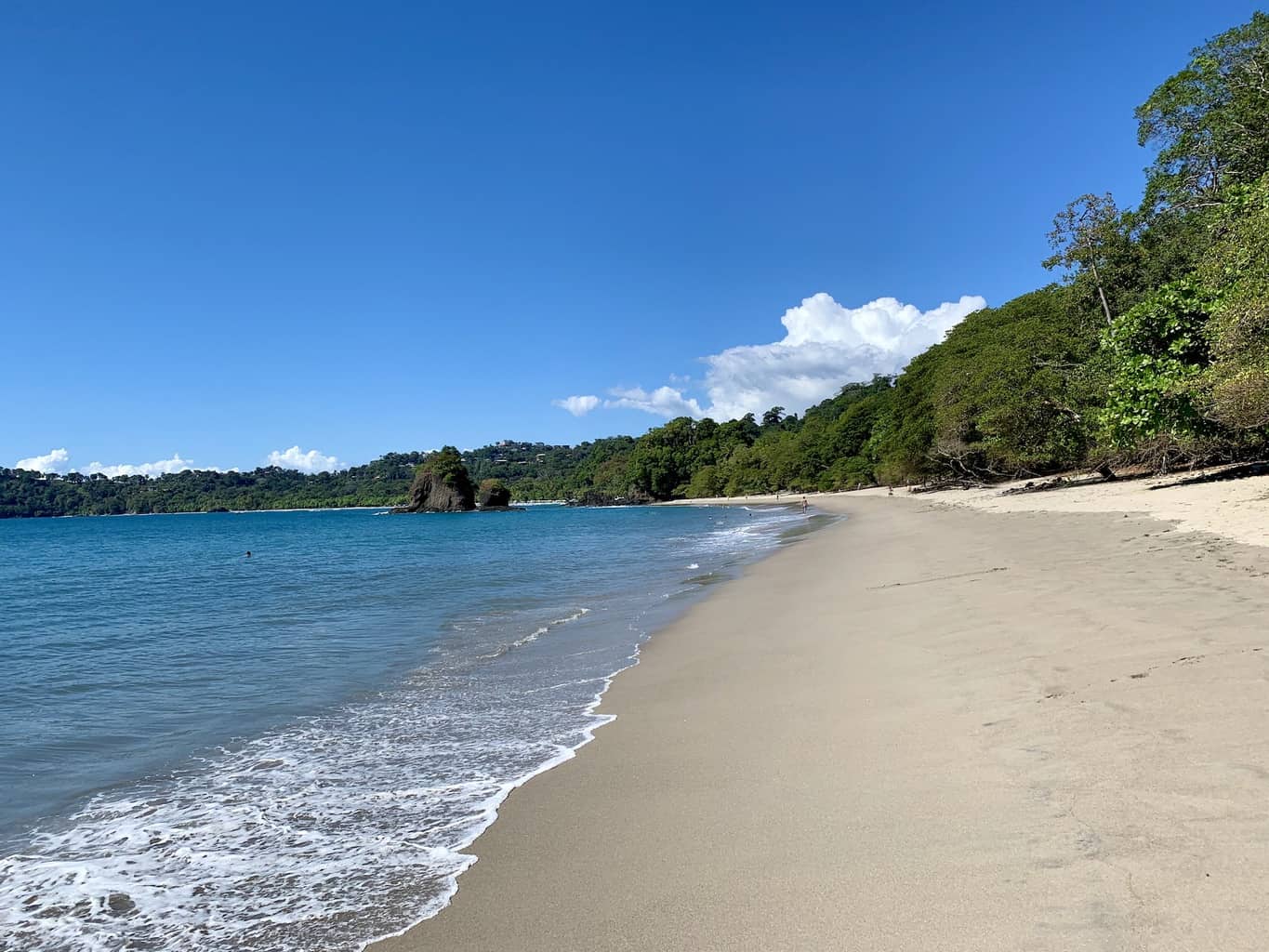
That about wraps up a fun filled and action packed 10 day Costa Rica itinerary. If you have any questions or comments about the trip, feel free to add them in below.
Also, don’t forget to check out the remaining Costa Rica itineraries and guides up on the site.
Have fun out there and safe travels!
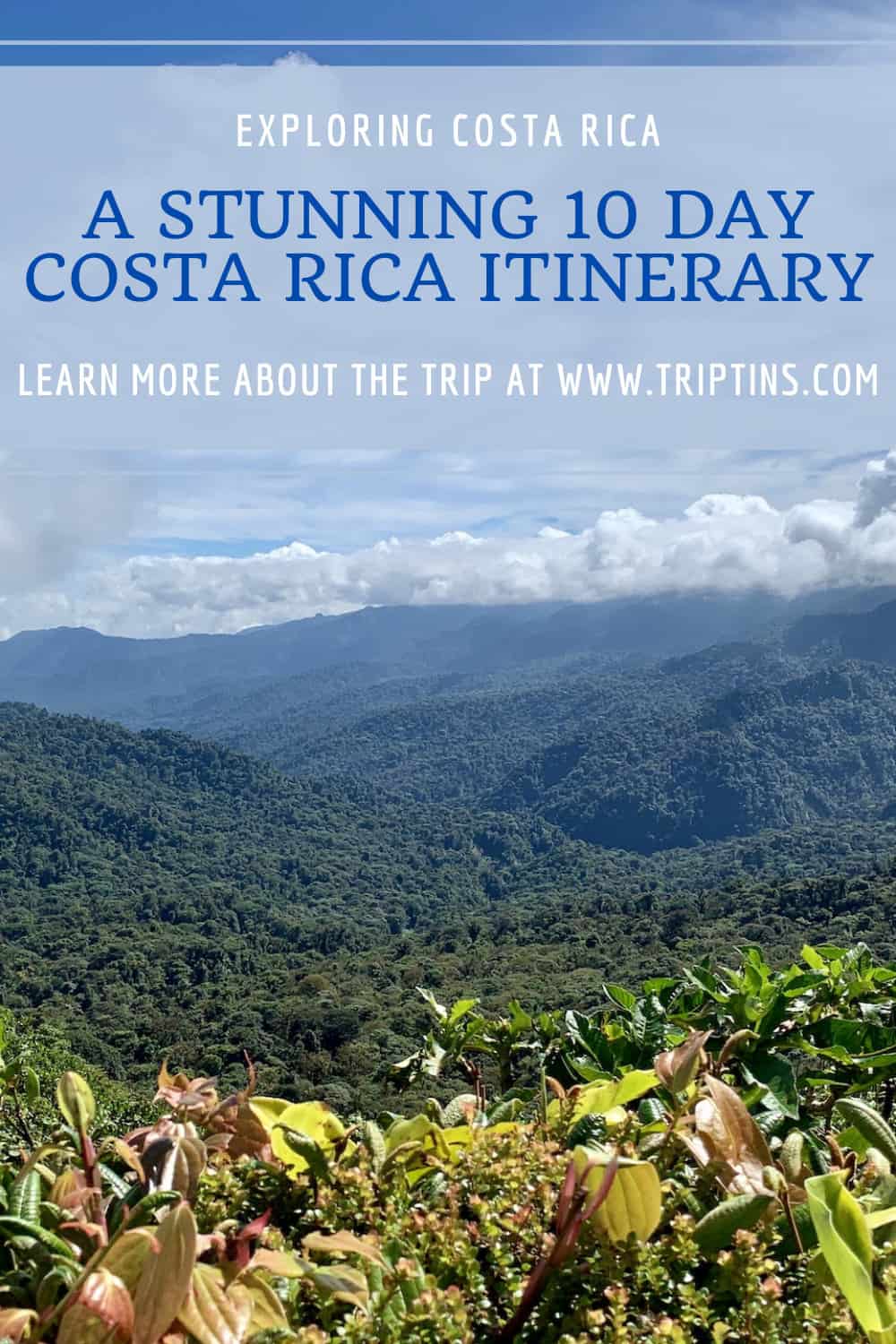
Related posts:
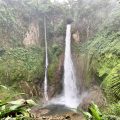
Sharing is caring!
- Search Please fill out this field.
- Manage Your Subscription
- Give a Gift Subscription
- Newsletters
- Sweepstakes
- Where to Go in 2024 Overview: Where to Go in 2024
- The 50 Best Places to Travel in 2024
- An Insider's Guide to Paris — Luxury Hotels, Vintage Shops, and the City's Best Restaurants Included
- This Southern U.S. City Was Named One of the Best Places to Travel in 2024
- 5 Coastal Towns in Alaska That Are Adorable in Any Weather
- T+L's Review of Regent Seven Seas Cruises’ Seven Seas Grandeur
- This Exclusive Helicopter Dining Experience Is the Best Way to See the 'Grand Canyon of Mallorca’
- Belmond Brought Back Its Most Thrilling Trains Through Asia – Here's What to Expect
- How to Plan the Perfect Trip to Montreal
- Georgia May Be Getting Its First National Park Soon — and It Has More Than Just Scenic Trails
How to Plan the Perfect Trip to Costa Rica
- How to Plan a Trip to Italy's Amalfi Coast
- Destinations
- Central & South America
- Where to Go in 2024 The 50 Best Places to Travel in 2024 An Insider's Guide to Paris — Luxury Hotels, Vintage Shops, and the City's Best Restaurants Included This Southern U.S. City Was Named One of the Best Places to Travel in 2024 5 Coastal Towns in Alaska That Are Adorable in Any Weather T+L's Review of Regent Seven Seas Cruises’ Seven Seas Grandeur This Exclusive Helicopter Dining Experience Is the Best Way to See the 'Grand Canyon of Mallorca’ Belmond Brought Back Its Most Thrilling Trains Through Asia – Here's What to Expect How to Plan the Perfect Trip to Montreal Georgia May Be Getting Its First National Park Soon — and It Has More Than Just Scenic Trails How to Plan the Perfect Trip to Costa Rica How to Plan a Trip to Italy's Amalfi Coast CLOSE Part of Where to Go in 2024
Best Hotels
Best things to do, best restaurants, best time to visit.
- How to Get There
Places to Know
How to get around.
Costa Rica literally translates to "rich coast,” and it’s easy to see how it got its name. In addition to world-class beaches on both the Caribbean and Pacific, this peaceful paradise boasts some of the most bio-diverse ecosystems on Earth. In fact, scientists say five percent of the world's species are found here. For reference, the country is only as big as West Virginia.
The unparalleled wildlife watching includes encounters with slumbering sloths, majestic scarlet macaws, tree frogs as pretty as they are poisonous, and endangered nesting sea turtles. With dogged determination, they survive, symbiotically, in the shadow of some of the world's most active volcanoes.
Whether you want to hike in a cloud forest at 10,000 feet above sea level or you dream of riding horses on a white sand beach, it’s never been easier to reach the rich coast. There are nonstop flights to Costa Rica from more than a dozen U.S. cities. Come in winter; the country is one of the best places to visit in January . Or, plan a trip for the summer months when hotel rates drop as temperatures rise.
Top 5 Can’t Miss
- Nayara Springs: Soak in your villa’s private plunge pool fed by mineral hot springs.
- Zip lining: Feel the cloud forest come alive as you soar through the canopy.
- National Parks: These 28 protected areas are Mother Nature at her finest.
- Restaurant Silvestre: Taste an award-winning chef’s contemporary interpretation of Costa Rican cuisine.
- Limón: Experience the country’s vibrant Afro-Caribbean culture.
W Costa Rica - Reserva Conchal
With its audacious architecture and cheeky decor, W Costa Rica – Reserva Conchal stands out on a coast filled with cookie cutter beach resorts. Rooms run the gamut from traditional queens with balconies and ocean views to treehouse suites with private plunge pools. The property has a spa, 18-hole golf course, beach club, adults' and kids' pools, and five restaurants.
Nayara Springs
This adults-only oasis was voted one of Central America’s best resort hotels by T+L readers. “From the moment you arrive you feel pampered,” Erica Linares, a Latin America specialist at Kensington Tours told Travel & Leisure. She’s a fan of the welcome drink, Costa Rica’s answer to the Bloody Mary. Meanwhile Emmanuel Burgio , a T+L Top Travel Advisor specializing in Central America, praises the private plunge pools.
Costa Rica Marriott Hotel Hacienda Belen
Located four miles from San José's airport, this hotel is an ideal base for exploring the capital. That said, it feels a world away from all things urban thanks to its valley views and meticulously manicured gardens and outdoor spaces, including several pools and a coffee plantation.
Four Seasons Resort Peninsula Papagayo
This family-friendly resort is one of Travel + Leisure' s top 500 hotels in the world . “It commands one of the best locations in Costa Rica and offers easy access to the country’s most beautiful beaches,” James Kaiser, author of “ Costa Rica: The Complete Guide ” told Travel & Leisure. His pro tip is to bring binoculars to spot the humpback whales migrating offshore in winter.
Lapa Rios Ecolodge & Wildlife Reserve
Also voted one of the best resorts in Central America by T+L readers, this luxurious ecolodge on the Osa Peninsula is the perfect place to immerse oneself in nature. In addition to proximity to wildlife, Burgio loves the waterfront location. “The bungalows boast terraces with ocean views and outdoor showers, and the shared outdoor pool overlooks the Pacific.”
National Parks
Between its diverse flora, fauna, and geothermal features, Costa Rica is a nature-lover's paradise . A quarter of the country is set aside for conservation, and there are 28 National Parks to choose from. “Plus, unlike Colombia or Brazil, you can visit multiple ecosystems in one day,” said Kaiser.
Taylor McIntyre/Travel + Leisure
Between Costa Rica's 300 beaches there are waves for diehards, beginners, and everyone in between. One of the best places to practice is Tamarindo, where Iguana Surf's instructors are as passionate about teaching as they are pipelines. As you improve, try the Nicoya Peninsula. According to Linares, “It’s known for its powerful waves and the town of Santa Teresa has a very relaxed, bohemian atmosphere.”
Wellness is a way of life in Costa Rica – it's home to one of the world's five blue zones – so it seems sacrilegious to not get a spa treatment while in town. Vida Mía Healing Center & Spa sits atop a "high vibrational crystal mountain" and was named "Best Spa in the Americas."
Often considered to be the birthplace of ziplining, Costa Rica offers canopy tours almost everywhere there are trees. Hanging bridges are usually an option, too. At Selvatura Park in the Monteverde cloud forest, there are nearly two miles of treetop walkways.
The Pacuare Region
If you ask Burgio, one of the most under-the-radar experiences you can have is a private hike through the Talamanca Mountains with a guide from the indigenous Cabécar community. According to Burgio the Pacuare River is also the best place in Central America for whitewater rafting.
Restaurante Celajes (Organic)
With its insect hotel, working farm, coffee plantation, and sugar cane fields, Hotel Belmar takes farm-to-table to a whole new level. As a result, its pride and joy – Restaurant Celajes – is so well-respected diners drive from as far away as San José just for dinner.
Lidia’s Place (Caribbean)
According to Kaiser, the country’s best food is found on the Caribbean coast where “ the vibrant Afro-Caribbean culture spices things up.” Lidia’s Place is where he goes for the best Caribbean chicken. A small, family-owned establishment, don’t be surprised if Lidia stops by to say hola.
Sano Banano (Healthy)
Translating to healthy banana, Sano Banano serves feel-good food – breakfast, lunch and dinner – in an open-air restaurant. Enjoy seating on the back patio or front porch overlooking Montezuma's lively main street and don’t miss the artisanal chocolates for sale by the cash register.
Don Rufino (Costa Rican)
Choose from prix-fixe menus, a la carte, or a five-course tasting tour at this Arenal landmark where Linares says the dishes are delicious and the ambiance is just as memorable. Grandma’s roasted chicken, served wrapped in banana leaves, has a cult-like following, so order it before it sells out.
Restaurante Silvestre (Experiential)
This San José institution is famous for its edible experiences derived from “unorthodox and avant-garde culinary techniques.” Since it’s deemed one of the best restaurants in Central America, reservations are a must. And because the chef-driven tasting menu knows no bounds, it’s not ideal for picky eaters.
The best time to visit Costa Rica depends on your goals. If you're looking to snorkel in clear Caribbean waters, opt for the dry season which on the Caribbean side, is mid-May through mid-December. Meanwhile, in the rest of the country, the dry season is the opposite. It runs from December to May. This is when everything is open and roads are passable. If you want to take advantage of low season rates and avoid crowds, visit during the wet season (which is marketed as the green season).
For the best cultural events , visit during January for Palmares (basically Carnival) or Easter week. As a Catholic country, many of Costa Rica's biggest holidays correspond with the Church's. Regardless of when you visit, you can always watch sea turtles nest and hatch, go zip lining (they do it rain or shine), and learn how to surf.
Related : The Ultimate Costa Rica Packing List
How to Get There
Costa Rica has two main airports: Juan Santamaria International Airport (SJO) in San José and Daniel Oduber Quirós International Airport (LIR) in Liberia. SJO is your best bet if you’re visiting Manuel Antonio, Limón, Arenal, or the Osa Peninsula. It also tends to have the cheapest flights. For trips to Guanacaste and Alajuela, you’ll probably want to fly into Liberia. Both airports offer rental cars.
Of course, it’s possible to fly into one airport and out of the other. And transferring between the two is easy thanks to public buses and shared shuttles. The trip takes approximately 3-4 hours depending on traffic. Driving to Costa Rica is not recommended as you’ll have to pass through countries with civil unrest and border crossings can be complicated.
There are seven provinces in Costa Rica, and each has its own distinct vibe. Here are three we recommend starting with.
San José : The capital boasts the best souvenir shopping and has many cultural institutions including the Museum of Costa Rican Art, the Pre-Columbian Gold Museum, and the National Museum of Costa Rica. It’s also where you’ll find the country’s best culinary offerings.
Alajuela : Alajuela is popular with adrenaline junkies as it’s home to Arenal Volcano National Park where you can zipline, hot springs hop, and hike in a cloud forest all in 24 hours. The province is also where you’ll find one of the world’s largest craters in Poas Volcano National Park (reservations required).
Limón : Limón is located on the Caribbean side and highlights include Tortuguero National Park and the Barra del Colorado Wildlife Refuge. This province is also where you can experience the country’s incredible Afro-Caribbean culture . Approximately eight percent of Costa Ricans are of African descent.
Trains and Buses: Costa Rica is rebuilding its train infrastructure, damaged during the 1991 earthquake. For now, buses are the best public transportation. While most are privately owned, fares are low. For example, a four-hour ride might cost $10. "Directo" buses offer nonstop service. "Colectivos” stop pretty much everywhere.
Taxis and Shuttles: Costa Rica's official taxis are red or orange (the only cabs licensed for airport pickups) and all have a yellow triangle emblem. It's also easy to pre-book private car services or shuttles online.
Rideshare: Although it’s technically not legal, Uber has been operating in Costa Rica since 2015. However, it's limited to major cities and tourist hotspots. DiDi is also an option, but it’s also not that reliable in remote areas.
Car Rentals: Car rentals are cheap and plentiful, but keep in mind that most cars are manual, and Costa Rica’s roads don’t have the best reputation (during the wet season, many roads turn into rivers). Try to get a high-clearance SUV with AWD, and if you need extras like a roof rack for surfboards, carseat for kids, cell phone for navigation, or additional drivers, book with Vamos . It’s the only company that offers all of the above for no fee.
Why Costa Rica Is the Perfect Wellness Destination
Jessica Poitevien
I Traveled to Costa Rica With 17 Family Members
Frames, Stamps: Getty Images; Photos: Alessandra Amodio/Travel + Leisure
This Car-free Beach Town Is a Hidden Gem
5 best festivals in costa rica, where to go in 2024, related articles.

Your full Wanderlust guide to travel in Costa Rica
Costa Rica is so rich in wildlife that you’d think it had a monopoly on nature. Home to howling monkeys, toucans, butterflies, hummingbirds, colourful frogs and leatherback turtles, more than 25% of Costa Rica is protected in national parks and reserves.
In the far north-west of Costa Rica the dry forests of Guanacaste are a Unesco Natural World Heritage site. Further south, the beaches of Costa Rica’s Nicoya Peninsula are hidden in secluded coves, while on the central Pacific coast, the laid-back hangout of Jacó is a magnet for sun-worshippers.
In the mountain ranges dividing the Caribbean from the Pacific, the mighty Arenal volcano spews and splutters lava into the Costa Rican night sky.
Twitchers will love the coastal mangroves around Tortuguero, a huge national park comprising coast and jungle-fringed waterways teaming with bird and insect life. And for some of the best rainforest trekking in Latin America, head to Corcovado National Park on the Osa Peninsula, Costa Rica’s most remote and possibly most rewarding wilderness.
- Capital city: San Jose
- Population: 5.1 million
- Money: Costa Rican Colón
- Int dialing code: + 506
- Languages: Spanish
- Visas: British nationals do not need a visa to enter Costa Rica. You may stay as a visitor for up to 90 days under a tourist visa waiver.
- Voltage: 110 - 127 V
- Time: GMT - 6
Wanderlust recommends
- Gaze up at erupting Arenal volcano from the comfort of a state-of-the-art rainforest lodge
- Have a cultural chinwag round a campfire with the Bribri women of the Talamanca Mountains
- Go turtle watching on the beaches of Santa Rosa National Park
- Dive with hammerhead sharks off Cocos Island
- Meet the abundant wildlife of remote Corcovado National Park , on the Osa Peninsula
Wanderlust tips
In restaurants, asking if the service charge and sales tax are included before you order. Likewise, check at hotels that tax is included in the price.
When travelling to remote areas, carry plenty of colones in small denominations. Your credit card won’t pass much muster out in the sticks.
I wish I'd known...
Thomas Rees on the thing he wished he'd known before he arrived:
"Pack a pair of ear-plugs. The only downside to Costa Rica's mind-blowing biodiversity is the noise of the jungle at night. The sound of millions of chirping insects and amphibians can make getting to sleep a little difficult!"
Daisy Cropper on what she would have wanted to know before her trip:
"I wish I'd known a bit more Spanish. I was very young and ignorant when I visited and thought a lot more people would speak English. There's nothing like arriving in a country when you don't understand anything going on around you! Learn the basics – especially if you're hoping to get off-the-beaten-track."
"There are also some very interesting taxes in Costa Rica. Keep an eye on them as it's easy to get ripped off. There's a departure tax, which must be paid in cash on departing the airport. We didn't have any cash and there wasn't a cash machine which took our cards in the airport. Cue mass departure hysteria."
Further Reading
When to go to costa rica.
Costa Rica’s two coasts have different weather patterns: the Pacific coast is dry from December to April, while the Caribbean side is drier between August and October.
Costa Rica international airport
Juan Santamaria (SJO) is 17km from San José
Getting around in Costa Rica
Local buses are one of the best ways of getting around Costa Rica; they are basic but frequent and cheap. ‘Gringo’ minibuses are more expensive but considerably more comfortable and they’ll pick you up from your hotel.
Renting a car can be a hair-raising experience: accidents and car crime are real possibilities. Costa Rica’s terrain makes for easy cycling and there’s little traffic outside the Vale Central.
Costa Rica accommodation
Costa Rica has a wide range of accommodation, from basic rooms in family homes to luxurious lodges. Prices are higher than in other Central American countries and you’ll need to reserve well ahead for high season.
Look for the Certification for Sustainable Tourism (CTS), a government accreditation system (based on a series of leaves like the hotel star system) that rewards eco-friendly operators and lodges.
Costa Rica food & drink
Costa Rican food is simple fare and usually involves rice with meat, beans or fish. Try breakfast staple gallo pinto (painted rooster – a mixture of beans and rice with eggs or cheese), pargo (red snapper) or corvine (sea bass).
Fruit is really good in Costa Rica, where papayas, pineapples and bananas grow in abundance. Eating out can be expensive, so go for the plato del día (dish of the day) at lunchtime if you’re on a budget. Vegetarians are quite well catered for.
Health & safety in Costa Rica
Visit your GP/travel clinic for advice on necessary vaccinations. Do not travel without adequate health insurance.
Street crime is a major problem in San José, particularly around the Coca-Cola bus terminal, so take extra care and get a licensed cab if you’re barhopping.
In budget accommodation, some ‘suicide showers’ have a button on the nozzle that turns on the element – do not touch when wet! Finally, riptides can be a problem on popular tourist beaches.
Related Guides

Latin America

Outdoor adventures

Wildlife and safaris
Related articles, loading more items, loading trips.

Join our newsletter
Get the very best of Wanderlust by signing up to our newsletters, full of travel inspiration, fun quizzes, exciting competitions and exclusive offers.
Costa Rica – Travel Guide
Explore Costa Rica, Central America’s natural paradise! Encounter a variety of lush rainforests, active volcanoes, and stunning beaches along the Pacific and Caribbean coasts. Most visitors really enjoy thrilling adventures like canopy tours and wildlife spotting in national parks. Go ahead and indulge in delicious cuisine and immerse yourself in rich local culture. As a matter of fact, Costa Rica beckons for unforgettable experiences in a vibrant tropical heaven!
All about Costa Rica

Costa Rica FAQ
Costa Rica is known for its stunning array of natural landscapes, unique microclimates, and biodiversity, with beautiful beaches, dense cloud forests, blazing volcanoes, wildlife, and national parks. The country produces delicious Costa Rican coffee and chocolate. A perfect destination for surfers, nature enthusiasts and adventure seekers and home to incredibly happy residents who greet one another with ‘Pura Vida’ (pure life). A small, yet incredibly diverse nation that features four UNESCO World Heritage Sites, countless National parks, 8 biological reserves, 200 volcanic formations, and 5% of the world`s biodiversity.
San Jose City is the bustling capital city boasting spectacular museums, vibrant squares and fantastic cuisine. Arenal Volcano is one of the country`s main attractions and a stunning sight to see. Monteverde Cloud Forest is a magical natural location found in the verdant forest and a fantastic destination for nature lovers and bird watchers. The stunning sparkling coastline of Costa Rica is home to idyllic tropical beaches including the serene shores of Guanacaste Beaches and the deep blue waters of the Pacific. The mountainous heart of Costa Rica where the breathtaking Sarapiqui Rainforest brimming with flora and fauna along with the surrounding mountains provide endless outdoor activities including zip lining, tree top walks, zip lining and more.
We recommend 7-10 days based on what you want to see and do. We offer flexible vacation packages so you can select your number of nights in each city, desired hotel, and activities. We suggest a minimum of 3 nights in larger cities.
The best way for visitors to get around Costa Rica is to rent a car, this gives the opportunity to explore Arenal and the other amazing locations and countryside. Having your own vehicle allows you to go where you want, when you want and to create your own agenda with lots of freedom to explore. There are many rental car companies found at the main airports as well as in the major cities, renting a 4 wheel drive vehicle while in Costa Rica is highly recommended.
The currency of Costa Rica is the Colon. US dollars are not accepted. Please be sure to have the correct currency on hand or be prepared to exchange your dollars for colones upon arrival. Currency exchange desks can be found at the airport and many locations throughout the city. For more detailed information, consult our guide to tipping in Costa Rica
90 percent of Costa Ricans speak Spanish as their first language. English may be spoken at your hotel and in the tourist areas, but not everywhere. We suggest that you get a good English-Spanish dictionary and familiarize yourself with common phrases such as hello, goodbye, excuse me and numbers 1-10.

Best time to visit Costa Rica
Costa Rica is a great country to visit year-round and basically features two main seasons; Dry Season also known as High Season and Rainy Season which is also referred to as Green Season.
The wettest months are from May through November and dryer months are November to April. The dry season is obviously a fantastic time to be outdoors and escape the harsh winters of the Northern hemisphere providing endless outdoor opportunities for travelers. Green Season is a wonderful time to see the country in bloom when flowers are blossoming and the forests and mountains are verdant green. The perfect season for nature lovers to explore the great outdoors and see a variety of animals and plant species.

Tipping in Costa Rica
The questions ‘when’? and `how much?` can leave some travelers confused, as the practice varies. This guide attempts to cover most situations that you, as a tourist, will encounter.
Hopefully using these ‘tips’ will provide a smooth experience when interacting with locals in restaurants, bars, hotels, tour operators, and taxis.
The currency of Costa Rica is the colon and US dollars are not accepted. Please be sure to have the correct currency on hand or be prepared to exchange your dollars for colones upon arrival. In our culture we can put everything on credit and debit cards, however, in rural areas of Costa Rica you will find it useful to always keep cash on hand. Currency exchange desks can be found at the airport and many locations throughout the cities.
In most restaurants in Costa Rica the tip ais lready on the bill. A 10-15 percent tip is routinely included in the bill. Always check your bill and if is not included, please leave a 10-15 percent tip. If your service is excellent, feel free to add an additional tip. If you aren`t satisfied with the service, you can forgo a tip altogether. Bartenders receive a tip equivalent to about 140 to 280 colones.
Tipping in hotels in Costa Rica is expected. The most commonly tipped employees are the porters and housekeeping. If a porter helps to carry your bag(s) to your room the customary tip about 550 or 1100 colones per bag, usually no more than 1100 colones total. It is customary to leave about 1100 colones per day (per person) for housekeeping. Other hotel services are tipped depending on the service provided.
The usual tip for cab drivers is the give the change or round up to the next Colon. You may wish to tip extra if they help you with your luggage or provide you with useful info about getting around. If you hire a taxi driver for the entire tip an extra of about 2800 to 5600 colones per day (per person). If it is around Christmas or New Year`s Day, a tip is very much appreciated. Needless to say, if your driver was rude or took you on an out of the way route to hike up the fare, do not leave a tip. Always remember when traveling abroad that it is good practice to agree on a final fare before the cab driver begins driving.
The normal tip for tour guides is about 2800 to 5600 colones per day (per person). If a tour guide is particularly enthusiastic or informative do not hesitate to slip them a little extra cash if you wish!
Street Performers : Here is one place to splurge a bit. Though you may not actively solicit entertainment from musicians, mimes, artists, and the like, it is polite to tip them if you have enjoyed their trade. These people live off the money they make bringing their talent to the streets of San Jose, Limon, San Francisco or Alajuela. Take some of what you would have left your waitress in the restaurant and give it to one of these artists!
Other Services : In the event that you are in Costa Rica for a special occasion (wedding, honeymoon, graduation gift, birthday, etc..) and employ the services of a hairdresser, make-up artist, party planner, personal shopper, tailor or spa services and the like, use your best judgment in tipping. Factor in the cost and quality of service and, as a general rule, stay in the 10% range.
Remember that it is perfectly okay to abstain, especially if you are not happy with the service provided. Unlike in the U.S. the expectations for tipping are lower in Costa Rica than in America. This is also true for hotel staff, though if you encounter a problem with the service within the hotel, we highly recommend speaking with the manager.
When paying for services in cash (which we generally recommend for services other than your hotel) remember to take your receipt. This is important for two reasons; If you leave a tip on a credit card, the person providing the service may not always get it, and if there is a discrepancy, it is important to have your receipt to settle it with the manager of the establishment and to prove that you paid for the service.

Driving in Costa Rica
When visiting Costa Rica, renting your own car can be a great way to explore the country and a rewarding experience. The spectacular sights and surroundings that can be discovered when driving through Costa Rica are infinite.
Here you can drive to magnificent volcanos, hidden waterfalls, thermal springs, and deserted beaches. The opportunities and views are endless.
Having a car means that you have the freedom and flexibility to explore at your leisure. However, the roads and the drivers in Costa Rica can take some getting used to. The rules of the road are pretty similar to the US, they drive on the right hand side of the road, roads are marked with double yellow lines where passing is not allowed and single yellow lines where passing is allowed. The speed limits are listed in kilometers and most of the road signs will be in Spanish
Always use caution when driving on Costa Rican roads, exercise patience and practice defensive driving to remain safe on the roads. There are many unpaved roads all around the country especially in the mountain areas and small country roads. Potholes here are HUGE and can severely damage your car! There can be rivers to cross, one-way bridges, diverse terrain, and animals. Also, try to avoid driving at night, there is hardly any street lights in the remote areas of the country, no guardrails on curvy mountain roads and animals on the roads.
Renting a car can give you the freedom and flexibility when you`re traveling. It is recommended for independent travelers and it`s ideal for those in a rather exploring mood, who want to experience more of genuine Costa Rica. Costa Rica is roughly the size of West Virginia, but the roads are definitely not the same quality as the United States. Driving in Costa Rica; as many Central American countries; can often be more strenuous than what you`re used to at home. The country`s unique geography – of mountains, volcanoes, valleys, plains, and coasts – has made for a challenging road system: roads are riddled with potholes, rural intersections are unmarked, no addresses, no numbering systems, and with the exception of a portion of San Jose, the streets do not run perpendicular to one another. Costa Ricans use reference points such as buildings, restaurants, churches or bridges, and distances are given in meters. Please note: We do not recommend driving in Costa Rica at night due to the nature of the roads and never leave your personal belongings in an unattended rental vehicle.
But don`t let these issues overshadow the reason why you rent a car in the first place: to have the freedom, to encounter new places and experience genuine Costa Rica along the way. Just know what to expect beforehand, make careful choices and use common sense and the journey will be without a hitch. If you are heading out of the city, a 4×4 is highly recommended. The vehicles we offer are adapted to Costa Rican roads, and they are all 4×4`s. A Costa Rica roadmap will be provided for you when you pick up the car. For detailed driving instructions ask the car rental representative when you pick up your vehicle and hotel front desk staff from point to point. The cars we offer come with a prepaid cell phone. And for a small fee, you can upgrade your service to include a GPS.
Driver`s License
Visitors traveling to Costa Rica will need to provide a valid US, international or a foreign driver`s license along with your passport (or a copy) showing the `tourist visa` stamp.
The legal driving age in Costa Rica for visitors is 21 and your driver`s license must have been issued for at least 2 years. Insurance
You also need to have valid insurance and all documents relating to the car (certified copies are OK). You should check with your insurance agent to see if you have coverage while renting a vehicle in Costa Rica. It is also a good idea to check with the credit card company that you are using to pay for the rental car to see if they offer insurance protection at no additional cost. Glasses
People who wear glasses must carry a spare pair in the car at all times. Child Safety Seat
The law in Costa Rica requires children under the age of 12 (subject to height and weight limits) to be properly restrained in a child passenger restraint system or a booster seat. Child seats are available at the airport rental locations and offsite rental locations for an additional daily fee. GPS
GPS Navigation devices are available at airport rental locations and most off-site locations for an additional daily fee. It is highly recommended to have a GPS while driving in Costa Rica. Road signs are sometimes non-existent and driving in rural areas can be difficult without one.
For an additional fee, you may rent a GPS system, It can help you plan routes, estimate distances and arrival times, and even locate the nearest gas stations. We recommend you to ask the rental car agency representative to save into the GPS all the locations relevant to your trip, such as your hotels and points you plan to visit during your stay here, this will save you from a lot of trouble trying to figure out, how to spell a location, where you are or how to get to your destination. Also, check with the agency that the maps are kept updated as Costa Rica is always under construction and new roads and neighborhoods are added almost monthly.
But remember GPS devices aren`t always accurate, you may experience signal loss because of certain factors unique to Costa Rica region that you should consider, such as curvy routes forming a complex network, remote mountains or forests. As a supplement to GPS, ask the car rental representative a physical map and don`t forget your map! Particularly if you`re planning on driving extensively, it will be a lot of help in the case you experience signal loss. Other
Fire extinguisher (recommended)
First-aid kit (recommended)
The emergency services can be accessed by calling 911.
Drinking and Driving
Do not drink and drive! It is a serious criminal offense driving under the influence of alcohol or drugs. It is illegal and you can go to jail. Cell Phones, Navigation Aids, etc:
When renting a car in Costa Rica, a cell phone will be provided, which is included in the rental rates. This way you can stay connected with your hotel and the rental car agency in case you suffer any inconvenience. You can contact the rental car agency to inquire about things as simple as directions to a destination. Keep in mind you might experience momentary service reliability, intermittent signal or signal loss while you are traveling through certain regions.
The use of a cell phone, smartphone, personal digital assistant, GPS or mp3 player while driving in Costa Rica is prohibited when operating a motor vehicle. This also applies when stopped at a traffic light or stop sign, the only time a device can be used, is when the vehicle is parked in a safe location and the car is turned off.
Drivers may use a hands-free (Bluetooth) device for voice communication through a smartphone The driver must not use any screen based aid to navigation (or entertainment) while on the road. You must pull completely off away from traffic. (It makes sense really; after all, you are not allowed to drive down the road with a map on the steering wheel). DVD players and screen-based devices other than those directly needed to operate the car must be positioned so the driver cannot see them. However, in reality, the police rarely have anything to do with this law. . Driving Age
The legal driving age in Costa Rica is 18 for residents, however, you must be 21 or over to drive as a visitor in the country. To rent a vehicle you must be 25 or over and rental car companies will have a surcharge for younger drivers. Remember that you will also require a credit card to rent a vehicle. Seat Belts
Costa Rican seat belt laws require that all passengers in a vehicle (front and back) wear a seatbelt at all times. Accidents
If you are involved in an accident in Costa Rica, DO NOT MOVE THE VEHICLE. Call 911 and your rental car company immediately to report the accident and do not move the car until police arrive and advise you to do so. While you are waiting for help to arrive be sure to write down information regarding the other driver`s license plate numbers, phone numbers and take pictures. Using Indicators
Tractor trailers in Costa Rica will often drive really slow on the main highways (usually two lanes of traffic, one in each direction) and will use their left turn signal to notify drivers behind them that it is safe to pass. Always use caution. Overtaking
Overtaking in Costa Rica can only be done safely on the left-hand side of the car you wish to pass. Take care when overtaking – allow more space between you and the car in front so you can see further down the road ahead. However, be aware that other drivers might not use the same caution and you will likely come across people passing on curves and uphill where it can be very dangerous. Lights
Dipped headlights should be used in poor daytime visibility. Motorcycles must use dipped headlights during the day at all times. Children
It is prohibited to carry children in your arms.
No one less than 12 years of age can sit in the front unless they use a device approved for this purpose.
Children under twelve years must use an approved restraint system suitable for their height and weight and must always be placed in the back seat.
Gas stations are referred to as ‘bombas’ in Costa Rica and are sometimes hard to find, although there are many located throughout the country. Be sure to fill up your tank at a station you`re familiar with before heading out on long road trips. All of the stations here have regulated government prices and are all full-service stations
All grades of unleaded petrol (Benzin), diesel (gasoline `A`) and LPG are available as well as lead substitute additive. Led no longer exists. It is allowed to carry petrol in a can. If you make a mistake refueling, don`t start the car but ask the attendants to drain the tank for you. This will save you from having to pay for any damage.
Credit and debit cards are widely accepted. It`s a good idea to let your card issuer know you will be traveling abroad. This ensures they don`t suspend your card if they spot it being used in unfamiliar places, which they sometimes do as an anti-fraud measure.
In Costa Rica, the major roads have a speed limit of 100 km/h (62 mph) and secondary roads have a 60 km/h (37 mph) speed limit. The speed limit around schools and hospitals is 25 km/h (15 mph). It is very common to see traffic police set up checkpoints in Costa Rica, they may use a radar to catch people speeding or pull you over for not wearing your seatbelt, they can also use these checkpoints to make sure you are carrying the right identification, always keep your license and your passport (or a copy) with you at all times.
Be aware when parking in cities such as San Jose, there are individuals that will `help` you park your car and then ask you for money to watch your car! These people are `unofficial` parking attendants in the cities and it can be well worth paying them a few colones (500 colones = less than $1) to watch your car, which is a good way to avoid it from being broken into or worse, stolen. These guys are called `Los Guachimanes` or watchmen and are generally just regular honest people who are trying to make a living and normally patrol parking found on a city block, outside a restaurant or by the beach. Weather
The weather in Costa Rica can make for treacherous driving conditions during the rainy season, which runs from May through November. Many of the roads throughout the country are in poor condition and the drainage system is very inadequate, so roads just wash away! The roads during the wet season are prone to washouts and landslides making it dangerous to drive on the mountain and hillsides. Some of the roads to use extra caution on during this time are Route 2 which runs between San Jose and San Isidro de El General, Route 32 runs between San Jose and Limon on the Caribbean Coast and Route 27 which connects San Jose to Puntarenas and Jaco. During the rainy season, many of the mountain routes can be closed for several days at a time, the rainiest months are August and September. One Lane Bridges
Many of the bridges throughout the country of Costa Rica are narrow one-lane bridges that are used to cross the rivers. A general rule to follow on these bridges is the car that arrives at the bridge first has the right of way and any cars behind going in the same direction can proceed over the bridge, then vice versa. Puente Adelante is the sign for these bridges, be on the lookout when driving as they can come up quickly. River Crossing
There are also many rivers to cross in Costa Rica, that don`t have bridges. Most of the time it is a small stream that is passable with a regular sedan, keep in mind most rental car agreements void river crossing and the insurance will not cover any damage caused to the car. A good rule of thumb when coming to a river crossing is to get out of the vehicle and wade across to check the depth of the water or observe another car going through and follow the path they take. Driving at Night
Driving at night in a foreign country can be daunting for anyone, driving in Costa Rica at night in certain areas can be downright scary and a recipe for disaster. The signposting here is pretty much non-existent and major changes in the road and terrain can come up without warning. There are no street lights especially out in the mountains and countryside. The roads here can unexpectedly end, trees and poles grow in the streets and the potholes and manholes can be the size of a small car! Add darkness to these conditions and you could end up in a serious accident. Try to avoid driving at night unless you are in the main cities or populated areas with other cars and lights to navigate. Distances
The driving distances in Costa Rica can be misleading, on a map it may seem very close to drive from one area to the next, but the distances are actually a lot greater than they seem. On a map, Arenal looks like it is situated very close to Monteverde, but it will take you three hours to get there by car, the same applies driving from Arenal to Liberia, it looks close by but is a 3-hour journey. A Lot of the driving in Costa Rica is an adventure and if you are traveling along the remote rural dirt roads the journey can take a lot longer. It is recommended to drive using a GPS in Costa Rica especially in the more remote areas where signs are not common. The Waze app also works great in Costa Rica.
Top cities in Costa Rica
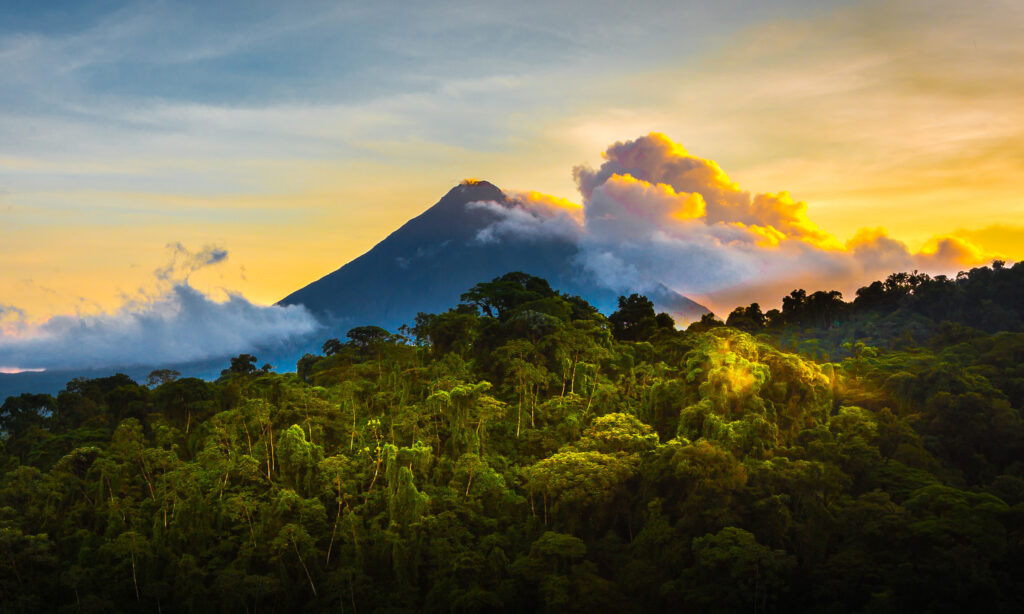
A – Z
- Central Valley – North
- Central Valley South
- Dominical and Uvita Beaches
- Jaco Beach and Vicinity
- Nicoya Peninsula
- Nosara and Samara Beaches
- Osa Peninsula
- Pacuare River
- Puerto Viejo (Limon)
- Punta Islita Beach
- Rio Celeste
- Rio Perdido
- San Jose City
- Santa Teresa and Mal Pais Beaches
- Sarapiqui Rainforest
- Tamarindo Beach
- Tambor Beach
- Tortuguero National Park
What to expect while traveling
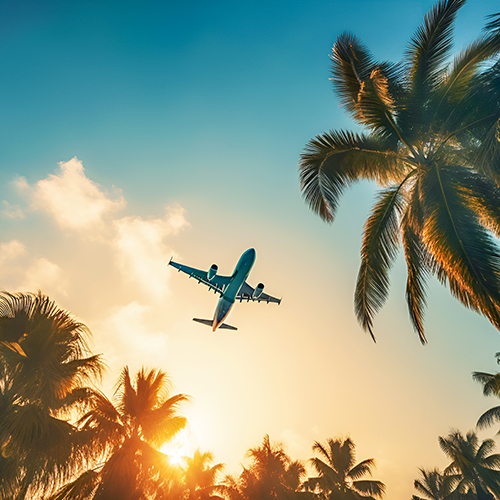
Europe, Middle East and Africa | Asia and South Pacific | The Americas | United States of America | Hawaii

The Ultimate Guide on Costa Rica Travel in 2024

Get ready to immerse yourself in the ‘ Pura Vida ’ way of life as you experience the very best of Costa Rica travel! This country is known as the ‘rich coast’ and is one of the fabled lands of Central America with endless things to see and do.
Spanning from the pearly waters of the Caribbean Sea to the frothing waves of the Pacific Ocean, it’s a place of wonderful biodiversity and natural beauty. It’s a land where volcanoes sprout from mist-haloed jungles and cinnamon-tinted beaches are framed by forests filled with howler monkeys. You’re in for a real adventure as you experience all there is to see and do in Costa Rica!
Cue this 101 on Costa Rica Travel, a complete and ultimate guide that offers insights into all the most enthralling destinations and pursuits the nation has to offer. Dive in for advice on the practicalities of travel and the best tips for planning your itinerary, as well as individual guides to the frenetic capital of San José, the wave town of Tamarindo, the cloud forest reserves of Monteverde, and oodles, oodles more.
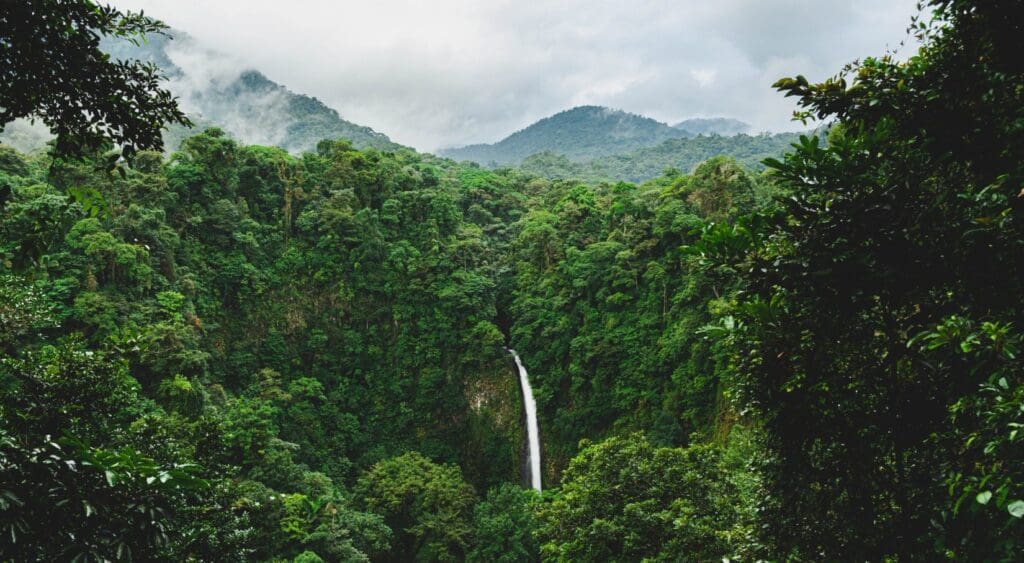
My experience with Costa Rica Travel
I’m always excited to return to Costa Rica when I get the chance. Imagine glimpses of cone-shaped mountains belching smoke and ash on the horizon mingling with visions of emerald coffee plantations rolling through the sierras as your plane whizzes towards San José. As wheels touch tarmac, it’s hard to shake the feeling of arriving somewhere truly special.
I especially love heading west towards the Pacific coast. The provincial duo of Guanacaste and Punta Arenas never fails to wow in these parts. From the hammock-swinging beaches of Tamarindo (where you’ll want to spend the morning hours surfing glassy waves) all the way to the hiking paths of Manuel Antonio (where I recommend detouring to encounter three-toed sloths), it’s a land tailor-made for active travelers and ecotourists.
But that’s really just scratching the surface of what I love about this relatively compact country in the heart of Central America. I’ve also had the pleasure of snapping shots of resplendent quetzals in the rainforests of Monteverde, whitewater rafting around Arenal, and hiking paths between talcum-white beaches in Puerto Viejo de Talamanca on the Caribbean. See why I adore coming back and tips on how to get there, as well as where and when to go.
Ultimately, I am very grateful to run The Explorer’s Passage , a premier adventure travel company and, in my opinion, the best tour operator in Costa Rica. Our team has over 30 years of experience running successful tours there. If at any point throughout this guide you find yourself with any questions, reach out to our team and we’ll gladly help build your dream trip!
Inside this Guide
Intro to costa rica as a travel destination, brief history of costa rica, how to get there, getting around costa rica, visas for costa rica, best time to visit costa rica, money: local and preferred currencies, must-try food and drink, top destinations in costa rica.
Costa Rica is now firmly established as a world leader in ecotourism and adventure travel. This jewel of Central America got there thanks to a combo of natural gifts and legislation. A whopping 26% of the total land here is protected in some of the best national parks and reserves in the world. It’s illegal to hunt, period. Oh, and the nation ditched a standing army way back in 1949 , preferring instead to spend on conservation and preservation.
Today, travel to Costa Rica is up there with the most-visited destinations on the planet. It draws in something in the region of 3 million international travelers each year and has a tourism sector that’s responsible for a mega 12.5% of the country’s overall GDP – that’s more than coffee and bananas combined!
The best thing is that Costa Rica can cater to all sorts of travelers. You can come here to laze on the sands of the Pacific if you like, doing nothing but munching gallo pinto beans and sunning yourself. Or you can get the adrenaline pumping faster than the rapids of the Peñas Blancas River with surf sessions on barrels at the best beaches, eco travel tours of primeval rainforests, birdwatching in cloud reserves, coffee tasting, and volcano hikes.
Costa Rica has it all with its endless list of things to do and see! Check out our guide of the top places and attractions to visit in Costa Rica .

The first borders of what we now call Costa Rica were outlined by a certain Christopher Columbus, who dropped anchor here in 1502 off the Isla Uvita roughly midway up the country’s Caribbean coast. He claimed the region for Spain and ushered in a period of colonial rule that was to last the better part of the next three centuries. The most noticeable and lasting additions of this time are the European influences in Costa Rican architecture and food, along with the language – Spanish is still the official national tongue.
When colonial rule was broken by wars of independence in the 1810s, Costa Rica fell into the greater Mexican Empire and then, soon after, gained full independence as a standalone state in 1838. That was a turning point, as the farmers of the fertile Central Valley were finally free to profit directly from their crops of coffee, chocolate, and bananas.
Fast forward another 100 years or so, through a foiled takeover attempt by the United States and a short but bloody civil war, and you start to see the Costa Rica of today taking shape. The constitution of 1949 was perhaps the most defining moment. That’s when the country disbanded its army, guaranteed universal suffrage, and plotted a course towards becoming one of the world’s first ecological nation states, which is very much in alignment with The Explorer’s Passage’s sustainability focus . Read more about tips on how to travel more responsibly in our sustainable travel guide.
Traveling to Costa Rica is now easier than ever before. The vast majority of people reach this beautiful land by flying. You’ve got two pretty well-served arrival points to choose from, each with connections coming in from the United States, elsewhere in Central America, Europe, and South America:
- Juan Santamaría Airport (SJO) – The main airport in the country, Juan Santamaría, is on the northwest side of the capital in San José. It serves upwards of 5.5 million visitors in any normal year and has the widest array of travelers coming from the United States, Europe, and beyond. Traveling into San José means arriving close to the very geographical middle of Costa Rica. That means it’s a good option for launching trips to the beaches of the Caribbean and the Pacific with pit stops in the cloud forests and the volcano parks along the way.
- Guanacaste Airport (LIR) – Often called, simply, Liberia Airport, this is the second-largest arrival point in the country and a great Costa Rica travel option if you are looking for something a little different. It’s an up-and-coming airport that’s fantastic if you’re looking to get to the best surf spots and beaches of Guanacaste Province or the Nicoya Peninsula. The terminals serve up to 1.1 million tourists in a normal year, and there are now international arrivals from London, Houston, and Los Angeles.
Road trippers can also arrive on the Pan-American Highway. This iconic roadway links more than 18,640 miles (30,000 km) of territory, from Alaska (The Explorer’s Passage also operates a fantastic tour in Alaska ) in the north to Ushuaia in the south, passes right through the heart of Costa Rica.
A word of warning in the name of safety, though: The locals refer to the Pan-American Highway as Vía Muerta, the way of the dead. It has some very challenging sections, including winding mountain roads that are totally un tarmacked. It’s also a serious drive of over 65 hours from San José to the United States border.
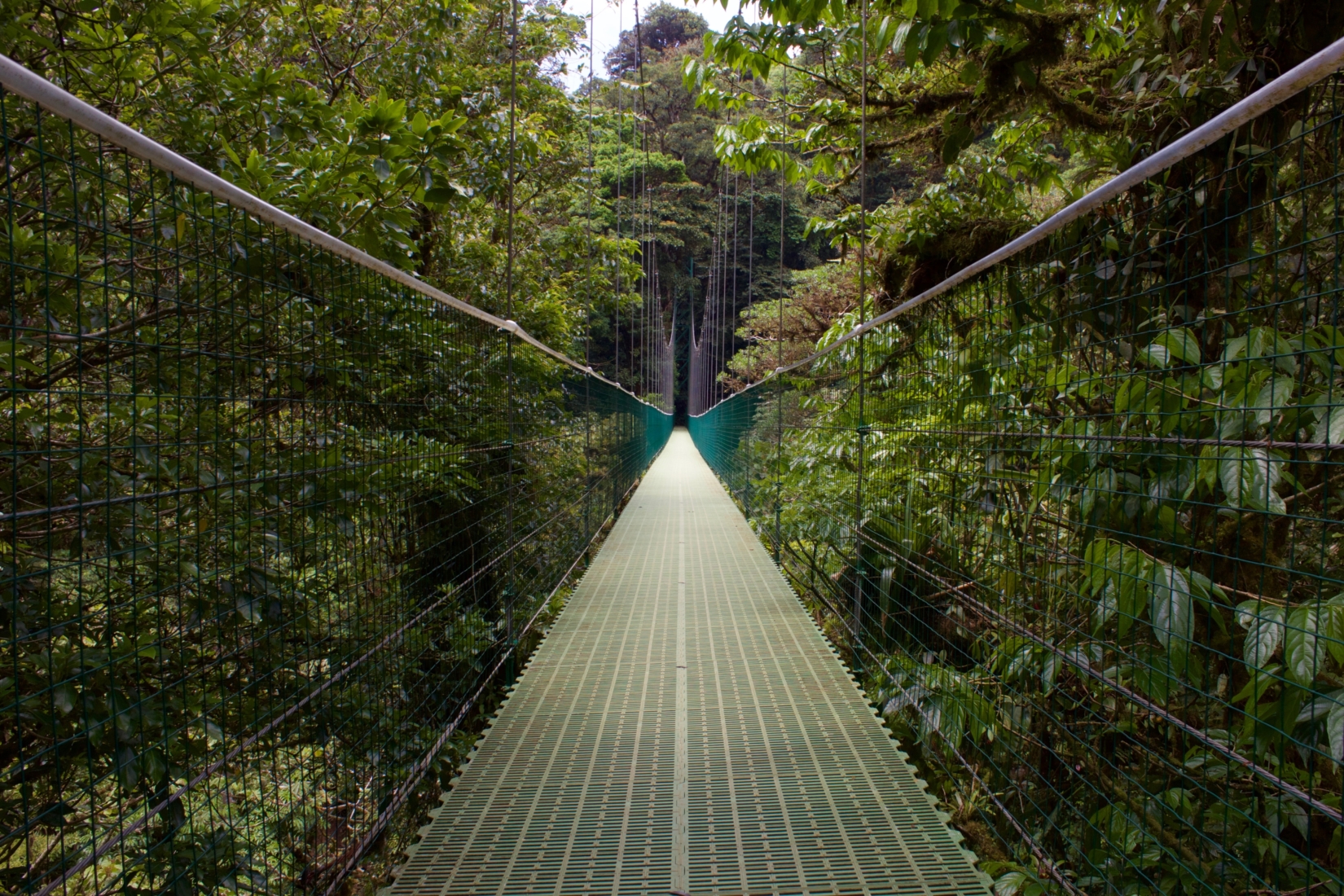
So, you’re on the ground in San José. Where to next? Magma-spewing volcanoes await to the north, idyllic surf beaches await to the west, Caribbean reefs to the east. But how to get to them? There are loads of ways…
- Buses – There’s a pretty fantastic bus network linking up most of the major destinations and smaller towns in Costa Rica. Travelers have long relied on this method and this method alone to get from point A to point B.
San José, the capital, is the hub of it all. From there, you can get out to the Caribbean side of the country in a day, or the Pacific side in just a few hours. However, traveling Costa Rica from one coast to the other will often involve a stopover in the city along the way. Routes are also made longer by the fact that buses don’t generally use major highways and often stop in small villages.
Travel by bus is definitely the budget choice, though – even the lengthiest trips cost under US$14 per person.
- Private shuttles – Private shuttles offer a neat middle-of-the-ground choice that balances comfort, travel time, and price for a great trip. They’re about five or 10 times pricier than your usual public bus in Costa Rica but often get you to where you’re going at least 50% faster.
On top of that, shuttles are limited to 12 passengers and can even do convenient pickups right at your hotel. There are a number of companies that offer private shuttles, each serving different parts of the country. Some giving lifts to the Pacific coast also allow free surfboard transit.
- Rental car – More and more travelers are now opting to drive themselves. It’s an option that’s sure to stoke the wanderlust, because it means you’ll be free to travel the length and breadth of the country, from volcano parks to surf beaches.
One word of warning to err on the side of safety: The road quality in Costa Rica leaves a lot to be desired. Venture anywhere outside of the Central Valley and San José and you’re likely to need a 4X4. Routes can be winding, prone to landslides in the wet season, and are often unpaved. For this reason, car insurance premiums can be non-negotiable additions to a trip.
- Flights – There’s an ever-growing range of internal flight connections linking up Costa Rica’s travel destinations and regions. About five different airlines now operate domestic routes. Again, the main hub is San José, but there are smaller hubs in Limón and Liberia.
Flights are naturally the fastest way to arrive in a particular region. They also open up some parts of Costa Rica that are pretty tricky to get to by road, like the very ends of the Nicoya Peninsula or Palmar Sur on the side of the Osa Peninsula in the deep south.
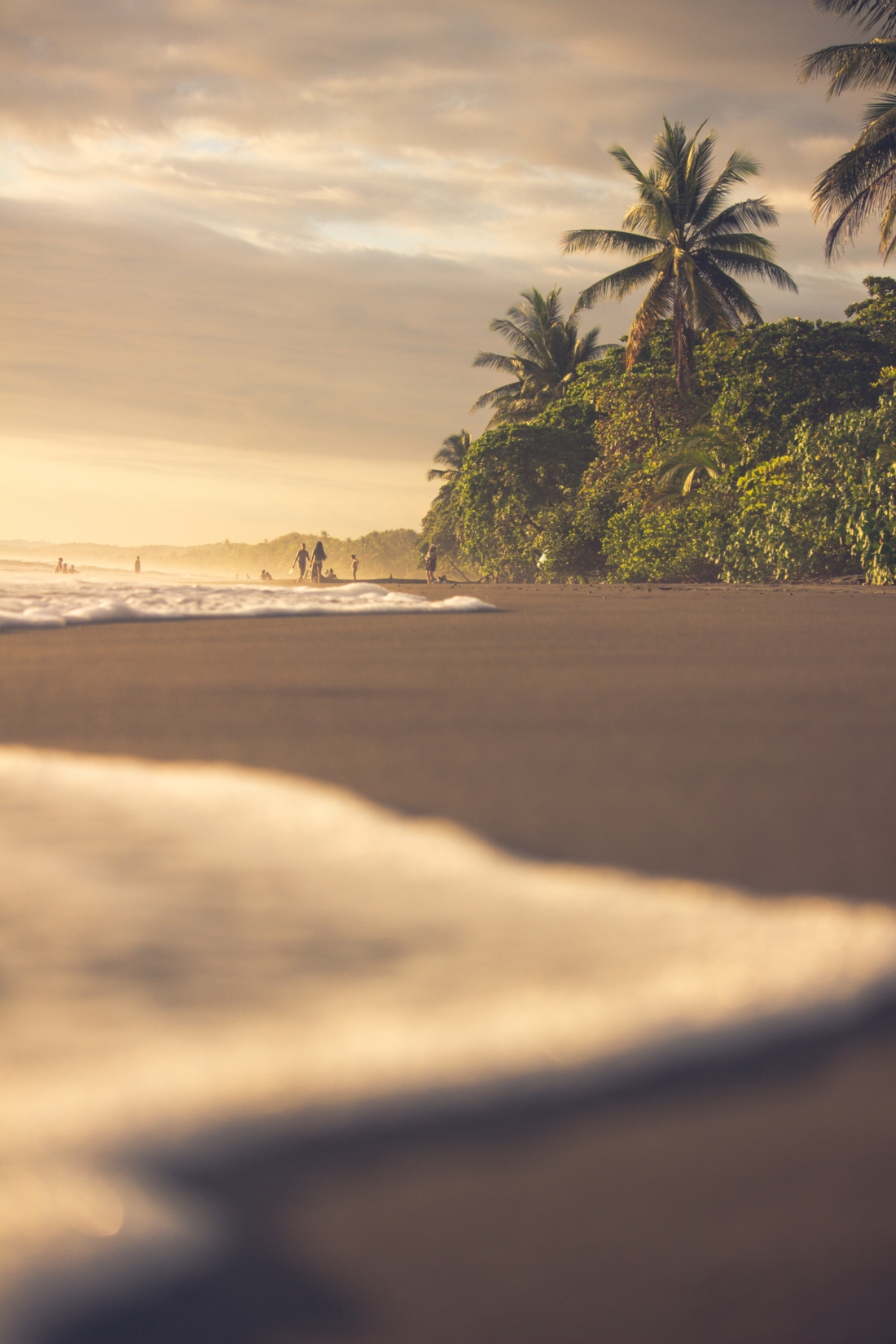
Costa Rica actually has some of the most relaxed entry requirements among travel destinations in the world. Most travelers don’t need to pre-apply for any visa or documentation before they set off. In fact, there’s a list of about 65 countries that get totally visa-free access for up to 90 days at a time (including the US, the UK, and the EU nations), and a further 40 or so nationalities that get the same but for up to 30 days at a time.
You will need to ensure that you have a passport that’s valid for at least the duration of your stay plus six months. Border control can also ask for proof of a return ticket or onward travel and proof that you have the financial means to support yourself during your trip. If you’re not sure what you need to visit Costa Rica, get in touch with my team for more guidance on entry requirements.
Costa Rica is a tale of two seasons: The dry and the wet, or, as the locals often call it, the green. Neither is better but they are different. What’s more, different regions tend to come into their own at different times of the year. Here’s a rough breakdown of the seasons by month to figure out the best time to go for your trip:
- May to November (wet or green season) – Rainfall increases across the board to about 15 inches (400 mm) per month in October, rising every month from the beginning of May. This feeds the rainforests and the jungles and really brings the highlands of Monteverde and the Central Valley to life.
Often considered the best time to visit for wildlife viewing, the green season is also generally cheaper and less busy. This is also the best time for surfing on the Pacific as it brings in the biggest waves.
- December to April (dry season) – Rainfall begins to decline in November but doesn’t really slow to a trickle until January. However, the Pacific coast of the country comes into its own around Christmas time, with long days of sun and sea breezes for those looking to escape the colder winter months in the north. Later in the dry season – around March and April – is the hottest time of the year, with average temperatures cranking up to 79°F (26°C).
The anomalies here are the coastal enclaves of Puerto Viejo de Talamanca and the Caribbean shoreline. That gorgeous region of white-sand beaches and palms that bristle in the trade winds has two dips in rainfall, first in January and February and then again in September and October.
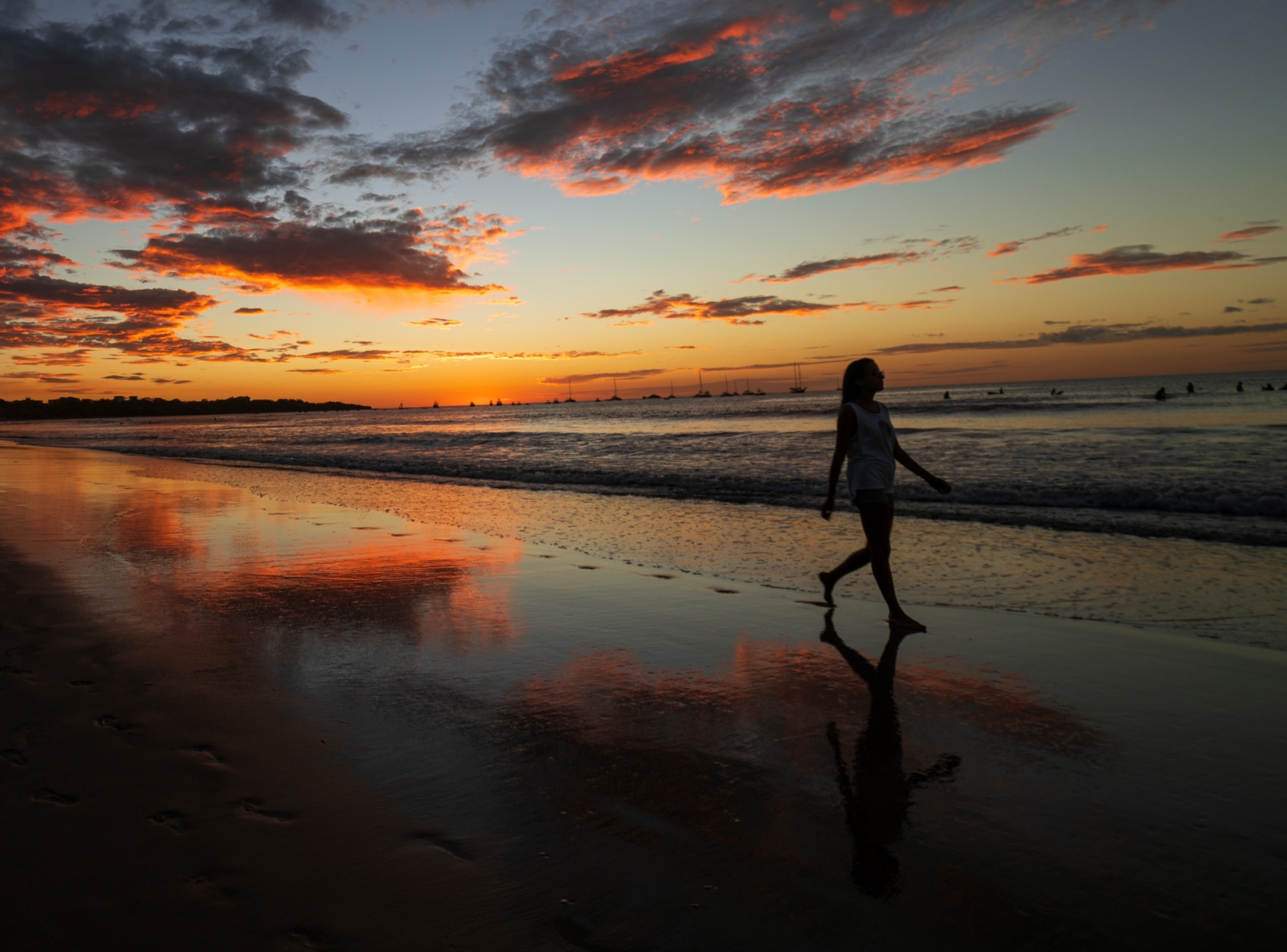
Costa Rica uses the colón. However, it is important to note when traveling in Costa Rica the US dollar (USD) is usually the currency of choice, particularly in the tourism context. Don’t be surprised to see restaurant and bar menus quoted in USD or to be asked for dollars when getting a taxi or shuttle bus. When you do pay with dollars, it’s common to be given back colones in change.
ATMs are very widespread across Costa Rica. You’ll find them in most mid-sized towns, usually inside malls and supermarkets. There are two types, one that allows for withdrawals of up to US$500 at a time, another that’s about half of that. Both take an ATM fee of about US$3 per use, plus whatever exchange rate and fees your bank may charge.
Rice, beans, fresh tropical fruits, and oodles of earthy veg make up the mainstays of the simple but tasty Costa Rican kitchen. Over the centuries, all sorts of people and cultures have made their mark – Peruvians bringing ceviche, Spanish with their country stews and rice dishes, the Aztecs with their tamales and chocolate. As such, you can look forward to a varied menu that’s often hearty and filling and overarchingly healthy. Dishes we think everyone should sample during their Costa Rica travels include:
- Gallo pinto – The national dish of Costa Rica. Usually served at breakfast, it’s rice and black beans all churned together with spices and a touch of chili pepper. They cook this basically everywhere and it’s cheap!
- Casado – Order the casado and you’ll get a plate that’s rammed full of all sorts: Fried tortilla chips, maize or corn salad, black beans, rice, and – at least for the meat eaters – a stewed leg of chicken or a slab of pork.
- Tamal – The Costa Rican answer to the tamale, this one’s a little different to its Mexican compadre in that it comes stuffed into a banana leaf and is usually served as a breakfast snack with black beans on the side.
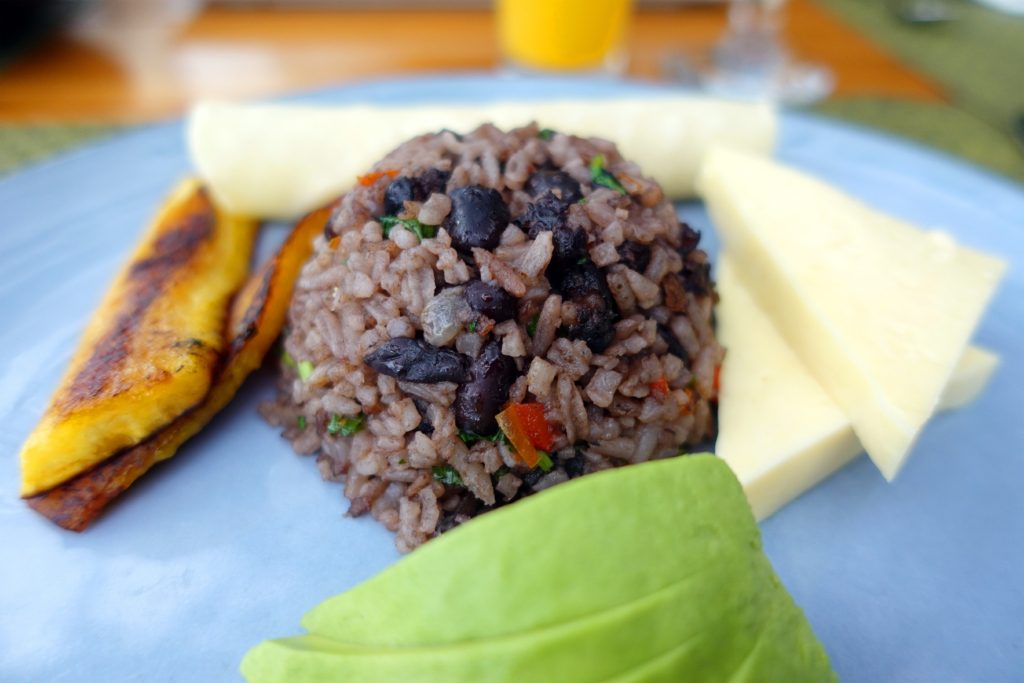
There are more travel destinations worthy of the bucket list in Costa Rica than you can shake your bird-spotting binoculars at. Here’s a look at some of the ones that we think every adventure-loving traveler should consider:
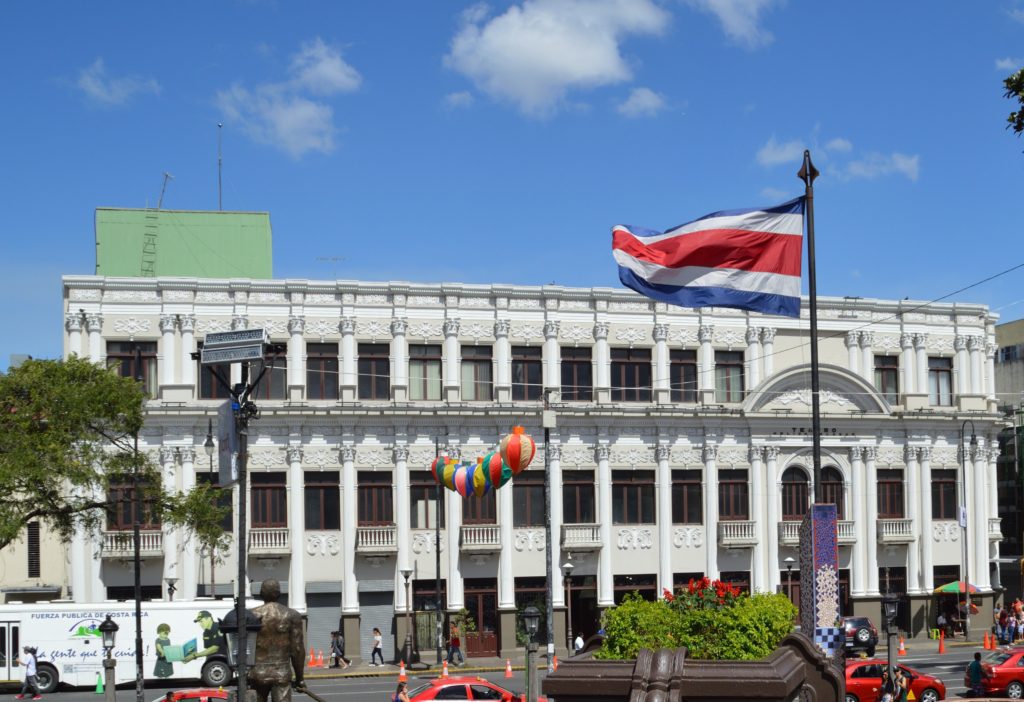
San José is the closest thing Costa Rica has to a metropolis. The nerve center of the nation, cradled between the coffee-covered ridges of the fertile Central Valley, will guide you to the trip of your dreams.
Many travelers ditch the airport for the mountains or the coast right away. Those who linger get to feel the pulse of the country, in the sleepless Central Market or between the hip cafés of Barrio Escalante. Culture buffs should make this a must, since San José hosts Costa Rica’s major national museums. Here’s just a taste of the best attractions:
- Central Market – Be enthralled by the bazaar at the heart of San José, a place to shop for exotic fruits, strange mountain medicines, fresh coffee, rich chocolate, and a whole load more.
- Museo de Oro Precolombino – Also known as the Gold Museum, this attraction hosts a collection that is simply eye-watering, hitting a zenith with El Guerrero, a life-sized ancient warrior entirely cast in precious metal.
- The Central Valley – Venture to the outskirts of town to discover organic coffee farms. Push further to find the gaping crater of Irazú, the highest active volcano in the country.
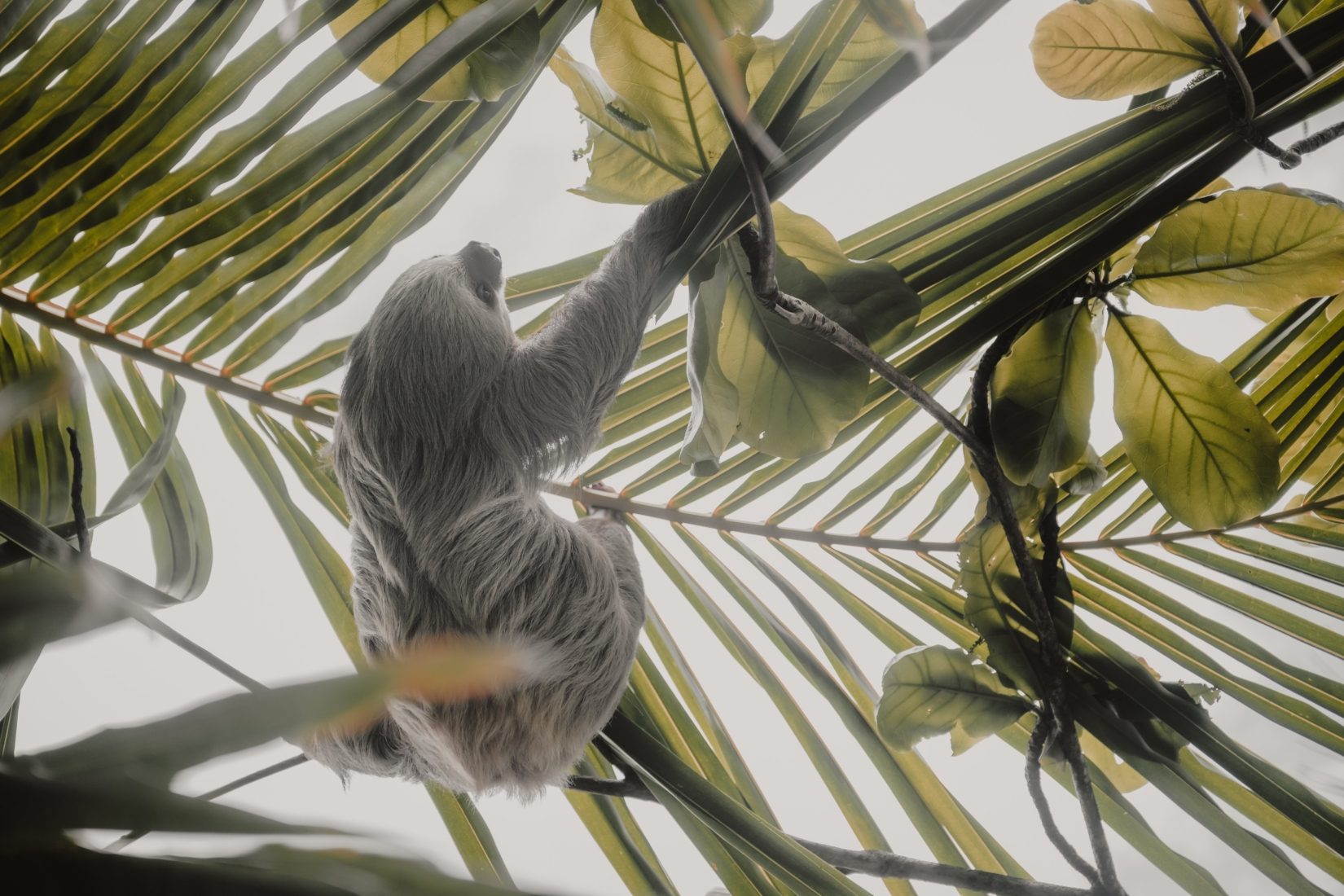
One of the eco hubs of the Caribbean coast, Tortuguero is a distant land of mist-haloed coast forest and murky riverways and a must-see for anyone traveling to Costa Rica. It’s famous for its namesake creatures: Turtles – Tortuguero means “place of the turtles” in English. The high summer months of July and August are the peak hatching times. Visit then on our Tortuguero tour to see loads of leatherback turtles emerging from nests and scuttling towards the sea.
You’ll find plenty in this comprehensive travel guide to Tortuguero , but here are some top attractions:
- Tortuguero National Park – The reserve that encompasses Tortuguero is largely about turtle conservation, but it also hosts tiger herons, caimans, and even jaguars. Truly one of the best things to see in the region!
- Barra del Colorado Wildlife Refuge – Even more remote, this vast bioreserve (also known as Refugio Nacional de Vida Silvestre Barra del Colorado) extends to the north along the Nicaraguan border. It’s for the true adventurer out there, offering 355 square miles (919 sq km) of sloth watching and crocodile dodging.
- Sea Turtle Conservancy Visitor’s Center – Here you’ll learn all about the unique aquatic creatures that put Tortuguero on the eco-tourism map.

Adrenaline is the currency around Arenal, an area that’s risen to become unquestionably the adventure travel capital of Costa Rica. The whole place swirls around the perfect cone of Arenal Volcano , truly one of the best things to see. You can’t climb it, but the rainforests, lakes, and wild rivers that cascade down its slopes offer ample opportunities for woodland hikes, rafting, and ziplining.
During this thrilling tour around Arenal , most people base themselves in the lively hub of La Fortuna, but Lake Arenal is also a doozy, snaking through the sierras with waterside bike tracks and swimming spots. Check out some of the best places to visit in the area:
- Arenal 1968 Trail – An amazing hiking path that weaves through lava fields that were laid down in one of the last major eruptions of the volcano in – you guessed it – the year 1968.
- Lake Arenal – The largest lake in Costa Rica and a major destination for kitesurfers in the winter months.
- Tabacon Hot Springs – The perfect place to soothe tired muscles after a jaunt around the Arenal trails, the Tabacon Hot Springs is a spa complex with bathing in geothermally warmed waterfall pools.
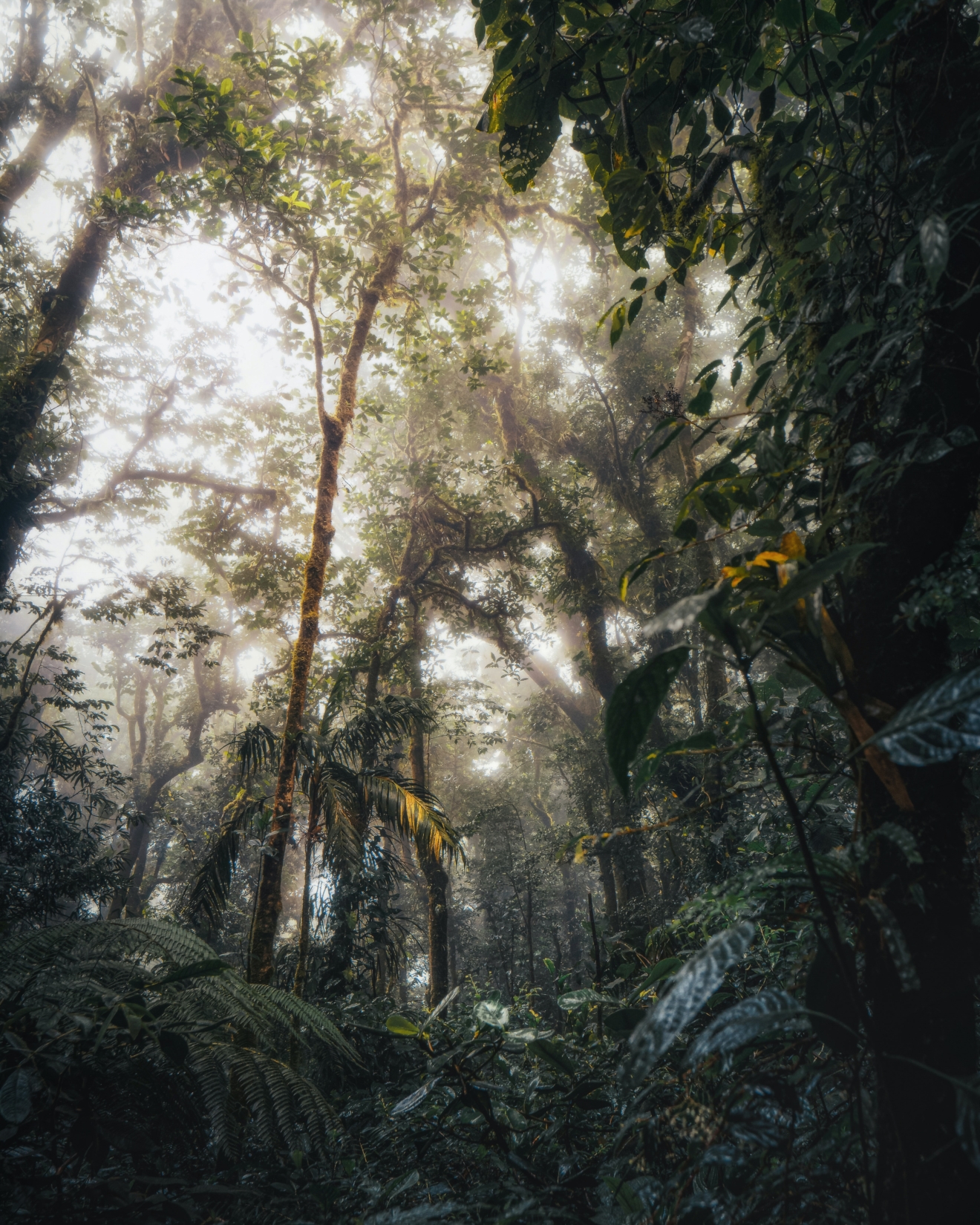
If there’s anywhere that can capture the booming biodiversity of Costa Rica in one hit, it’s Monteverde. Known for the Monteverde Cloud Forest Biological Reserve, the town is surrounded by uber-rare highland habitats.
Hit the trails to delve into a tangle of huge strangler trees and alien-like orchid species. The birdwatching is second to none, with resplendent quetzals even making an appearance now and then. Follow that up with night hikes to see the nocturnal animals emerge. Be sure to experience these top places to visit:
- Monteverde Cloud Forest Biological Reserve – The piece de resistance of Monteverde is this 41-square mile (106-sq km) dash of cloud forest, which showcases over 2,500 plant species and all sorts of amazing bird life.
- Night hikes – Walks into the cloud forest at night are a totally different experience, letting you see the strange lights and hear the wild noises of the rainforest in the shadows.
- Sky Walk Monteverde – Walk some of the best hanging bridges in Costa Rica and dare yourself to zipline through the dense canopy.
MANUEL ANTONIO
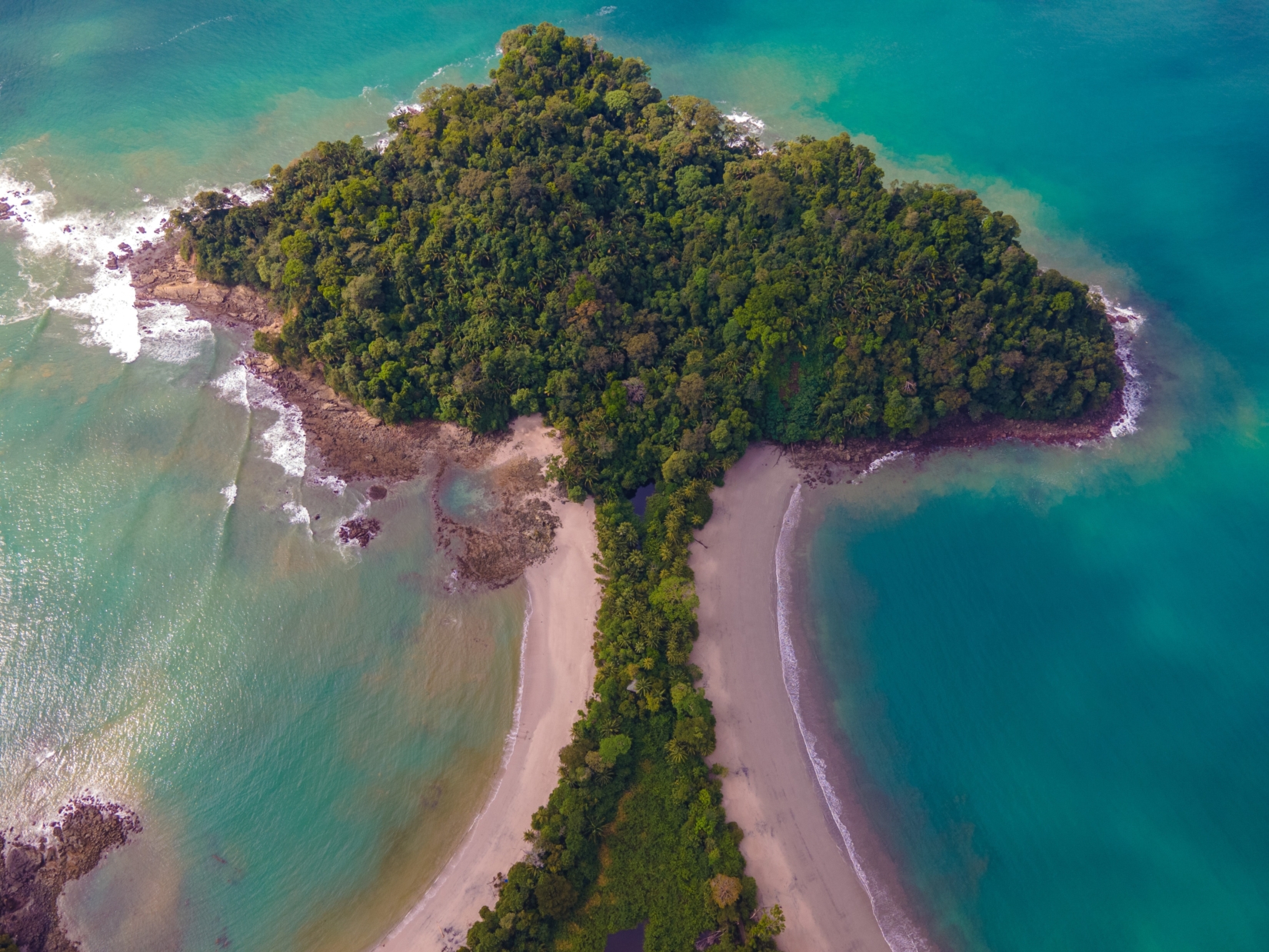
At just eight square miles (21 sq km), Manuel Antonio National Park is the smallest of all the reserves in Costa Rica. But size hardly matters when this attraction can boast arguably the highest biodiversity in the world.
Over just a handful of marked trails, visitors to this clutch of towering coast forest on the Pacific will get to spot three- and two-toed sloths, coatis, green iguanas, squirrel monkeys – the list goes on. After, you emerge onto a stretch of idyllic beige sand framed by teal-tinted waters. Some of our favorite places on this Manuel Antonio tour include:
- Manuel Antonio National Park – The main wildlife reserve here and the reason most people visit, this one’s a top place to see sloths in the wild.
- Manuel Antonio Beach – A truly stunning scythe of powdery sand that’s within the national park and well worth a visit.
- Santa Juana Lodge – Experience more off-the-beaten-path corners of the Manuel Antonio region by venturing to this lodge in the highlands nearby. It sits amid forests filled with marked trails, each punctuated by waterfalls and gurgling rivers perfect for a trip to see the beauty of Costa Rica.

Many of the great Pacific Ocean jewels of Costa Rica sit in Guanacaste province. It’s a big cut-out of the country, occupying something like 6,000 square miles (10,000 sq km) of the northwest, from the cloud-shattering volcanoes of the Cordillera de Tilaran all the way to the Nicaragua border.
It’s among the most-visited parts of the nation. To experience why, book your Guanacaste trip here . One reason why: the amazing surfing spots . From Tamarindo right down to Playa Caletas, the region is a doozy for wave chasers and surfers of all levels. On top of that, you get the waterfall-splashing forests of the Nicoya Peninsula, the boho beach escape of Samara, and plenty, plenty more, such as:
- Tamarindo – Once a pint-sized fishing village, Tamarindo is now the capital of Pacific-coast surfing in Costa Rica, and a bit of a party town once the sun goes down. Definitely worth the visit for the splendid beaches regardless of your ability on a board.
- Diria National Park – Leave behind the surf breaks for a while to explore this medium-elevation forest park where a trio of hiking routes promise glimpses of cuckoos and howler monkeys.
- Santa Rosa National Park – Tropical oak forests spill down to legendary surf destinations in this northern park, while the Islas Murcielago are a veritable diving mecca off the shore – so long as you don’t mind visiting the hulking bull sharks, that is!
OSA PENINSULA

The Osa Peninsula is the land of the primeval. Bending like a thumb into the Pacific from southwestern Costa Rica, it’s one of the most untouched and best-preserved corners of the region. That shows, since uber-rare Baird’s tapirs, threatened margay cats, and even jaguars still stalk the great swathes of remaining virgin rainforest.
The web of trails at the Corcovado National Park is probably the highlight, but there’s also whale watching and surfing to be done in Drake’s Bay and Carate among many other great places to visit.
- Corcovado National Park – Once hailed as the most “biologically intense place on Earth,” this reserve contains the largest continuous patch of old-growth coast jungle in the Americas. It also extends into the sea, where there are whales, dolphins, sharks – you name it!
- Drake Bay – Named for the marauding pirate who they say anchored and hid treasure here, Drake Bay is the gateway to the Osa Peninsula wilds and a top place to organize eco tours.
- Isla del Cano – Rich Pacific waters circle the whole Osa Peninsula, and the trip to the Isla del Cano is the perfect way to explore them. Expect to see manatees, dolphins, sea turtles, false killer whales, and a whole load more on your way to the remote rock in the ocean.
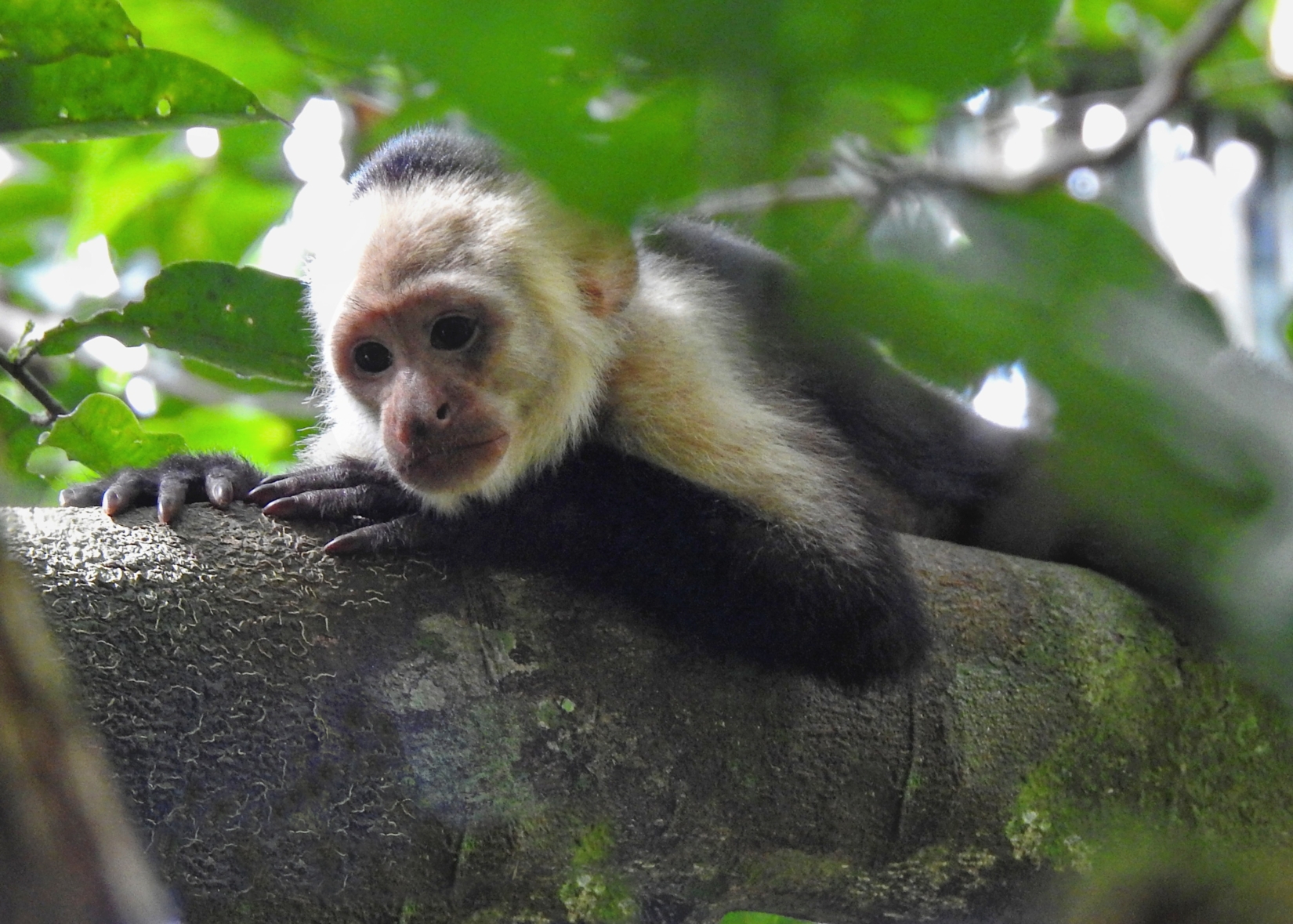
And there you have it, an introduction to our favorite places to visit in Costa Rica! We hope this guide has given you a helpful idea of what to expect as you plan your one-of-a-kind adventure to this extraordinary country in Central America.
If you have any additional questions or need help planning your adventure to Costa Rica, do not hesitate to contact us . You can also learn more about our unforgettable Costa Rica adventure tour .
Finally, if you’re new to The Explorer’s Passage, here’s why you should choose us to perfectly plan your next adventure on one of our other world-class tour packages to some of the most exciting places on earth.
But don’t just take our word for it, check out our client testimonials and 5-star TripAdvisor rating for more on the excellent service and experiences we provide.
Thanks for reading and I look forward to seeing you in Costa Rica!
Cheers, Jeff
Jeff Bonaldi Founder & CEO The Explorer’s Passage
About Jeff Bonaldi
Jeff Bonaldi is the Founder and CEO of The Explorer’s Passage, a premier adventure travel company. His mission is to provide travelers with the opportunity to transform their lives and the planet through the power of adventure.
Learn more about Jeff’s story and his company HERE .
Share This Amazing Location!
Related posts.
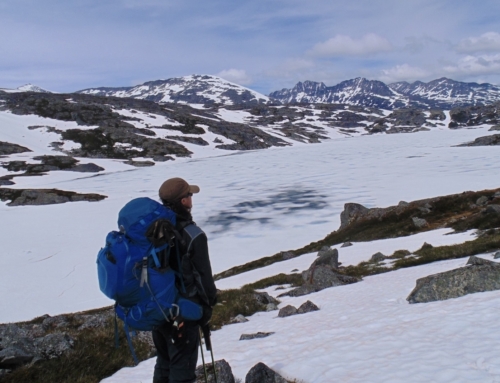
A Traveler’s Must-Read Guide to the Chilkoot Trail Hike
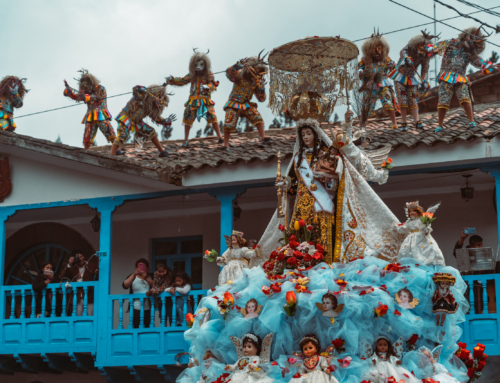
All You Need to Know About the Virgen del Carmen Festival in Peru
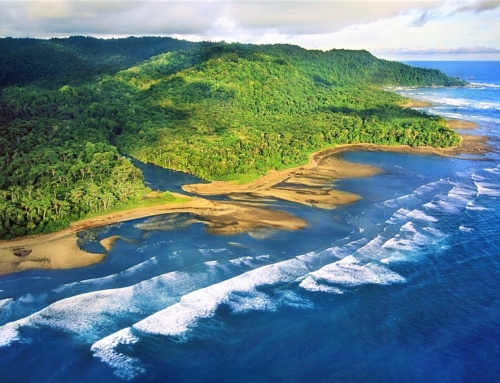
Top Attractions on the Osa Peninsula in Costa Rica

Ultimate Guanacaste Travel Guide – Explore Costa Rica’s Coastal Paradise
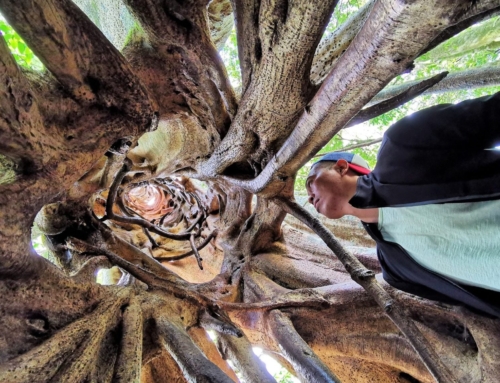
Top Things to Know Before Visiting Monteverde, Costa Rica

A Traveler’s Handbook to Manuel Antonio in Costa Rica – Everything to Know for Your Trip
- Skip to primary navigation
- Skip to main content
- Skip to primary sidebar
- Skip to footer

Costa Rica Travel Information
An Incredible Two Weeks in Costa Rica Itinerary: Discover the Caribbean and Pacific
April 15, 2022 By Sammi 19 Comments
Visiting Costa Rica for two weeks but not sure where to go? This two weeks in Costa Rica sample itinerary will help! We put together this specific trip for some friends who wanted to experience both the Caribbean and the Pacific sides of the country.
In this 14 days Costa Rica itinerary, you will be able to see tons of wildlife, hike, visit several different national parks, go on adventures, see a volcano and relax at the beach. You get a little of everything!
There are affiliate links in this post.
What to Know About This Two Weeks in Costa Rica Itinerary
Here are the destinations for this sample 2 week itinerary in Costa Rica.
Day 1: San Jose Days 2 – 3: Tortuguero Day 4: Travel to La Fortuna Days 5 – 7: Arenal/La Fortuna Day 8 & 9: Monteverde Days 10 – 13: Jaco/Manuel Antonio Day 14: Fly home
Two Weeks in Costa Rica Itinerary Map
Click here to go our 2 week Costa Rica itinerary interactive map.
You land and depart from SJO Airport (San Jose International Airport)
If for some reason, you absolutely have to fly into LIR (Guanacaste International Airport), you will need to arrange transportation to San Jose the day you land, this is about a 5 hour travel day. You can book a private shuttle (best option, can pick up directly at airport), shared shuttle (not ideal, only two departures) or take the public bus (least ideal, must taxi to Liberia, then take bus to San Jose). You have to be in San Jose on Day 2 to get picked up for the Tortuguero trip around 530-6 AM.
Then if you are flying out of LIR Airport, you will need to leave on Day 13 to stay the night before near the airport ( Hilton Garden Inn Guanacaste Airport is the best option). Jaco/Manuel Antonio to LIR Airport is approximately a 3.5-4.5 hour drive.
If you need to book a private shuttle, please contact us for a quote.
There are several transportation options
This itinerary will start by booking a tour package to Tortuguero that includes roundtrip transportation from the tour operator. After your Tortoguero trip, you will pick up your rental car in Guapiles to drive directly to La Fortuna. The easiest transportation method for this itinerary is to rent a car as you will have more freedom and flexibility, especially if you want to explore. In this itinerary, I will be using the car rental method to get around.
If you don’t want to drive, you can book shared or private shuttles. For those on a strict budget, you can take the bus. We don’t highly recommend it unless you’re on a really tight budget. You will have to transfer several times from San Jose to Tortuguero, Monteverde to the Pacific Coast so make sure to plan out your routes and travel days extremely carefully.
For the car rental, we recommend Adobe Rent a Car who have a partnership with. Save with our Costa Rica car rental discount and get 2 free drivers, free baby & booster seats and more!
It is recommended to rent a high car for this 2 week Costa Rica itinerary
For this itinerary, a high car is the best option (4×4 or 4×2). If it is just 2 people, a Suzuki Jimny 4×4 (manual only) and Mistubishi ASX 4wd automatic are good options. Other options are Hyundai Venue 4×2 (dry season is fine) or Hyundai Tucson 4×4. If you have a group of 4 to 5 people with limited luggage, a Mitsubishi Montero Sport 4×4 or Chevy Trailblazer is a good option.
This itinerary includes a booked tour to Tortuguero but you can also go on your own
For the first destination, Tortuguero, I chose to visit on a tour package as it is super easy. The package includes roundtrip transportation, meals, lodging, guided boat rides and walks. (Save 7% on your Tortuguero package !)
However, if you don’t want to do it that way, you can go on your own. You can book a flight to Tortuguero, a shuttle to La Pavona dock from San Jose or you can take the bus. Read about how to get to Tortuguero here.
Prepare for rain at the Caribbean side
The Caribbean coast tends to rain more throughout the year. If you are visiting beginning of May to mid December, come prepared for rain as that is the Costa Rica rainy season. Monteverde and Arenal tend to rain more since it is the rain forest and in higher elevation, Guanacaste tends to be drier.
Likewise, Monteverde is a bit cooler than the other destinations so bring a warm sweater and long pants.
Check our Costa Rica packing list for tips on what to bring.
Day 1: San Jose
Welcome to Costa Rica! Today is a rest day to get ready for your trip. If you arrive early, you can walk around downtown to check out the sights and sounds or simply relax.
Where to stay in San Jose
We recommend staying in a hotel in or near downtown San Jose so that you can easily walk around downtown and experience local city life. The Tortuguero package includes pick up at hotels in San Jose only as well.
It is about a 25 minute drive from SJO airport to downtown San Jose. You can arrange an airport transfer or call an Uber which is super easy. Get $10 USD Uber credit in our Uber Costa Rica guide .
Hotel recommendations are Hotel Presidente , Hotel Grano de Oro , Park Inn by Radisson , San Jose Barcelo Palacio , Exec Center San Jose , Selina San Jose , Costa Rica Backpackers Hostel San Jose. It is best to stay in a hotel near downtown San Jose or La Sabana because the Torutugero tour operator will pick up directly from hotels in that area. They do not pick up at Airbnbs or vacation rentals/houses outside of the San Jose area.
Day 2: Tortuguero
About Tortuguero: Tortuguero is a small village in the northern Caribbean coast of Costa Rica, famous for the Tortuguero National Park and nesting sea turtle beaches. It is a rural area of Costa Rica, with a population of around 500 and is plane and boat access only.
Thanks to the rich biodiversity and rainforest covered sandbars and canals, Tortuguero’s nickname is “little Amazon”!
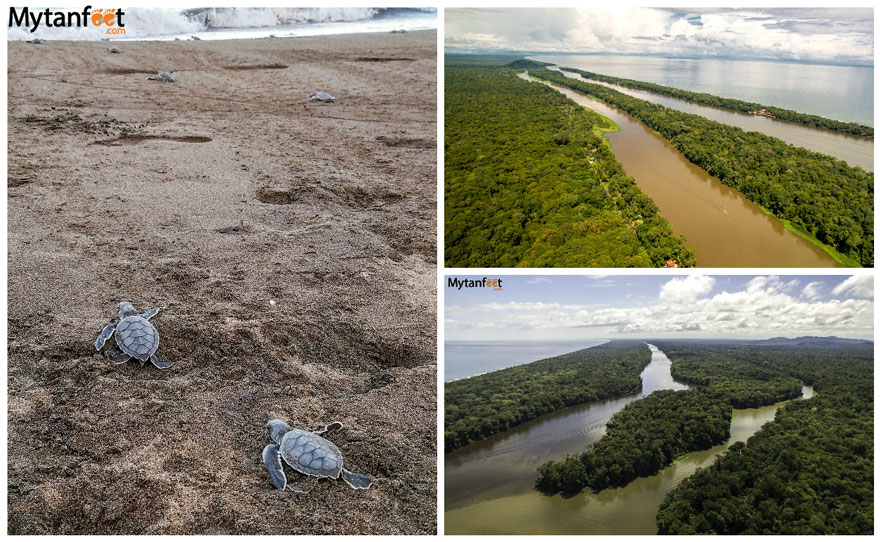
Today is an early day as you get picked up around 6 AM to head to Tortuguero. It is about a 4 hour bus ride and they stop for breakfast on the way. Then you will reach La Pavona boat launch where you will take an hour boat ride (depending on the tide, it may take longer) to the hotel.
After you have lunch, take the boat to Tortuguero village to walk around town and go on the beach to see turtles. If you are visiting during turtle nesting season (July – October), you will be able to see the turtle nestings. If you visit in November, you will likely be able to see baby turtles hatching.
Recommended packages/tour companies and cost
Pachira Lodge and Mawamba Lodge are the two well known lodges that offer all-inclusive tour packages. They offer various Tortuguero tour packages with roundtrip transportation, meals, lodging and activities included. Click here to get our Tortuguero package discount with Pachira!
Day 3: Tortuguero
Day 3 is dedicated to exploring Tortuguero National Park. For the best wildlife watching opportunities, take a 5 AM boat ride around the national park to see different birds and mammals. This is about a 2 hour boat ride, make sure to bring binoculars or a telephoto lens to get pictures of wildlife!
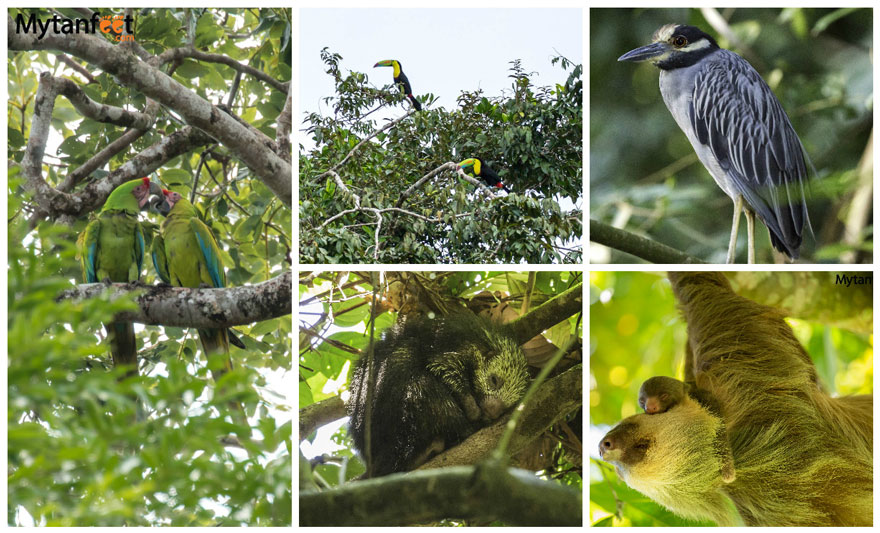
After the boat ride, it’s time for breakfast and to relax a little. Most packages also include a guided walk around the trails. If your package includes this walk, it takes about 1.5 hours and you can see more wildlife like monkeys and sloths.
Then the afternoon is free for you to do what you wish.
If you would like to see more of the national park on your own, you can ask the lodge to help you arrange a public boat to the town and see if any of the local guides there are available for a kayaking tour. We kayaked through the national park which was an incredible experience as we got to get closer to the animals. We were also able to kayak to areas where motorized boats can’t fit, so it was a very peaceful and serene experience.
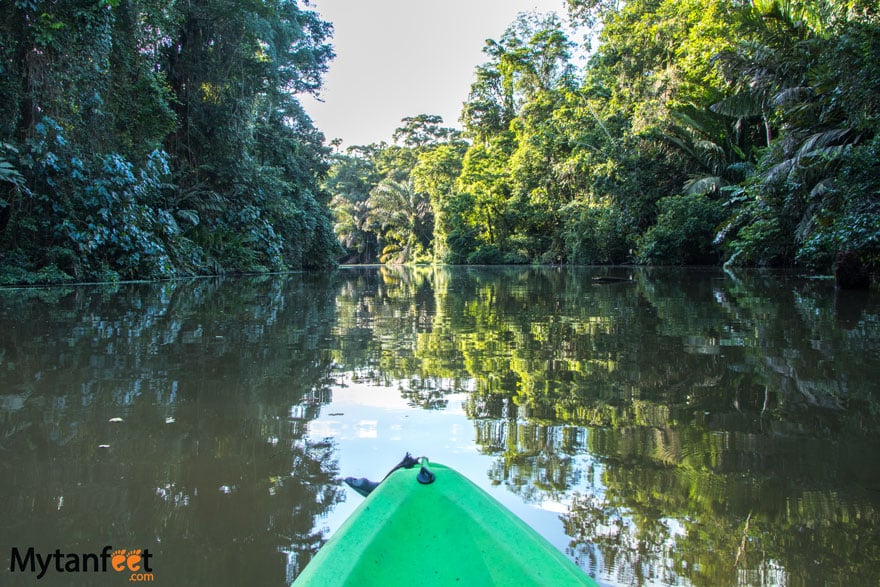
If you go kayaking, make sure to return back to your hotel before 5 PM) to relax for the rest of the day (it starts getting dark around 5 PM). Tomorrow you will travel back to San Jose.
Day 4: Travel to La Fortuna
Today is a travel day. You’ll take the boat back to La Pavona dock with the tour company. Then, the tour company will take you to Guapiles where you will pick up your rental car from Adobe Rent a Car after you have lunch. From there, you will drive to La Fortuna, which is about a 2 hour drive from the Guapiles lunch spot.
You’ll usually get the car around 1-2 PM and reach La Fortuna before dark.
Day 5, 6 and 7: Arenal/La Fortuna
About La Fortuna : La Fortuna is the main town and tourism hub near Arenal Volcano. Famous for its plethora of outdoor adventure, the national park, hot springs and the volcano, it’s an excellent place for first time visitors.
Where to stay in La Fortuna
You have a ton of options for hotels in La Fortuna. If you want to splurge on a hotel for this 14 day Costa Rica itinerary, La Fortuna is an excellent place to do so with a plethora of luxury resorts. Many upscale hotels have a great view of Arenal Volcano, hot springs, spa or their own private hot tub/pool.
High end hotels ($300 USD and up): Nayara , Springs Resort & Spa , Arenal Kioro , Amor Arenal , The Royal Corin , Los Lagos , Volcano Lodge and Tabacon . You can read about other Arenal luxury hotels in this post.
Mid Range hotels ($100-250 USD): Kokoro , Motaña de Fuego , Hotel Magic Mountain , Lavas Tacotal , Arenal History Inn , or Arenal Springs .
Budget hotels (below $100 USD): You will have to stay in La Fortuna if your budget is below $100 USD a night. Check Hotel Las Colinas , Choza Inn, El Secreto , San Bosco Inn , or Hotel La Fortuna . These hotels are in town.
There are also many Airbnbs and vacation rentals. If you’re coming in a big group or family, we stayed at an Airbnb in Arenal that was awesome. Fits up to 8 people and only 5 minutes from town with tons of wildlife on the property!
We personally love Arenal Observatory Lodge for a unique experience close to the rainforest.
Things to do
You have a lot of adventure activities in Arenal to choose from for your 3 full days there.
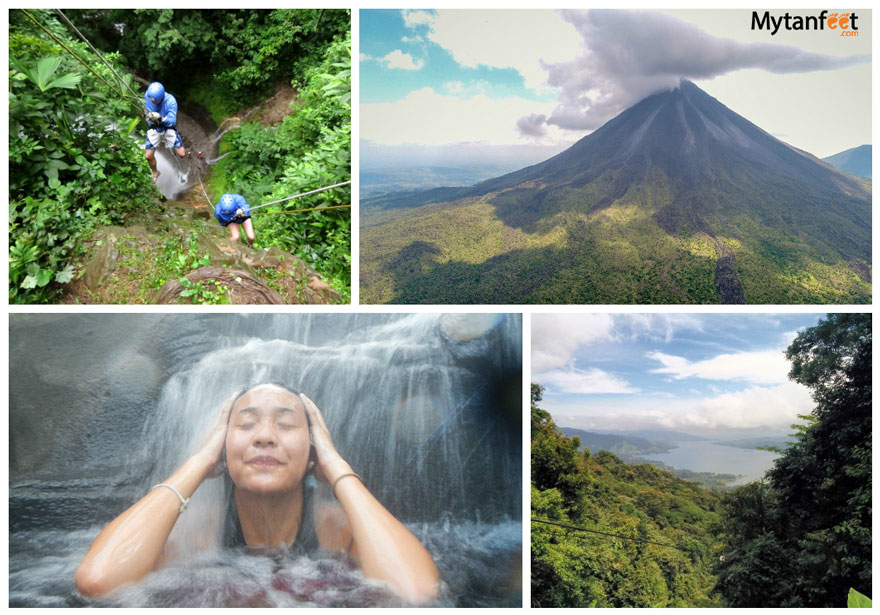
Ziplining: Our favorite zipline in Arenal is SkyTrek. You go up the aerial tram to zipline over the rain forest with views of both the volcano and lake!
Canyoning: An exciting adventure deep in the rain forest. Jump down 200 foot waterfalls!
Hot springs: No trip to Arenal is complete without visiting the hot springs. Many hotels have their own or you can visit hot spring establishments like Baldi, Eco Termales or Paradise.
Click here to read more of our favorite things to do in Arenal .
Book tours or guide?
Since you have a rental car, you don’t need to book a tour. You can drive yourself to the attractions and do a self guided walk. If you’d like a guide for the national park or hanging bridges, you can hire one there or from a tour company. But you can perfectly visit the national park, hanging bridges, La Fortuna waterfall and go to the hot springs on your own.
Day 8: Travel to Monteverde
On Day 8, you will travel to Monteverde . The drive takes around 3 hours and goes around the lake and up the mountains to Monteverde so you will get some gorgeous views.
If you decide not to rent a car, a cool way to get from Arenal to Monteverde is by the Lake Arenal taxi boat. Get picked up at your hotel in Arenal, take a 2 hour boat ride across the lake and get dropped off at your hotel in Monteverde. This takes 3 hours and they have one in the morning and afternoon. Way more fun than sitting on a bus!
Where to stay in Monteverde
Monteverde has hostels and hotels and since this area is more rural, lodges and inns are very common. There are a few hostels in town such as Santa Elena Backpackers and Selina Monteverde. You can stay at a more upscale hotel with views of the cloud forest such as Senda , Hotel Belmar , Hotel Poco a Poco or El Establo.
We stayed at 2 Airbnbs in Monteverde that were lovely. Perfect for couples or 2 friends.
Day 9: Monteverde
About Monteverde: This area is famous for the vulnerable cloud forests of which hundreds of birds, insects, plants and flowers call home. Tropical cloud forests are unique in that they only exist in a few places in the world, one being Costa Rica. Monteverde has been named as the best place in the world to see Resplendant Quetzals so if you love birds, this is your chance to see them. Monteverde is also great for hiking and ziplining, as they claim to have set up the first recreational zipline in the world.
There are a lot of things to do in Monteverde but since you went on adventures already in Arenal, we recommend to hike the cloud forests. There are 3 cloud forest reserves: Monteverde Cloud Forest Biological Reserve, Santa Elena Reserve and Children’s Eternal Rain forest and they are all wonderful places for hiking.
Not sure which one to visit? Check our post comparing the three Monteverde cloud forest reserves .
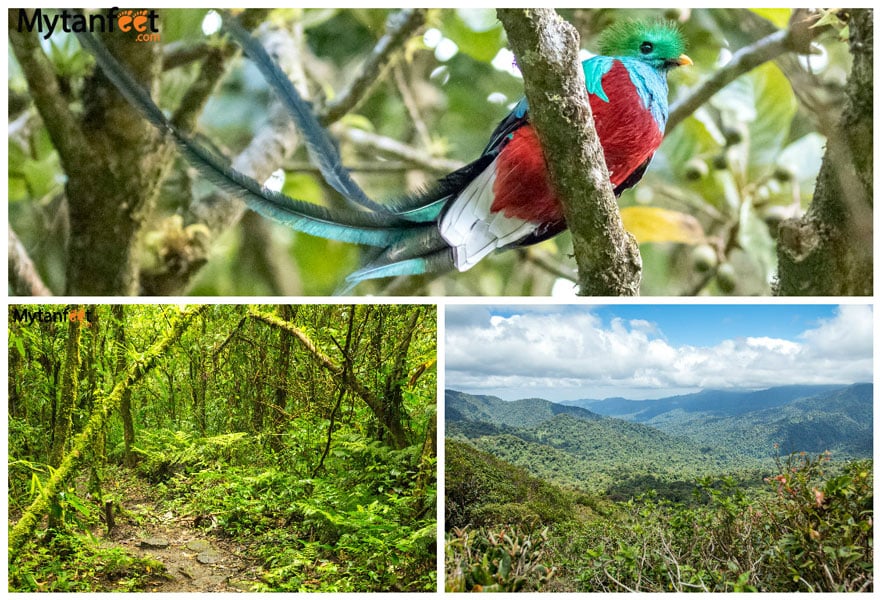
For your 1 full day in Monteverde, here are some ideas.
Take an early morning bird watching tour at Curi Cancha Reserve to see Resplendant Quetzals and then hike one of the cloud forests in the early afternoon. There are trails of varying lengths and difficulties in all the reserves so you can do an easy loop. Or if you’re not super interested in seeing birds, you can go straight ahead to the cloud forest reserves. We recommend hiring guides for any hike or walk you do as they can point out wildlife (specifically birds) and teach you about the importance of cloud forests.
You can also take a night walk at 6 PM. They offer night walks in Arenal too which has more opportunities to see frogs, snakes and two types of sloths. In Monteverde, only the 2 fingered sloths lives there and there aren’t many snakes or frogs.
Another idea is to visit one of the parks like SkyTrek Monteverde or Selvatura Park for a full day. SkyTrek has an aerial tram and hanging bridges and Selvatura Park has hanging bridges, a butterfly garden, sloth sancutary and a reptile exhibit.
Day 10 – 13: Jaco/Manuel Antonio
Now it’s time to hit the beach! You will head to the Central Pacific coast to either the towns of Jaco or Manuel Antonio, about a 3-4 hour drive from Monteverde.
Jaco is the most developed beach town in Costa Rica, it is like a city beach. It’s only a 1.5 hour drive from San Jose so you will see lots of locals there. Jaco is famous for surfing, nightlife and food. It’s a great destination for those looking for more amenities, beachfront lodging and an exciting night life. Jaco beach is not the prettiest, with dark sand and lots of rocks but has excellent surfing and sunsets. Not good for swimming or snorkeling.
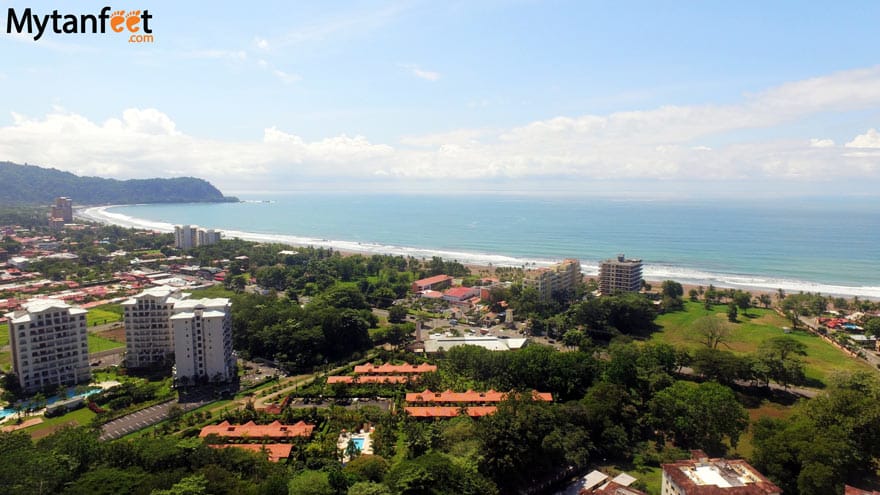
For hotels, there is a range of small family run hotels to an all-inclusive beachfront resort and a ton of vacation rentals/condos. Las Palmas, Paloma Blanca, Jaco Bay, MonteCarlo, Costa Linda and El Encanto are just a few options of the many condos in Jaco. As for hotels, some good ones are Jaco Beach Break , Tuanis Aparthotel Jaco , Birds of Paradise and Hotel Tangeri.
You can relax at the beach, take a surf lesson, go shopping (tons of super cute bikinis stores), check out Playa Hermosa , party, or just simply relax. We highly recommend to visit Manuel Antonio National Park for a day trip or Vista Los Suenos Adventure Park in case you want to add some more adventure to your trip (their ATV tour is great). Get 5% off in that link!
Manuel Antonio/Quepos
Manuel Antonio is home to the famous Manuel Antonio National Park, several white sand beaches and tons of lush rainforest. It offers more luxury lodging than Jaco so in case you’re not that interested in partying or surfing and you would rather continue exploring the rainforests and see a white sand beach, Manuel Antonio is the better option. It’s about a 1 hour drive from Jaco. There is also more wildlife in Manuel Antonio.
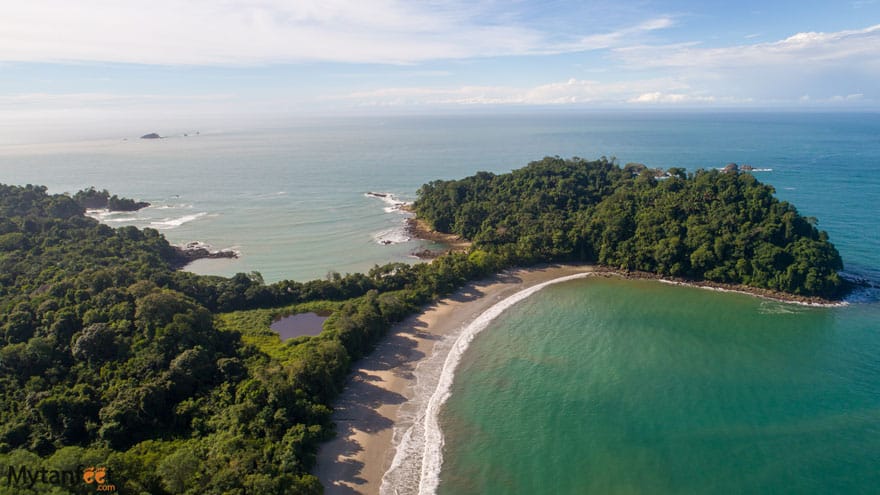
Where to Stay
If you want to end your trip with a little luxury, then Manuel Antonio’s got the hotel for you. In fact, it might be a bit hard for you to decide which hotel to stay at because there are so many beautiful, incredibly nice hotels and beach resorts! Some luxury options are Tulemar , Arenas del Mar , Gaia , Hotel Makanda by the Sea , the Falls , La Mariposa , Jungle Beach Hotel and Hotel Costa Verde .
For more budget options or just not as expensive, Best Western Kamuk , Pura Vida Mini Hostel , Hotel Plaza Yara , Hostel Plinio and Selina Manuel Antonio are some options.
Definitely a visit to the Manuel Antonio National Park ! A must for hiking, beach and wildlife. A guided visit is recommended to learn more about the park and see animals.
You can relax, take a sunset cruise, go shopping, Damas Island mangrove kayaking , parasailing, enjoy the beach, go ziplining, fishing, surfing or hang out by the pool. Read more about things to do in Manuel Antonio in our post and also get our Manuel Antonio tours discount!
Day 14: Fly out of San Jose International Airport
And today you go back home. From Jaco, it’s about a 1.5-2 hour drive. From Manuel Antonio, it’s about 3 hours. Make sure to plan accordingly so you can return your car and arrive at the airport at least 2-3 hours early. Drop off your car at the Adobe Rent a Car San Jose Airport office and they will take you to the airport in their free airport shuttle.
With this itinerary, you will have had a wonderful time exploring the Caribbean and Pacific coasts. You got to experience the rain forest, volcano, cloud forest and beach during your two weeks in Costa Rica.
Estimated Two Weeks in Costa Rica Cost
If you’re staying in hotels that cost around $100 USD a night, eating around $40 USD a day and doing several tours, the estimated cost for your two weeks in Costa Rica is around $1600 USD per person not including the car rental. The average cost of a 10 day car rental for a Hyundai Tucson automatic can be around $800 USD and a Suzuki Jimny manual is around $650 USD (without insurances, fees, taxes, extras, etc. and it also depends on the time of year you visit).
Please note that the cost of traveling in Costa Rica has risen the past couple years so car rentals are more expensive now as well as some tours and hotels.
Check out these other Costa Rica itineraries below for more ideas!
5 Day Guanacaste itinerary
1 Week Costa Rica itinerary: Jaco, Manuel Antonio and Uvita (Central and South Pacific)
5 days in Arenal and Monteverde
14 days in Costa Rica: Tamarindo, Monteverde, Bijagua and Rincon de la Vieja
1 month Costa Rica road trip
There are affiliate links in this post
Reader Interactions
Gareth says
September 26, 2022
Hi there, Awesome site/blog for resources and planning. Our family has luckily been to CR twice, each ~10-12 trips. First was LIR – Samara – Rio Perdido area – MA/Dominical – SJO with 2 year old. Second time was LIR – Playa Hermosa GTE – Arenal/La Fortuna – Sarapiqui – SJO with 5 year & 2 year old. We’re dreaming again, and trying to come up with a new itinerary, likely 10-14 days (max) with now almost 6 & 9 year old, likely in April (2023 or 2024 TBD)… but want to change it up. Trying to decide between (and structure the itinerary accordingly):
1) South Pacific (aim of getting in some of the Osa Peninsula for a good half of the itinerary) or 2) Some of the Caribbean coast I think it needs to be one or the other, in/out of SJO, and good to slow our pace to settle in to either spot, no less than 3 nights per stay (exception being if we tacked on a Tortuguero for 2 nights package at beginning or end of a Caribbean coast itinerary
Any thoughts/advice?
September 27, 2022
Hi Gareth, you can check out our 1 month itinerary and adapt it to 14 days: 1 month Costa Rica itinerary
You could do something like land in San Jose – Tortuguero (2 days, 1 night package which we have a discount for ) – San Jose 1 night – Uvita a couple nights – Drake Bay via Sierpe to Drake Bay boat and then spend the rest of your days in Drake Bay to experience the Osa Peninsula.
Melissa says
January 17, 2021
Thank you so much for your website. The information is helping me prepare for a trip in May. I’m curious if you have an itinerary to see both coasts in mid May to June. 14 days total, two days travel days.
Again thank you so much!
January 18, 2021
Hi Melissa!
This itinerary is specifically two weeks coast to coast (Pacific and Caribbean). Hopefully it is helpful for you!
Thanos says
August 1, 2019
This is an amazing travel site. Every visitor to Costa Rica would benefit by visiting your site before visiting Costa Rica! The very best travel site I have seen!
We planned a 16-day visit to Costa Rica starting at the end of August very similar to your two weeks in Costa Rica itinerary. Two deviations: we pick up the car in Guapiles so that we don’t have to return to San Jose after Tortuguero and we go to Sarapiqui before going to Arenal; we end up in Manuel Antonio after Monteverde instead of going to Guanacaste after Monteverde.
Can you help us pick up some activities along our route? We are interested in birdwatching, volcanos, hanging bridges, easy hikes. Almost all places we will visit offer these activities, but we don’t know where to do what. Do you have any suggestions?
August 2, 2019
Hi Thanos, thanks for the nice comments about the blog. You can read our things to do posts below:
Things to do in Guanacaste Things to do in Manuel Antonio Things to do in Monteverde Things to do in San Jose Things to do in Arenal and La Fortuna
And you can also check our destinations map to see more articles and sort it out by area: Costa Rica destination map
Paul McDermott says
June 2, 2019
Hi Sammy I have just arrived in San Jose. Been planning my itinerary around what I have read on your website. it is my first time in Costa Rica I have 3 weeks here. My first destination is Tortuguero then La Fortuna. As I am on a budget and will be taking buses to travel. Is there a bus from La Pavone to La Fortuna? My itinerary involves mainly travelling down the Pacific Coast then onto Panama. Also taking in Montezuma and Jaco. Is it possible to do this by bus in 3 weeks? I ask because when travelling through South America I used the local buses to get from one place to the other. Thank you.
I don’t believe there is a bus from Pavona to La Fortuna (not 100% sure) but I think it’s only Guapiles. The best way would be to book a shuttle, it’s a little bit more expensive but I think your only option is to bus back to San Jose then bus to La Fortuna. You can also check the FB group Costa Rica by bus, there is a lot of good information in there.
December 8, 2018
A taxi should cost you around $50-60, if they charge you anymore than that, find another taxi because that’s way too much. A private shuttle is $45-50. We hope you have a great time in CR!
Susan Barrett says
December 7, 2018
Hello! We have two weeks in Playas de Coco coming up in January 2019 and then the month of February at a small family resort in Arenal area. This will be our first trip to Costa Rica. My excitement is dampened due to a bad leg break; middle aged and hopefully won’t need crutches by time we fly. Physio says I won’t be able to walk on sand. I have concerns about uneven rough ground. We have not rented a car; will rely on Uber, taxis or shuttles and perhaps rent car for a day here and there. Any comments, suggestions or advice as you have your feet on the ground there? Enjoying your posts, Susan PS. Flying into Liberia and out of San Jose.
Hi Susan, Uber only exists in San Jose so the only options for getting around in Coco and La Fortuna is taxi/shuttle. You can taxi around easily in both areas but depending on where your hotel is in La Fortuna, I would recommend a car because if it’s not in La Fortuna, then you’ll be taxing back and forth to attractions and town and having to ask your hotel to call you a taxi all the time. The attractions are kind of spread out and the cost will add up fast. A car would be the best option for convenience and comfort, since depending on how many people are in your group, you might need to get big taxis all the time which are much more expensive.
Roads in CR are not super well paved and flat, and there aren’t any sidewalks really so when you walk, be very careful since roads can be quite uneven. Coco has a nice park along the beach with a sort of “boardwalk” and park which you can walk on to enjoy the beach, and La Fortuna park has a sidewalk but that’s about it.
I hope your leg will be doing better by January!
Hi Sammi, Thanks so much for your reply. What can we expect to pay for a taxi from Liberia airport to Playas de Coco? (Ballpark). We are staying at Pacifico condominiums for the 2 weeks. In Arenal area the nearest town is Pital. We have a ride arranged from Coco to there through our hosts for $160 USD (we are Canadian and the dollar is not good ). There is just the 2 of us travelling. We usually go to Mexico but Costa Rica has been on my bucket list for awhile. I’m sure it won’t disappoint Susan
Carley Williford says
May 22, 2018
Hello! We are planning our honeymoon in March to Costa Rica and cannot wait! Wha all inclusive hotel do you recommend near Guanacaste? One thing we really enjoy at an all inclusive resort would be trying different foods so that ranks high on our list! Also, we would love to do some fishing and whale watching. Where is the best place for these two activities and is March a good season for those? Thanks so much!
May 23, 2018
Hi Carley, there are several all inclusive hotels in Guanacaste. The most popular ones are the Riu and the Westin but you can read this post for other recommendations: Best all inclusive resorts in Costa Rica
This area is great for fishing but not whale watching in March.
diceallion says
June 14, 2017
I’m freaking out over how expensive it is. We are a basic family of 4 and I just purchased our airline tickets. I have spend the last 3 years paying off debt so I can save some money to visit Costa Rica. Were arriving January 31st, 2018 leaving March 6th. I have no idea now what I will do with my wife and 2 kids. Were landing in Liberia and I plan to have a car rental for the whole duration. I have not planned accommodations and activities yet. Obviously, we do not plan on doing an activity every single day, we do want to relax and simply enjoy the time, but I am feeling lost now. We must remain cost efficient, there is no way I can afford time IN COUNTRY to exceed $3000.
yeison says
June 15, 2017
Thank you for reading our blog and planning on visiting Costa Rica. After reading your comment I just want to let you know that you are coming in high season where things get more expensive, I see that you planning to rent car for 34 days and the cheapest mid size suv automatic with basic insurance cost around $2300 with any of the major car rental companies.
You can find monthly rentals at town beaches and rates start around $2000 a month for the little units and go up to incredible amounts. I would highly recommend you to start looking for a place asap, many of those apartments for rent are already taken.
We wish you the best luck and thank you again for reading our blog!
Nitin Khanna says
June 6, 2017
Wow! Thanks to share your experience about Costa Rica Itinerary and Pacific. It’s great read.
Global Girl Travels says
June 5, 2017
Costa Rica looks like paradise! You’ve listed so many fun things to see, do or visit. I hope I get to visit Costa Rica someday – definitely bookmarking this site for future reference!
Hope you get to visit one day 🙂
Leave a Reply Cancel reply
Your email address will not be published. Required fields are marked *
Exclusive deals

- Tour Guides
in Costa Rica
- Planning Your Trip
Tour Guides certified by the Costa Rica Tourism Board
There many advantages that come with traveling along a tour guide. You can get more information and details about our nature, cultural and historical facts in your own language that you would have missed if you happen to travel on your own. You can also practice your Spanish and some Tico Talk. Tour guides can help you save time and make the most of it. They are great at spotting animals and birds in hidden places or in the middle of the forest. You are welcome to choose any of the following certified tour guides that better suits your needs, among +2500 available in different specialties.
Planning your Trip to Costa Rica
Suggested itineraries
Accommodations
Restaurants
Other Activities
Local Travel Agencies
Travel Tips
#EssentialCostaRica
Share your experience, .

Tracy Kaler
Lifestyle and Travel Writer
in Central America · Food Wine Travel + Life · travel · Travel Guides
A Guide to Four Days in Costa Rica

Spend Four Days in Costa Rica
Every winter it does the soul good to escape the cold and get a dose of Vitamin D, even if for only a few days. One country I recommend for a winter vacation is Costa Rica. You can spend just four days in Costa Rica and experience a lot.
The weather is sultry – temperatures hover in the high 80s and 90s and the sun shines daily in the dry season. But even in the rainy season, it doesn’t rain for hours, but for a short time each day. The beaches are postcard-perfect. The food is fresh and oh-so delicious, and the people are beautiful inside and out. What more could anyone want in a winter getaway?
When I visited Costa Rica, I stayed in the very touristy town of Tamarindo (also a surfer’s paradise and a quaint spot with great restaurants) the west side of the country. I made sure, however, to spend a lot of time outside the downtown to familiarize myself with the local culture. I recommend at least four days in Costa Rica, but if you have more time, stay longer.
Here’s what I did in four days in Costa Rica, along with pictures from my trip.
DAY ONE IN COSTA RICA
I took a 7 a.m. flight from NYC, so I had to be at the airport by 4 a.m.! A car picked me up at 3:25, so I had no sleep to start. I snoozed a bit on the plane, and when I landed, an airport shuttle was waiting to drive me from Liberia to Tamarindo. The sun was shining, of course. I was starving, so my driver was kind enough to stop for lunch at Soda Las Palmas . The food was fresh, tasty, and inexpensive.

The “casado,” which translates to marriage in English, typically features rice, beans, plantains or yucca, salad, and a choice of veggies, meat, or fish. It’s a lot of food for very little money, depending on where you go (touristy areas might be more expensive). This huge plate of food was probably about $8. It was good!

After lunch, I arrived at my boutique hotel, which is located just a few minutes walk from downtown Tamarindo and the beach. I picked a Hotel Arco Iris, a boutique hotel that was off-the-beaten path, so it was quiet and felt less touristy. Though the rooms were basic, they were large and spotless (very important to me). The property is home to several friendly iguanas. I would definitely stay at this hotel again.

After I settled in and had a little pool time, I headed for the beach. The setting was perfect for cocktails because sunset was in about an hour.

That night, I decided to have dinner at Seasons by Shlomy in the hotel. I LOVED this restaurant. An Israeli chef name Shlomy owns Seasons and it’s supposedly one of the best in town. The food’s wonderful and the ambiance is lovely too – the restaurant overlooks the pool.

After dinner, I desperately needed sleep! I wanted to rest up for the next day of adventures.
DAY TWO IN COSTA RICA
After breakfast at the hotel and a little more pool time, I made my way through town and explored a bit. Since Tamarindo is a major surfing destination, there are surf shops everywhere. Surfing lessons are the norm here too, so a lot of visitors come specifically for the surf.

By noon, food was on my mind. I found another soda at the edge of town called Soda El Buen Comer , and opted for tacos this go-around. More fresh, delish Costa Rican food! Then I booked a tour for the next morning.

Before this trip, I had not experienced an ATV tour so I thought it’s now or never. That afternoon, Stefan was my guide and took me through the mountains and a remote area outside town. The 3-hour excursion was so much fun. It was unbelievably dusty since this area of Guanacaste was in the midst of a dry season, so I did not get muddy, just dirty.

I was probably 15 minutes outside town and saw a lot of Costa Ricans going about their day, including these handsome four-legged creatures.

I navigated through two tiny villages – Pinilla and Villa Real. Stefan explained that many of the people who work in Tamarindo live in these villages.

Stefan was great. He is actually French, not Costa Rican, and was living in Nicaragua for years before moving back to Costa Rica to be near his mom. He is hoping to take this ATV business to Nicaragua eventually. After a few hours in the ATV, he suggested we head to this special spot high above Tamarindo and watch the sunset. He also picked up a friend on the way. Other people came by as the sun began to pass over the horizon. It may have been the most magical sunset I’ve ever witnessed. {I highly recommend an ATV tour !}

After a day in the mountains, I needed a shower. I cleaned up and then headed out for dinner to a cute Italian restaurant called La Pachanga in Hotel Mamiri . The food was excellent here too. My chicken dish with mashed potatoes and vegetables was just what I needed after an adventurous day.

DAY THREE IN COSTA RICA
Tamarindo Transfers and Tours picked me up bright and early at about 7:30 a.m. I started with horseback riding, again through a remote part of Guanacaste. My horse’s name was Monkey.

My tour was with and a couple of folks from Buenos Aires. A small group was great because sometimes horses can be stubborn and lag behind, so we only had to worry about a few people and a few horses. Monkey wanted to run, but I asked him to take it easy on me.

I stopped at a local woman’s house to have a snack. I loved this part of the tour. Erminia was kind enough to welcome our group into her home and make tortillas in her outdoor kitchen. She served them with a mild cow’s milk cheese (the cheese didn’t seem to have a name), and I relaxed and chatted with her.

Monkey took a nap while I visited with Erminia.

I ventured more on horseback to ultimately end up at Playa Conchal , one of Guanacaste’s most famous and beautiful beaches. It was spectacular!

Locals sell their wares on the beaches in Guanacaste, and some hang out all day and make food too.

Our tour came to an end and I had to say goodbye to Monkey…

I left Playa Conchal and the shuttle transported us back to Tamarindo. After which, I hung out on the beach and watched the surfers. Witch’s Rock Surf Camp is one of the most popular in Tamarindo. If you dare to surf, start here.

I had some lunch, did some shopping on the beach, and then drank a beer at El Vaquero.

Wow…what a day. I made my way back to the hotel and showered up, had a few more drinks, then walked down the street to a super cute and yummy restaurant called Dragonfly Bar & Grill. At Dragonfly, I recommend the whole fish. What a plate!

I had a 7 a.m. pick up the next day, so it was time for bed.
DAY FOUR IN COSTA RICA
I left Tamarindo just after 7 a.m. with Warren Sr. and Warren Jr., a local father and son team booked through Hotel Arco Iris. We drove for about four hours with many short stops to observe the diverse wildlife of Costa Rica. Once we reached the rainforest near Tenorio Volcano National Park, the dry almost desert-looking landscape instantly turned lush and green.

Eventually, we reached Parque Nacional Volcan Tenorio, and started a several-mile hike to one of the most famed waterfalls in Costa Rica: Rio Celeste

After hiking, I had to descend about 250 steep steps to get to the waterfall.

And then, I arrived. Rio Celeste was more spectacular than I could’ve imagined! The water is a bright almost aquamarine blue.

After seeing the waterfall and river up close, you guessed it, I had to go back up the stairs. Not so much fun, but the climb was inevitable.

We headed back toward Liberia for our second waterfall, the Llanos de Cortez , near the city of Bagaces in a canton by the same name. This waterfall is much less touristy and a well-known spot for locals to cool off. Families were chilling out and picnicking. The little kids loved the water.

I had a full last day in Costa Rica. I got back to the hotel at about 6 p.m., only to say goodbye to Warren and Warren, who shared their Costa Rica. This tour felt more like a day with two friends, showing me what they love about their country – the diverse landscape and wildlife, fresh food, and friendly people. Thank you, Warren and Warren!

I dined at Seasons in the hotel again on my final night. Unlike the first night, there were a lot of ticos and ticas (locals) eating that night. My server told me that Seasons is a favorite restaurant among Costa Ricans too.
I left Hotel Arco Iris at 10 a.m. the next morning for an afternoon flight back to New York. What an unbelievable trip to Costa Rica. ¡Pura Vida!
{BOOK A FLIGHT TO COSTA RICA}
A few notes on traveling to Costa Rica
Four days in Costa Rica is a teaser because the country is so diverse. But you can see and do a lot if you choose, or chill out on the beach most of the time instead.
The sun is intense. I got badly burned in just 30 minutes without sunscreen. I wore two layers of sunscreen on my face and still managed to get color. Be forewarned and take heavy-duty sunblock with you, a hat or two and a cover-up.
I didn’t get bitten, but mosquitoes can be a real issue in Costa Rica, particularly during the rainy season and in the rainforest. You have to wear bug repellent with at least 20% DEET to be effective.
I didn’t drink tap water, but saw plenty of tourists who did. Along the coast, it might be a good idea to drink bottled water just to play it safe. It’s widely available.
How to Dress in Costa Rica
Costa Rica is a pretty casual country. Granted, if you stay at an Americanized resort, you will probably see more style. Otherwise, bathing suits, shorts, tees, flip flops and sneakers are the norm. I wore sundresses at night for dinner and felt overdressed. I didn’t notice any pretense anywhere – just one more reason to love the country. If you go to Costa Rica, be comfortable.
Currency in Costa Rica
You can pay with American dollars, but you’ll get change in colones. Don’t exchange money before you go – you’ll probably get a better exchange rate in Costa Rica. In USD, $1 equals 500+ colones depending on the rate.
Staying in Tamarindo
Tamarindo is a touristy town, and I knew this. It is, however, a good base. Many say that it’s not the real Costa Rica (TamaGringo!), and I’d have to agree. I stayed at a Tamarindo hotel and ate dinner in town, but ventured around the region and experienced some of the real Costa Rica too. I had the best of both worlds because I didn’t need a car to get to dinner or the beach. Tamarindo is convenient. And local life is mere minutes away. I used guides to explore the country, so staying there worked well for me. And if you’re a surfer or interested in surfing, Tamarindo is one of the best spots to be in Costa Rica.
Adventure in Costa Rica
For adventure-seekers, Costa Rica has you covered. I am not a super adventurous traveler (for the most part), so no zip lining, scuba diving, or other water activities for me. That did not affect my experience in the country, though. I did go on the off-road tour and I went horseback riding, and those activities were perfect for me. Soft adventure is all I need. But if you love real adventure, you’ll surely adore Costa Rica.
Safety in Costa Rica
While I felt safe everywhere, I was not driving in remote places alone or wandering around late at night. I let locals escort me because they know best. Use common sense like you would at home or anywhere you travel, and you should not have a problem. Costa Rica is one of the safest countries in Latin America, so don’t let the occasional crime headline deter you from visiting.
Speak some Spanish in Costa Rica
Some locals speak English, and some don’t. I know a little Spanish but managed to communicate just fine. Learning a few words in Spanish before you go will help – the same as learning basic terms in another language for any international trip you plan to take. Learn how to say hello, thank you, my name is, have a good day, etc. before you leave on the trip. A little effort goes a long way and is greatly appreciated by the natives of the country you’re visiting.
¡And Pura Vida!, which means “pure life” or “simple life” is the saying in Costa Rica, so be prepared to hear it a lot. It means more than the translation. ¡Pura Vida! is a way of saying hello, goodbye, and everything is cool here!

Costa Rica Departure Tax
There’s a US$29 departure tax when you leave the country, but many airlines include it in the airfare now. Check with the airline before booking. I flew United and did not have to pay the tax when I left.
After four days in Guanacaste, Costa Rica, I came back refreshed and ready to finish the winter in NYC.

Those four days in Costa Rica flew by so fast. I hope to visit the country one day again.
For more info on Costa Rica, head over to the t ourism website. Have a fabulous trip!
Plus, Italy is always a good idea. And Belgium is a beautiful country with lovely people. And if you’re looking for a quick US getaway, consider Nashville.
And Costa Rica’s neighbor, Nicaragua, is a gorgeous country.
Also , hotels in Costa Rica. }
{And my go-to travel bag . I never leave home without it.}
Some posts may contain affiliate links from Amazon or other partners. As an Amazon associate, I earn from qualifying purchases. Paid links on this site come at no cost to you as a reader. You can find the full disclosure here.
Leave a Reply Cancel reply
Your email address will not be published. Required fields are marked *
This site uses Akismet to reduce spam. Learn how your comment data is processed .
Read this website’s disclosure here. Read this website’s privacy policy here.
Any redistribution or reproduction of part or all of the contents in any form is prohibited without the permission of Tracy Kaler.
Let’s socialize

Privacy Overview
Book your individual trip , stress-free with local travel experts
- roughguides.com
- Central America & the Caribbean
- Travel guide
- Itineraries
- Local Experts
- Travel Advice
Plan your tailor-made trip with a local expert
Book securely with money-back guarantee
Travel stress-free with local assistance and 24/7 support
Our trip has been amazing. This is our third time in Sri Lanka and possibly my favourite trip. I am already planning my next one.
Hemmed in by the mountains of the Cordillera de Guanacaste to the east and the Pacific to the west, and bordered on the north by Nicaragua, the province of Guanacaste is a land apart. Guanacastecos still sometimes refer to Valle Central inhabitants as “Cartagos”, an archaic term dating back to the eighteenth century when Cartago was Costa Rica’s capital. Plan your trip to Guanacaste, with our guide to Guanacaste — based on the The Rough Guide to Costa Rica , your travel guide for Costa Rica .
- The best travel tips for visiting Guanacaste
What do to in Guanacaste
Best places to stay in guanacaste, how to get around, how many days do you need, what is the best time to visit, how to get here, tailor-made travel itineraries for costa rica, created by local experts.

12 days / from 2980 USD
Costa Rica: Coast to Coast
From paradise beaches, scenic narrow waterways and magical rainforests, Costa Rica has much to offer. Head east and discover the tranquil Caribbean Sea, head west for the tumultuous Pacific Ocean and surfer’s paradise.
_listing_1591460531695.jpeg)
10 days / from 1825 USD
Discover Northern Costa Rica
This self drive itinerary allows you to explore the Central and Northern highlights of Costa Rica: from the active volcano Arenal to the cloud forest of Monteverde and the beaches of Guanacaste with plenty of surf & yoga - discover why they call it the land of Pura Vida - pure life!

10 days / from 1440 USD
A self drive Caribbean adventure
It's time to discover Costa Rica's Caribbean coast in your own rental car: From Boca Pacuare, where the turtles come to lay their eggs, to the unique culture of Cahuita and the beaches of Puerto Viejo! Your trip will finish in Turrialba, home of the main archaeological monument in our country.
The best travel tips for visiting Guanacaste
There’s something undeniably special about Guanacaste — the landscape is some of the prettiest you’ll see in the country. And that’s especially so in the wet season when wide-open spaces, stretching from the ocean to the brooding humps of volcanoes, are awash in earth tones, blues, yellows and mauves.
The dry heat, relatively accessible terrain and panoramic views make Guanacaste the best place in the country for walking and horse-riding, especially around the mud pots and sulphur waters of the Parque Nacional Rincón de la Vieja. The same is true of the tropical dry forest cover of Parque Nacional Santa Rosa.
Beyond Cañas, protected areas encompass Parque Nacional Palo Verde, Reserva Biológica Lomas Barbudal, and the deep underground caves of Parque Nacional Barra Honda on the Nicoya Peninsula.
For many travellers, however, Guanacaste means only one thing — beaches. Most are found where the Nicoya Peninsula joins the mainland.
These days, Guanacaste is changing fast. An enormous number of hotels have been built on the Pacific coast. Inland mass tourism is less evident, and, despite the presence of McDonald’s, Liberia remains one of the most charming cities in Costa Rica.
The recent airport expansion means Guanacaste is more accessible than ever. For many tourists, the province is their first – and perhaps only – glimpse of Costa Rica.

Rincon de La Vieja National Park, Guanacaste, Costa Rica © Shutterstock
Guanacaste is one of the most popular destinations in Costa Rica, so there is no shortage of things to do in Guanacaste. Make sure to put these sights and activities on your to-do list.
#1 Visit volcanic Rincón de la Vieja National Park
A highlight of any Guanacaste trip is visiting Rincón de la Vieja National Park. Located 25km northeast of Liberia, its variety of elevations and habitats reveals hot springs, sulphur pools and bubbling mud pots.
And all this is dominated by the park’s majestic namesake volcano — a perfectly proportioned conical peak, and one of Costa Rica's most active volcanoes.
Undeniably enchanting, Rincón de la Vieja offers the best hiking and horse-riding in Costa Rica, which is really saying something. Several superb trails run from Las Pailas ranger station. Some lead west to the cataratas escondidas (hidden waterfalls), while another runs east to the Santa María station.
Animals in the vicinity include all the big cats (just don’t expect to see them), tapir, red deer, collared peccary, two-toed sloth, and howler, white-faced and spider monkeys. Meanwhile, birders could see 200+ species here, including the three-wattled bellbird, the Montezuma oropendola, the trogon, and the spectacled owl.
Love natural attractions and trekking? Discover the best waterfalls in Costa Rica , and the best hikes in Costa Rica .
#2 Surf and see turtles in Santa Rosa National Park
Santa Rosa National Park is Costa Rica’s oldest national park, and also one of its most popular, with good trails and great surfing, as well as plenty of turtle-spotting opportunities.
35km north of Liberia, Santa Rosa has amazingly diverse topography, and biological diversity to match. It’s home to 115 species of mammal, 250 species of bird, 100 amphibian and reptile species, and 3800 species of moth.
While you’re unlikely to see the park’s resident jaguars and pumas, you could well spot coati, coyotes and peccaries.
From July to November, you can witness hundreds of olive ridley turtles nesting on Playa Nancite. Though too rough for swimming, the picturesque beaches of Naranjo and Nancite are also popular with serious surfers.
For more turtle action, head to Playa Grande in Parque Nacional Marino Las Baulas, Guanacaste. This reserve was created to protect the nesting grounds of the critically endangered leatherback turtles. They come ashore here to nest from November to February.

Olive ridley hatchings can be seen in Santa Rosa National Park, Guanacaste © Shutterstock
#3 Explore underground caves in Parque Nacional Barra Honda
Parque Nacional Barra Honda, about 13km west of the Río Tempisque, boasts forty-odd subterranean caves.
Be warned, though – this isn’t for claustrophobes, people afraid of heights (some of the caves are more than 200m deep) or anyone with an aversion to creepy-crawlies.
The caves form a catacomb-like interconnecting network beneath a limestone ridge. Kitted out with a rope harness and a helmet, you descend with a guide, who’ll normally take you down into just one. Most people come wanting to view the huge stalagmites and stalactites at Terciopelo cave, or to see subterranean wildlife like bats, blind salamanders, insects and even birds.
If you’re interested in culture, ask about seeing Nicoa, where the remains of pre-Columbian peoples were recently found, along with burial ornaments thought to be over two thousand years old.
While some caves are big enough to allow breathing room for those who don’t like enclosed spaces, it’s still an eerie experience, like descending into a ruined subterranean Notre Dame.
#4 Chill and surf at Playa Sámara
Located at the north end of the Nicoya Peninsula, Sámara is home to one of the Pacific coast’s finest beaches.
Sámara also boasts some of the area's calmest waters. The long stretch of sand is protected by a reef about a kilometre out. This takes the brunt of the Pacific’s power out of the waves.
As a result, Playa Sámara effect is one of the best spots on the Pacific coast to swim and learn to surf. The waves are strong enough without being too unforgiving on beginners.
Alongside being a place to chill, you can also enjoy the likes of bay-to-bay paddle-boarding, snorkelling, sea and river kayaking, and fishing.
Back on land, take your pick from horse-riding, trail walking and zip-lining experiences. Top tip — stroll 6km east to Playa Carrillo, where showstopping sunsets await.
If beaches are your bag, read up on the best beaches in Costa Rica .

Playa Carrillo, Costa Rica, Guanacaste © Shutterstock
#5 Walk and watch wildlife in Palo Verde National Park
Located on the northern bank of the Río Tempisque, Palo Verde National Park (Parque Nacional Palo Verde) was created to preserve the habitat of migratory birds.
By far the best months to visit are at the height of the dry season, between January and March, when most of the 250 or so migratory species are in residence.
In the wet season, flooding creates saltwater and freshwater lakes and swamps, making parts of the park inaccessible.
The park is home to one of the largest concentrations of waterfowl in Central America, with more than three hundred species of bird, among them the endangered jabiru stork and black-crowned night heron.
Further from the riverbank, you may spot toucans, and perhaps even one of the increasingly rare scarlet macaws.
At evening during the dry season, many birds and other species – monkeys, coatis and even deer – congregate around the waterholes. Note, though, that you shouldn’t swim in the Río Tempisque (or anywhere else), as it’s home to particularly huge crocodiles.
Love nature and wildlife? Discover the most beautiful national parks in Costa Rica . Chances are, you’ll also love our customisable Costa Rica Eco Adventure trip.

Watch out for toucans in Palo Verde National Park, Guanacaste, Costa Rica © Shutterstock
#6 Relax on the beaches
Guanacaste is renowned for its stunning beaches that boast pristine white sands, crystal-clear turquoise waters, and lush tropical surroundings. One of the best beaches in Guanacaste is Playa Conchal, known for its unique shoreline composed of tiny crushed seashells, making it a favorite among beachcombers and snorkelers.
Another must-visit beach is Tamarindo, which offers world-class surfing conditions and a vibrant nightlife scene. For those seeking a more secluded and tranquil escape, Playa Flamingo is a pristine beach with calm waters and breathtaking sunsets.
Playa Hermosa is another popular beach known for its black volcanic sands and excellent surfing waves.
Keen on exploring more beaches? Read our article best beaches in Guanacaste
Guanacaste is home to a host of charming towns, coastal hotspots, and blissful beach retreats that offer a unique blend of Costa Rican culture and natural beauty. Here are some of the best cities, towns and villages to stay in Guanacaste.
Like its name, the spirited provincial capital of Liberia is friendly, progressive and charming, Mostly used by travellers as a jumping-off point for the Rincón de la Vieja and Santa Rosa national parks, or an overnight stop en route to of Guanacaste’s beaches, Liberia has a vast range of hotels, hostels and guesthouses.
Browse places to stay in Liberia, Guanacaste .
Playa Tamarindo
A sprawling tourist hotspot, Tamarindo enjoys a lively beach culture and raucous nightlife. Most people come here to learn to surf, or simply to laze on the beach, which is undeniably stunning. Many of Tamarindo’s hotels are very good, with plenty of options for all budgets. While staying in the village places you steps from the heart of the action, Playa Langosta’s swish B&Bs and hotels offer a retreat from the hectic Tamarindo beachside scene.
Explore places to stay in Tamarindo .
Playa Sámara
One of the Nicoya Peninsula’s more peaceful villages, Sámara has a surprising diversity of accommodation options. Take your pick from laidback hotels with family-friendly facilities, stunning beachfront bungalows, back-to-basics hostels, and surf-oriented camp sites.
Browse places to stay in Sámara, Guanacaste .
Nosara tends to attract nature-loving peace-seekers, and has plenty of fine beachside accommodation if you have a bigger budget to spend, after allowing for surfing lessons and yoga classes. Less expensive options are located in or near the village.
Discover places to stay in Nosara, Guanacaste .

Beautiful, secluded beaches await in Nosara, Costa Rica © Shutterstock
Travelling around Guanacaste is pretty easy if you rent a car (there are several companies in Liberia), but there are options if you don’t. For example, public buses run regular services to Cañas and Liberia.
Note that Rincón de la Vieja and Santa Rosa national parks are trickier to reach, and bus travellers may have to walk, hitch or take a taxi for part of the journey.
All the beaches are accessible by bus and car, though the roads are not in fantastic shape, and journeys from San José can take several hours.
If you’re heading to the coast, most hotels and resorts either offer — or can help with — bike rental.
The number of days you need to visit Guanacaste, Costa Rica, all depends on your interests and the kind of tours or activities you fancy doing.
If truth be told, you’d be hard pushed to see even a fraction of the province’s diversity of attractions — from outstanding national parks, to beautiful beaches — in less than a week. And even then it would be something of a whistle-stop tour.
An ideal scenario might be to allow 3-4 days to visit a few national parks before heading to the beach for as long as you like. It’s worth bearing in mind that some of the province’s national parks deserve an entire day to themselves. For example, it’s easy to spend several hours walking the trails of Rincón de la Vieja National Park.
Need help planning your trip? Check our Costa Rica itineraries , or talk to our Costa Rica experts .
Highland Ticos tend to describe Guanacaste as a virtual desert, liberally applying the words caliente (hot) and seco (dry).
Indded, during the dry summer season (Dec–April), Guanacaste often experiences some drought. This is when you’ll see an eerie landscape of bare, silver-limbed trees, as many shed their leaves to conserve water.
The province is significantly greener, and prettier, in the wet season (May–Nov). As a result, this is generally agreed to be the best time to visit Guanacaste. What's more, Guanacaste experiences lighter rainfall than the rest of the country during these months, and there's the added benefit of fewer travellers than at other times of the year.
That said, bird-watchers keen to see Palo Verde National Park's migratory birds will want to visit at the height of the dry season, between January and March.
For more on the best time to visit different destinations in Costa Rica, read our guide to when to go to Costa Rica .

Playa Samara, Guanacaste, Costa Rica © Shutterstock
There are dozens of way to get to Guanacaste. Renting, or having a car, is the easiest option, but even if you do not have your own wheels, it's pretty straightforward to get here.
Liberia’s modern airport is the second busiest in the country (after the capital, San José ), with an extensive range of domestic and international flights.
Access to most of Guanacaste from San José is easy. Take the Autopista General Cañas (Hwy-27) to the Puntarenas turn-off, then the Interamericana (Hwy-1), which runs right through to the Nicaraguan border at Peñas Blancas. Follow the road rules, particularly on the Interamericana, which is heavily patrolled by traffic cops.
Modern, comfortable buses ply the highway, with good services to Cañas, Liberia and the border.
For more transportation tips, read our guide to getting around Costa Rica .
Looking for more inspiration? Read up on the best things to do in Costa Rica, and get yourself a copy of The Rough Guide to Costa Rica . Our Costa Rica travel tips will also help you plan your trip.
Not keen on planning? You'll love our customisable Costa Rica itineraries .
We may earn commission when you click on links in this article, but this doesn’t influence our editorial standards. We only recommend services we genuinely believe will enhance your travel experiences.
Header image: Nicoya, Guanacaste, Costa Rica © Shutterstock
Discover more places in Costa Rica

The Rough Guides to Costa Rica and related travel guides
In-depth, easy-to-use travel guides filled with expert advice.
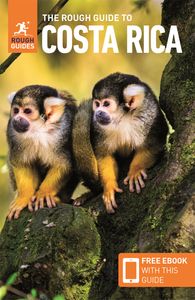
Find even more inspiration here

Planning your own trip? Prepare for your trip
Use Rough Guides' trusted partners for great rates
written by Rough Guides Editors
updated 02.03.2023
Ready to travel and discover Costa Rica?
Get support from our local experts for stress-free planning & worry-free travels.
- Travel advice
Click here to see more results

FOR YOU, FOR FREE: 17 years' worth of firsthand Costa Rica trip planning and travel advice compiled into hundreds of articles, plus exclusive discounts. Created by a Costa Rican and a four-time published Costa Rica guidebook author. Welcome, amigos, and as we say in Costa Rica, pura vida!
Our 2023 Moon Costa Rica guidebook (third edition)
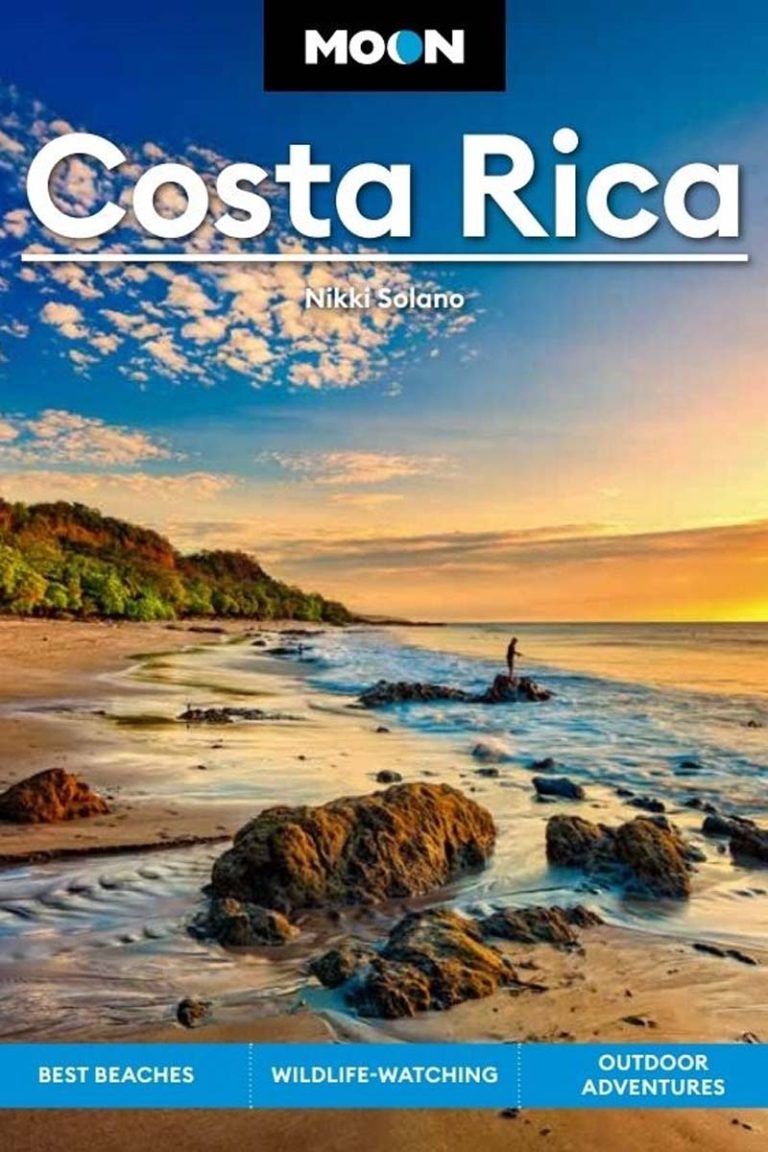
Our 2022 Moon Best of Costa Rica guidebook (first edition)
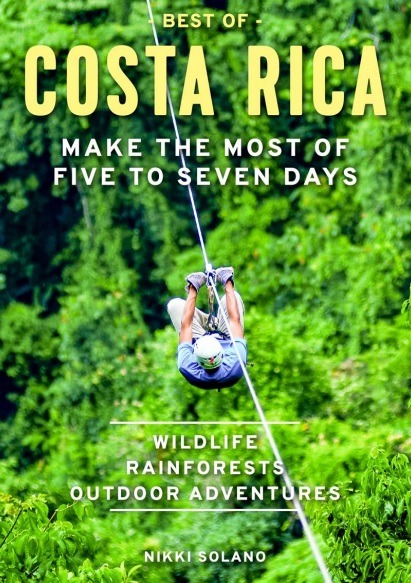
Our 2021 Moon Costa Rica guidebook (second edition)

Our 2019 Moon Costa Rica guidebook (first edition)
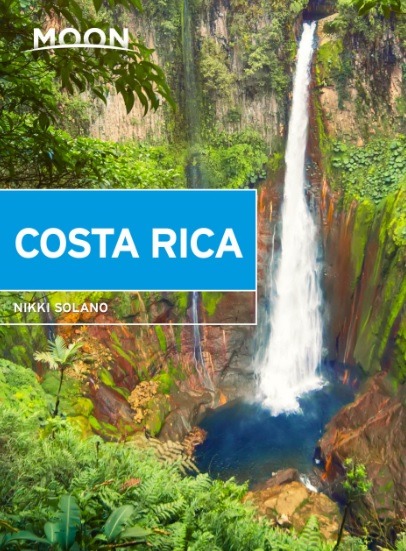
- Moon Travel Guides
- FREE DIY COSTA RICA ACCESS! Details here.
Our company is inclusive. Read our Anti-Hate, Anti-Racism, Anti-Xenophobia, Anti-Inequality, Anti-Discrimination Statement here.
NEW! Our awesome Costa Rica Destination Tool filters 66 destinations by nearly 150 criteria to help you quickly and easily decide where to go in Costa Rica according to your unique preferences, wants, and needs. Learn more and access the tool on our sister site, DIY Costa Rica, here.
Costa Rica Guided Tours: Are They Necessary, Valuable, And/Or Worthwhile?
Home » What To Do In Costa Rica » Costa Rica Guided Tours: Are They Necessary, Valuable, And/Or Worthwhile?

Last updated on September 11th, 2023 at 07:50 am GMT-6 (Costa Rica time)

Written by Nikki Solano
Do you want to know our pick for the BEST ADVENTURE TOUR OPERATOR in Costa Rica? It is featured on DIY Costa Rica !
Want to save money in costa rica, our sister site, pura vida eh inc., has tons of discounts for guided tours in costa rica. con mucho gusto (you’re welcome) and pura vida.

Get the Costa Rica info you need by browsing our article's TABLE OF CONTENTS:
Costa Rica guided tours: Is having a tour guide necessary?
Costa rica guided tours: is having a tour guide valuable, to explore costa rica the safest way possible, to learn about nature, not just see it, to encounter more wildlife or engage in higher-quality bird-watching, to entertain kids (and adults who bore quickly), to support locals and the costa rican economy, costa rica guided tours: is having a tour guide worthwhile.
If you’re wondering whether you need to have a tour guide to participate in a particular Costa Rica tour, please see our related blog post Self-Guided Adventures: 20 Things To Do In Costa Rica Without A Guide . The article outlines which Costa Rica tours and activities require the use of a tour guide, which do not, and which let travelers decide whether they want to have one, essentially answering the question “Is having a tour guide necessary in Costa Rica?
Deciding whether or not you should have a tour guide (for those tours and activities that don’t require one) is a completely different and traditionally more difficult task. It asks you to determine a tour guide’s value, and subsequently evaluate whether that value is worth the cost of the tour guide’s services. Fortunately, our article below, which I wrote together with Ricky (a former tour guide) so it would reflect both tour guide and tour participant perspectives, takes the headache out of this job. It highlights the top reasons to use a tour guide in Costa Rica, helping you identify situations in which Costa Rica guided tours should be favored over Costa Rica unguided tours.
In a nutshell, yes, Costa Rica guided tours have the potential to be highly valuable. If your goals in the country are to lounge around a resort, sprawl out on a beach, swim at a waterfall that isn’t difficult to access, stroll around towns, and/or shop, you’ll likely discover that having a tour guide for these activities provides little value. But if you’re here to experience any or all of Costa Rica’s top draws—the birds and other wildlife; the rainforest, cloud forest, mangroves, and other ecosystems; the plants, flowers, trees, and other flora; the adventure tours and nature-oriented activities; or the history, art, or culture—having a tour guide can significantly heighten these experiences.
It stands to reason that if any of the aforementioned draws are of particular interest to you, they’re also reasons to explore Costa Rica alongside a tour guide. Because we’ve worked with travelers since the mid-2000s, and have heard countless reasons for going with (and deciding against) Costa Rica guided tours, we thought it would be beneficial to compile and explore the top reasons why you should choose guided tours in Costa Rica. For this list, continue reading below.
Top reasons to use a tour guide in Costa Rica
It’s tough to encapsulate the value that a good tour guide can bring to a tour experience. It’s equally difficult to account for all of the ways that a tour guide can create such value. One important way that a tour guide can provide value is through foresight and protection; good tour guides are familiar with the territory they explore, and are experts at assessing and reading their surroundings, helping them recognize when danger is imminent. More specifically, they may be privy to the following (if applicable):
- Which sections of nature trails are known to present particular hazards, such as steep inclines or declines, slippery spots, fallen tree branches, or holes
- Which nature trails may be closed for construction, for inspection, or due to a dangerous occurrence
- Where dangerous wildlife (e.g., poisonous snakes, spiders, frogs) commonly resides along or near particular nature trails
Ricky—a Costa Rican version of Bear Grylls, having grown up in the mountains across a river from remote Indigenous territory—has this je ne sais quoi that’s shared among top tour guides. He calls it instinct. In practice, it translates to safer travel experiences , as I’ve learned, time and time again. At the particular call of a bird, Ricky knew a snake was present before it exited brush a few feet ahead of us and crossed our path. He also helped me avoid a nasty skin burn by directing me away from an area where an árbol de manzanillo (a harmful tree) was present. On other occasions, tour guides helped Ricky and I avoid bad situations, like the time we were nearly stung by Africanized bees (dubbed “killer bees”). Unless you’ve traveled extensively and have developed a similar instinct for danger on your own, a tour guide can help you explore Costa Rica safely.
As touched on above, tour guides are equipped to bring a ton of value to tour experiences, the most obvious value being an abundance of knowledge. Although several tour guides receive formal education through the Costa Rican Tourism Institute (ICT), almost all acquire knowledge out in the field—in the forest or on the water, among the wildlife or marine life. Some dedicate hours, months, and years of their lives to learning about Costa Rica so they can pass that information on to visitors. I cannot tell you how many nights Ricky spent listening to birdsongs online to train his ear to recognize calls in the wild, or how many wildlife books and documentaries he studied to prepare his eye to identify species when they make quick, spontaneous appearances. As is the case for most tour guides, his spotting and listening skills are razor sharp, but most impressive is the level at which he understands the natural world, and how deeply he appreciates it. This kind of passion isn’t easy to come by, but in Costa Rica, it flows throughout a network of hard-working tour guides.
Without a tour guide, you’ll likely miss most of what makes Costa Rica’s natural world so wonderful. Here are a few quick, random examples of the kind of knowledge you stand to gain by opting for Costa Rica guided tours:
- Cecropia trees: Thousands of visitors walk past Costa Rica’s numerous cecropia trees every day with no concept of their worth. A tour guide can teach you how colonies of Azteca ants defend this notable tree, which provides the favorite leaf of sloths, as well as fruits for toucans and other tropical birds. You can also learn how Indigenous groups use hollow versions of the cecropia tree as pipes for carrying water.
- Leaf-cutter ants: Leaf-cutter ants are, most surprisingly, one of my favorite contributors to Costa Rica’s bountiful biodiversity. Without a tour guide, you’ll simply see them crossing trails and marching up tree trunks. But with the help of a tour guide, you can learn where these fantastic little beasts are diligently headed and how they work together to farm fungi, forming an ingenious symbiotic relationship with the spore-producing organism.
- Ficus trees: Most interesting to learn is how these trees grow and kill (other trees, not people). 😉 Tour guides can explain how birds consume figs from this tree and excrete their seeds someplace in the same tree or in a different ficus tree. From there, roots begin to grow, wrapping their way around the tree on their journey to the ground. As the roots gain strength and widen, they strangle the host tree inside, earning them their nickname, the “Strangler Fig.” Eventually, the host tree dies and rots, sometimes leaving behind a hollowed-out version of the new tree that can be toured or even climbed.
- Red-capped manakins and white-collared manakins: With the help of a tour guide, you can see rare red-capped manakins—hilariously nicknamed the Michael Jackson bird—”moonwalk” along tree branches, or hear white-collared manakins, which are easier to spot, make their distinct sound. Without a tour guide, you wouldn’t know that the red-capped manakin can dance, or that the strange, loud, finger-snapping-like sound that you hear in the forest is created by a small bird.
- Bromeliads: You don’t need a tour guide to marvel at beautiful bromeliads. But with the assistance of one, you may get to see frogspawn (the eggs of frogs) hiding in the crevice between the leaves, or a bird drinking pooled water from the same spot, especially during the dry season when rainfall amounts are lower. Are you aware that bromeliads are part of the pineapple family, and that some of the traditionally ornamental plants have fruit? There’s so much more to these brightly colored plants than meets the eye!
- Mangrove ecosystems and walking palms: Mangroves are neat to see but they’re way cooler if you understand how they work. Without spoiling too much of the surprise, I’ll simply say that they’re an incredible filter (“the earth’s liver”) and that their ability to function relies greatly on—wait for it—a tiny crab. Who knew? People who took the guided mangrove tour, that’s who. Walking palms, which can often be seen in mangroves, among other ecosystems in Costa Rica, also have an interesting story. The roots begin partway up the tree and reach down toward the ground. The roots love sunlight, and continue to sprout in the direction where they can find it, essentially moving the palm tree toward the light, giving the impression that it’s walking.
It goes without saying that Costa Rica is lovely to look at. But if you want to get to know Costa Rica, and not just see it, a tour guide can introduce you to what others miss.
In keeping with the theme above, tour guides can help you spot birds and other wildlife that you’d likely miss without their help.
I’m not going to suggest that you need a tour guide to see wildlife in Costa Rica, because you don’t. Wildlife is all around, and you’ll probably see some of it regardless of the tours and activities you participate in and whether or not you choose to do them with a guide. But it is true that you’ll see more birds and wildlife if you choose to explore Costa Rica with a guide than if you opt to explore Costa Rica on your own.
Here’s an analogy to help illustrate this fact. Pretend you’re in Los Angeles and your goal is to see a celebrity. You could roam around the city by yourself, hoping to bump into one, or you could sign up for a movie studio tour, attend a taping of a television show, or climb aboard one of those celebrity homes bus tours. Despite being touristy, the latter options are more likely to get you what you want, and save you time in the process. The same principal applies to wildlife-spotting in Costa Rica. You can certainly spot birds and animals on your own, but you can save yourself time and see more creatures overall if you go with a guided tour option.
Tour guides that specialize in nature tours tend to also specialize in wildlife-spotting tours because nature and wildlife go hand in hand. This means that the more time a tour guide has spent in nature, the more they likely know about wildlife, including where and when to find it. Although wildlife-spotting can never be fully guaranteed, it’s amazing how many wildlife sightings can be predicted when you understand the routines and common behaviors of animals. For this reason, knowledgeable tour guides who operate tours on the same nature trails day after day know, with a fair amount of certainty, where sightings are most likely to occur. Sloths, for example, tend to stick to the same region, so a sloth sighting in a particular tree on a Monday often translates to sloth sightings for tour groups over the remainder of the week. In addition, amicable tour guides will often communicate with one another (sometimes through the cellphone app WhatsApp) while tours are being performed so they can share information about recent sightings. This means that if a tour group up ahead of you on a nature trail just saw a tapir, and that group’s guide told your group’s guide where the tapir went, you’ll have a better chance of seeing the tapir.
The degree to which tour guides have bettered our travel experience in Costa Rica is immeasurable, as is the number of times we’ve seen wildlife in Costa Rica. Of the many incredible experiences we’ve had while participating in Costa Rica guided tours (thanks to tour guides informing us where to look and when), these are a few of our favorites:
- We laid eyes on a jungle cat in the wild
- We watched a tapir care for, and later sleep beside, its young
- We saw humpback whales breaching
- We examined the vibrant colors of a red-eyed tree frog at close range
- We saw an arboreal sloth perform the rare act of moving around the forest floor
- We listened to tens of scarlet macaws and parrots harmonize in a tree
- We witnessed a fer de lance (terciopelo) attack a frog
- We watched great green macaws eat almonds
- We spied on a strawberry poison dart frog hanging out in a heliconia
- We spotted a green, palm-striped pit viper sleeping in a hole in a tree
- We watched a pair of crested guans roam around the forest
- We watched a king vulture feast on its prey
- We spotted an owl snoozing in the daytime
- We watched a common basilisk run across water
- We saw two long-tailed quetzals flying together in front of a nest
Just as incalculable is the extent to which tour guides understand (and love to talk about) fauna in Costa Rica. Here’s a sample of the types of wildlife-related details your tour guide might cover, depending on their level of knowledge on the subject and the type of tour performed:
- Ways to identify species and tell them apart from species with a similar appearance
- Information regarding typical behaviors, habitats, prey, and life cycles
- Roles within the ecosystem
- Information regarding the protection, proliferation, and/or reproduction of a species
A quick note about spotting birds in Costa Rica: Seeing birds in Costa Rica is easy. At the risk of being curt, all you need to do is go outside or look out your accommodation’s window and you’ll find some. Spotting a specific bird species (especially a rare bird species), birds in or around their nests, or birds performing unique behaviors or mating rituals is much more difficult. For these purposes, tour guides are almost always required, and it’s often best to request one with bird-watching experience, ideally one that specializes in bird-watching tours. They’re more likely to know where certain bird species have nests or like to hang out, when they’re most active during the day (or in some cases, during the night), whether they can be seen in Costa Rica at the moment (if they’re migratory), and how to recognize their song.
If your purpose of coming to Costa Rica is to see wildlife and/or birds, a tour guide’s keen eyes, familiarity with the area, knowledge, honed skills, and connections with other tour guides can help you find what you’re looking for.
If you’re interested in seeing wildlife, don’t miss our related blog post, which showcases some of the wildlife species we’ve encountered and photographed in Costa Rica: Costa Rica Wildlife Photography
Although tour guides aren’t clowns, some have personalities that are thoroughly entertaining. (I’m looking at you, Pacuare River Rafting Tour crew.) Even those who have quiet personalities tend to enliven tour experiences with facts, anecdotes, and other forms of information. They are partly working for tips, after all. If you’ll be traveling to Costa Rica with children, or if you’re an adult that tends to bore quickly, guided tours can help keep group members engaged and enjoyment levels high.
Depending on your perspective, without a tour guide to point out cool and unique things during a tour, you may find places in Costa Rica to be unimpressive or not worth your time. I might too, if I journeyed direct from the entrance to the exit of a place, missing most of what is fascinating in between. Fortunately, a tour guide can help prevent tour or activity disappointment by captivating and maintaining your attention.
Surely you’re not headed to Costa Rica solely to support the economy. But if you have a philanthropic mindset, it might please you to know that when you take Costa Rica guided tours, you’re financially supporting tour guides. In most cases, tour guides reside in the community where the guided tour takes place (or nearby), so the employment opportunity also allows them to stay close to their family. Some tour guides aren’t employed by tour companies, but rather they work as freelance tour guides. Usually in these cases, opportunities for work aren’t consistent, which means it can be extra difficult for tour guides to make a living. For most, the money earned from guiding tours is their only source of income. If you can afford to participate in guided tours in Costa Rica, doing so can provide much-needed employment opportunities, helping not only the tour guide and their family but the nation’s economy overall.
The answer to this question depends entirely on you. We’ve spent the majority of this article arguing that tour guides provide a ton of value —they can help keep you safe, teach you all about Costa Rica, increase your chances of seeing birds and other wildlife, provide entertainment, and even contribute to the nation’s economy— but whether or not tour guides are worth having boils down to the amount of money you’re willing to spend on tour guides, and whether that amount is more or less than the cost of their services.
To determine this, you’ll need to assign a dollar figure to the quality of the guided tour experience. I know, this is difficult to do without knowing in advance the quantity and quality of information that you’ll get from the tour guide. But do your best to form an estimate. Are all of the benefits that a tour guide can provide worth $50 to you? How about $100? More than $250? Less than $10? Once you know how much you’re willing to pay for the advantages of having a tour guide, you can compare that amount to the cost of having one. For example, if you’re trying to decide between an unguided cloud forest reserve tour, which costs $30, and a guided cloud forest reserve tour, which costs $70, the tour guide here is essentially costing you $40, so if the dollar value you assigned to having a tour guide was more than $40, it would be best to go with the guided tour option. If the dollar value you assigned to having a tour guide was less than $40, then self-guided exploration is the better choice.
Remember, the quality of your Costa Rica vacation depends on the quality of the experiences you have here, and as our article above outlines, the quality of an experience is largely determined by whether or not it is led by a tour guide. A Costa Rica vacation in an ideal world—without time and money constraints—would be full of guided tours. Understanding that you may not have the funds or the time to participate in all of the guided tours that interest you, or to afford a tour guide at all in some cases, the wisest course of action is to incorporate tour guides into your Costa Rica travel experience whenever and wherever you can.
To help make guided tours in Costa Rica more affordable, our sister site, Pura Vida! eh? Inc., provides discounts for Costa Rica day tours: Click here to view Pura Vida! eh? Inc.’s discounts for Costa Rica guided tours
QUESTION TO COMMENT ON: Have you participated in a guided tour in Costa Rica? What did you learn?

Hey, Costa Rica Travel Blog reader, thank you for visiting and reading our blog! We're truly grateful for your time and preference.
Do you know that your spam-free reading experience is most important to us? Unlike some other Costa Rica blogs, we do not to sell your personal information, and we choose not to display ads, sponsored content, or affiliate marketing on our blog so we can keep your visit as distraction- and junk-free as possible. Because we prioritize your privacy, we don't earn money when you visit us, when you sign up for our e-course, or when you click on our links, which means the time and work we put into this blog—including its 300+ articles—is entirely voluntary! If you find our content valuable, and you'd like to thank us for making the trip-planning process easier and your Costa Rica vacation more enjoyable , please consider making a small donation ($1, $2, $3, or an amount of your choosing) to our blog. Doing so is a great way to pat us on the back if you feel we deserve it . 😊 Pura vida, amigos!

Click on the button above to donate through PayPal. (If you cannot see the PayPal button above, click here .) A PayPal account is not required to make a donation; credit and debit cards are also accepted. PayPal donations are confidential; we never see your payment details.

Tagged: costa rica , costa rica travel , guide , hiking , national park , nature , tourism , tours , travel , travel guide , travel tips , vacation
- Author Posts
The comment section of this article has moved! If you have a question or comment about our article above or Costa Rica travel in general, please post it in our Questions and Answers Forum on DIY Costa Rica , our sister website, where you can also access our private Costa Rica recommendations, our Costa Rica Destination Tool, and our Costa Rica Recommendations Map. See you there, amigos! 🙂
We did lots of guided tours! Hanging bridges bird walk, horseback riding, safari float. Every one of them was absolutely worth it and an awesome experience!
Hi momsasaurus!
It’s great to hear from you again! Can’t wait to help set you up with some other great guided tours once you make it back to Costa Rica with the kids. 🙂
So true! I’ve been living in Costa Rica for four months now, and there is nothing like a guided tour to help you catch the bounty of wildlife and beautiful flowers that surround you!
Hey lybsta!
It’s great to hear from someone else who lives in Costa Rica and agrees: guided tours are invaluable! 🙂
We did one guided trip per day during our week long stay in gorgeous Costa Rica in Spring of 2007. So much amazing animal and plant life up close and personal with incredible guides who pointed out the hidden world as well as the in-your-face attractions. Can’t wait to return!
Hi sapipes!
Thanks so much for the comment and for letting us experience a part of your trip with you! I love your quote about the “hidden world” versus the “in-your-face attractions.” I think that sums up the best of both worlds that Costa Rica has to offer. 🙂
I absolutely agree! I’m an experienced wildlife photographer and I would have missed 3/4 of what I saw in Corcovado National Park without the guide there to point out items of interest. Best value for the money I spent in Costa Rica!
Hi Rob Jones!
Thanks so much for this great feedback! We completely agree: experiencing places like Corcovado (and several other national parks) isn’t the same without a local guide. I love this quote: “best value for the money I spent in Costa Rica.” I’m glad to hear it! 🙂
Hoping to visit CR in spring 2015 and am busy planning itineraries. Local tour guides not only serve to enhance your experience but also promote local economies and eco tourism. I love the frog picture from Arenal too!
Hi traveljody!
That’s amazing to hear! Costa Rica would love to have you. 🙂 And, we 100% agree: supporting local guides and economies is a great way to travel!
Reblogged this on Holiday Rent Club .
Thanks so much for the re-blog, Holiday Rent Club! 🙂
I can say that a Local Person that is focus on Customer Service would be a lot of help for showing places you wouldn´t get to know without him/her guidance. I don´t like to do too much planning for traveling that´s why I get help.
We agree 100%. There’s nothing better than a local guide who is focused on customer service and can help you discover the unfamiliar. Thanks for sharing your opinion on our blog! 🙂
planning to visit CR in upcoming season,thanks for sharing nice blog,
Thanks so much for the compliment, traveldoozy! Wishing you a wonderful trip! 🙂
- The forum ‘Costa Rica Travel Blog Forum’ is closed to new topics and replies.
- Kale by LyraThemes.com.
We're Nikki and Ricky, and we're human!
Sadly, ai-generated costa rica blogs and guides are taking over the internet. thank you for choosing our authentic website and resources over others, for trusting our firsthand experience, and for preferring our human-backed recommendations 😀 other ways we are unique:.
✓ We choose not to display ads, sponsored content, or affiliate marketing on our blog. Because we prioritize your privacy, we don't earn money when you visit us, when you sign up for our e-course, or when you click on our links, which means the time and work we put into this blog is entirely voluntary. ✓ Ricky is a born-and-raised Costa Rican and Nikki (married to Ricky) has explored Costa Rica since the mid-2000s . ✓ We've operated our Costa Rica-based business, Pura Vida! eh? Inc. , for 16 years (and counting!) . ✓ Our Costa Rica guidebooks are published by the prestigious Moon Travel Guides brand . ✓ We only ever write about experiences we know firsthand , and we never stuff our blog with general information about Costa Rica that is widely available elsewhere . ✓ We never copy or plagiarize other writers' content . How we wish other writers would show us the same respect! ✓ Unless stated otherwise, every photo displayed on our blog was taken by us, and with our own two hands. (Unlike some other bloggers, who rely on drones to travel and conduct research for them, we actually visit and explore the places we write about .)👍🏽 ✓ We're active in promoting Costa Rica around the world . We've written about Costa Rica for Wanderlust Magazine (UK), presented Costa Rica on Rick Steves' Monday Night Travel Show and podcast/radio show (US), and served as a Costa Rica Destination Editor for Essentialist (Spain). ✓ Our work is backed by hundreds of positive reviews and testimonials ( read some here ) ✓ We are not overly active on social media . Instead of fixating on our own popularity, we spend the majority of our time exploring and researching Costa Rica, updating our various Costa Rica resources, and working with travelers one-on-one. We're focused on the quality of your travel experience , not the quantity of our followers. ❤️
We hope you enjoy your visit to our junk-free blog as much as your time in Costa Rica. 😊

- Privacy Policy Overview
- Remember my preference
This website uses cookies to operate and provide you with the best user experience possible. To ensure you're aware of and okay with this and our other privacy-related practices, please review our Privacy Policy, then click the button below to accept it.
If you do not accept the policy, we respect your choice 100%. Unfortunately, several of our website’s features, including our Questions and Answers Forum, rely on cookies to operate. Most are also run by themes, plugins, and other add-ons to our website that we do not and cannot control, which means the cookies you receive are mainly provided by third parties. Because simple actions like reading our articles, asking a question, and even visiting our website’s homepage require the use of cookies, it is not possible to explore or use our website without them. If you would prefer not to receive cookies, we kindly (and sadly) ask that you do not visit our website. (Alternatively, you can try setting your browser to remove or reject browser cookies before visiting our website, but you may find that our website doesn’t function properly without them.) By visiting or submitting information through our website, you acknowledge and accept our use of cookies, and the use of third-party cookies. For more information, please see our Privacy Policy.
Thank you for understanding!
In order for our site to remember that you accept our policy, please enable the Strictly Necessary Cookie.
If you leave the Strictly Necessary Cookie disabled, we will not be able to save your preference. This means that every time you visit this website you will need to accept the policy again.

- Kindle Store
- Kindle eBooks
Promotions apply when you purchase
These promotions will be applied to this item:
Some promotions may be combined; others are not eligible to be combined with other offers. For details, please see the Terms & Conditions associated with these promotions.

Download the free Kindle app and start reading Kindle books instantly on your smartphone, tablet, or computer - no Kindle device required .
Read instantly on your browser with Kindle for Web.
Using your mobile phone camera - scan the code below and download the Kindle app.

Follow the author

Image Unavailable

- To view this video download Flash Player
Costa Rica Travel Guide 2024: The Ultimate Step by Step Guide to Explore Costa Rica and Enjoy Your Visit (Travel with Zee Book 9) Kindle Edition
Embark on an unforgettable journey through the breathtaking landscapes of Costa Rica with our exclusive travel guide.
Get ready to immerse yourself in a world where every moment is an adventure waiting to unfold. From the pristine beaches of Manuel Antonio to the majestic Monteverde Cloud Forest, our guide is your ultimate companion to uncovering the hidden gems of this tropical paradise.
Here's why our guide stands out:
1. **Discover Hidden Treasures**: Whether you're seeking the perfect wave for surfing or craving a tranquil escape on secluded shores, our guide reveals the best-kept secrets of Costa Rica's coastline.
2. **Thrilling Adventures Await**: Experience the rush of adrenaline as you zip-line through the lush canopy of the Monteverde Cloud Forest and hike around the towering Arenal Volcano.
3. **Your Personal Navigator**: With a detailed map and practical tips, you'll navigate Costa Rica like a seasoned explorer, never missing out on its wonders.
4. **Captivating Visuals**: Dive into a world of vibrant imagery that captures the essence of Costa Rica, igniting your wanderlust with every turn of the page.
5. **Culinary Delights and Culture**: Indulge in the flavors of Costa Rica with insider recommendations on the best local eateries and captivating culture.
6. **Expert Recommendations**: From top beaches to eco-lodges and outdoor adventures, our guide features exclusive top lists curated by locals in the know.
7. **Travel Wisdom**: Gain invaluable insights on the best times to visit, transportation tips, and budget-friendly hacks to maximize your adventure.
8. **Language Made Easy**: Impress the locals with our handy Spanish language primer, designed to help you navigate conversations with ease.
Why choose our guide? Because it's more than just a book; it's your gateway to a transformative journey through Costa Rica. Authored by passionate locals immersed in the "Pura Vida" lifestyle, our guide promises an experience that's both enriching and unforgettable.
Are you ready to turn your Costa Rica dreams into reality? Let the adventure begin with our guide as your compass. Your extraordinary journey awaits – seize the opportunity to explore Costa Rica like never before!
- Book 9 of 9 Travel with Zee
- Print length 76 pages
- Language English
- Sticky notes On Kindle Scribe
- Publication date April 28, 2024
- File size 14583 KB
- Page Flip Enabled
- Word Wise Enabled
- Enhanced typesetting Enabled
- See all details

Product details
- ASIN : B0D2XXR6HP
- Publication date : April 28, 2024
- Language : English
- File size : 14583 KB
- Text-to-Speech : Enabled
- Screen Reader : Supported
- Enhanced typesetting : Enabled
- X-Ray : Not Enabled
- Word Wise : Enabled
- Sticky notes : On Kindle Scribe
- Print length : 76 pages
About the author
Zee w smith.
Zee W Smith, a globetrotting enthusiast and seasoned traveler, brings you on a captivating journey through the world's most awe-inspiring destinations. With a passion for exploration and a keen eye for hidden gems, Zee's travel guides are your compass to unforgettable experiences. Whether you seek bustling cityscapes, serene landscapes, or cultural treasures, embark on a thrilling adventure with Zee W Smith as your trusted guide. Uncover the beauty of diverse cultures and landscapes, discovering the extraordinary in the ordinary. Join Zee on a literary expedition that transcends borders and unlocks the secrets of remarkable destinations.
Customer reviews
Customer Reviews, including Product Star Ratings help customers to learn more about the product and decide whether it is the right product for them.
To calculate the overall star rating and percentage breakdown by star, we don’t use a simple average. Instead, our system considers things like how recent a review is and if the reviewer bought the item on Amazon. It also analyzed reviews to verify trustworthiness.
No customer reviews
- Amazon Newsletter
- About Amazon
- Accessibility
- Sustainability
- Press Center
- Investor Relations
- Amazon Devices
- Amazon Science
- Sell on Amazon
- Sell apps on Amazon
- Supply to Amazon
- Protect & Build Your Brand
- Become an Affiliate
- Become a Delivery Driver
- Start a Package Delivery Business
- Advertise Your Products
- Self-Publish with Us
- Become an Amazon Hub Partner
- › See More Ways to Make Money
- Amazon Visa
- Amazon Store Card
- Amazon Secured Card
- Amazon Business Card
- Shop with Points
- Credit Card Marketplace
- Reload Your Balance
- Amazon Currency Converter
- Your Account
- Your Orders
- Shipping Rates & Policies
- Amazon Prime
- Returns & Replacements
- Manage Your Content and Devices
- Recalls and Product Safety Alerts
- Conditions of Use
- Privacy Notice
- Consumer Health Data Privacy Disclosure
- Your Ads Privacy Choices
- Central America
- A Solo Travelers Guide To...
A Solo Traveler’s Guide to Costa Rica

There is something very special about solo travel in Costa Rica . If you’ve never embarked on an adventure alone, then this destination in Central America offers the opportunity to reconnect with yourself in magnificent wilderness, meet travelers in the many excellent hostels and step outside your comfort zone with the retreats on offer. Want to know more? Here’s a guide to traveling alone in Costa Rica.
If you’d like a solo experience but in the company of kindred spirits who you are as passionate about travel as you are, join our action-packed nine-day adventure through Costa Rica – led our Local Insider to ensure the most authentic experience.
Best towns for solo travelers in Costa Rica
While there is really no part of Costa Rica that is inadvisable to visit, there are some towns especially suited for solo travelers. Unless you are specifically seeking solitude (which is also amazing sometimes), you will most likely want to be somewhere where there is the opportunity to meet other travelers, try a variety of foods, have nightlife options and be within close proximity to different types of activities. Tamarindo, Santa Teresa, Puerto Viejo, Nosara, and La Fortuna are all very solo traveler-friendly destinations.

During your solo expedition, it is likely that you will want to move around a bit. Private transportation can get pricey if you are the only one paying for it, but fortunately there are some reasonable and easy transportation options available here. Nature Air and Sansa are Costa Rican airline companies that fly small planes to dozens of small airports around the country. This is probably one of the easiest ways to jump from place to place without wasting time and money. There are also shuttle companies, such as Grayline and Interbus that offer transportation all over the country.

Hostels for solo travelers in Costa Rica
There are plenty of cool hostels in Costa Rica . They’re a great way to meet fellow travelers and often come at budget-friendly prices. But staying in one necessarily mean you’ll have to share a room and bathroom with guests you’ve never met. There are several high-quality hostels in Costa Rica where you have the option of a private room for an affordable price.

What to do on your own in Costa Rica
Traveling solo in Costa Rica doesn’t necessarily mean you have to do everything alone. There are plenty of activities where you can meet and share your experiences with others. If you want to take a tour, just let the tour operator know that you are traveling solo and ask if there are any groups to join. Take a surfing lesson, go on a sunset sailing excursion, sign-up for a yoga class, or join a guided nature tour. The beauty of traveling alone is that you get to do whatever you want and not worry about anyone else.

Solo female travel in Costa Rica
Traveling alone in Central America is a brave endeavor – particularly if you are a first-time solo female traveler. However, Costa Rica is renowned for its outstanding tourism infrastructure – and this makes it a very safe place for solo female travelers. You can easily join day trips and activities as a solo traveler, without worrying about feeling vulnerable. English is widely spoken, not just among other travelers but locals too.
More experienced solo female travelers might want to avoid typically busy spots like Tamarindo, Jaco and – if you’re not interested in surfing – Puerto Viejo. Instead, consider a stay in the Monteverde Cloud Forest for the chance to see two-toed sloths stealthily hanging in the trees. Or venture east to the Caribbean coast – Tortuguero National Park , in Limón Province, is a major nesting site for green turtles, and a thirving wetland sanctuary for wildlife like jaguars, tapirs and white-faced capuchin monkeys.
Best retreats for solo travelers in Costa Rica
There are many different retreats taking place throughout the year in Costa Rica. Spend a week doing yoga, surfing, paddleboarding, detoxing, or learning how to live in an environmentally sustainable way. Everything will be set up for you (accommodation, transportation, food, classes and activities) and you will be surrounded by like-minded individuals from around the world.

Best schools for solo travelers in Costa Rica
If you don’t fancy a full-on retreat, there are several great Spanish schools on the coast and in the Central Valley in Costa Rica. There are programs that are as short as a few days and as long as several months. Joining a Spanish language program is a wonderful way to spend a portion of your day learning Spanish and the rest of your day exploring and participating in activities of your choice. Spanish schools are also a great place to meet other travelers. There is often the option to stay at the Spanish school, which is similar to staying at a hostel. Wayra Spanish Institute, Coastal Spanish Institute, Nosara Spanish Institute, Monteverde Institute and Academia Tica Spanish School are all fantastic choices.
Feeling inspired? Solo travel doesn’t have to be solitary the whole time. Join our thrilling nine-day adventure through Costa Rica to experience this amazing country in a small-group of like-minded travellers, led by our Local Insider.
Since you are here, we would like to share our vision for the future of travel - and the direction Culture Trip is moving in.
Culture Trip launched in 2011 with a simple yet passionate mission: to inspire people to go beyond their boundaries and experience what makes a place, its people and its culture special and meaningful — and this is still in our DNA today. We are proud that, for more than a decade, millions like you have trusted our award-winning recommendations by people who deeply understand what makes certain places and communities so special.
Increasingly we believe the world needs more meaningful, real-life connections between curious travellers keen to explore the world in a more responsible way. That is why we have intensively curated a collection of premium small-group trips as an invitation to meet and connect with new, like-minded people for once-in-a-lifetime experiences in three categories: Culture Trips, Rail Trips and Private Trips. Our Trips are suitable for both solo travelers, couples and friends who want to explore the world together.
Culture Trips are deeply immersive 5 to 16 days itineraries, that combine authentic local experiences, exciting activities and 4-5* accommodation to look forward to at the end of each day. Our Rail Trips are our most planet-friendly itineraries that invite you to take the scenic route, relax whilst getting under the skin of a destination. Our Private Trips are fully tailored itineraries, curated by our Travel Experts specifically for you, your friends or your family.
We know that many of you worry about the environmental impact of travel and are looking for ways of expanding horizons in ways that do minimal harm - and may even bring benefits. We are committed to go as far as possible in curating our trips with care for the planet. That is why all of our trips are flightless in destination, fully carbon offset - and we have ambitious plans to be net zero in the very near future.

See & Do
Five best eco-tourism activities in costa rica.

Guides & Tips
‘costa rica is at the forefront of eco-tourism in latin america’: why you don’t need to fear travel greenwashing here.

Places to Stay
The best hotels to book in samara, costa rica.

Why You Should Visit Costa Rica in 2023

The Best Solar-Powered Stays in Costa Rica for Sustainable Travelers

How to Roll All the Best Parts of Costa Rica Into One Eco-Adventure Week

Monteverde Cloud Forest: A Guide to Costa Rica's Wildlife Paradise

Why Costa Rica Is the Ultimate Food Lover's Destination

The Secret of Costa Rica’s Hidden Cloud Forests

The Best Bed and Breakfasts to Book in Costa Rica

Top Tips for Travelling in Costa Rica

Top Trips for Disappearing into the Jungle
Culture trip spring sale, save up to $1,100 on our unique small-group trips limited spots..

- Post ID: 1346428
- Sponsored? No
- View Payload

IMAGES
VIDEO
COMMENTS
Learn everything you need to know to plan your dream vacation in Costa Rica, from where to go, when to visit, how to get around, what to do and more. Find out the best places to see wildlife, beaches, volcanoes and more in this comprehensive guide by Mytanfeet.
Learn how to plan your trip to Costa Rica with this detailed guide that covers the best places to visit, the best time to go, the budget, and the transportation. Follow our 1-month itinerary from the Pacific coast to the Caribbean coast, through the center of the country.
The Rough Guides to Costa Rica and related travel guides. In-depth, easy-to-use travel guides filled with expert advice. Buy US$26.99. Buy US$34.99. Buy US$34.99. No matter how clear the skies look at daybreak, make sure you pack waterproof clothing and dry bags for valuables on any trips into the rainforest. And if the showers are dampening ...
Best Months to Visit. The best time to visit Costa Rica is from mid-December to April (the dry season). This peak tourist season boasts plenty of sunshine making it an ideal time for exploring ...
Our essential guide to planning a trip to Costa Rica covers everything from volcanic peaks to tropical retreats, ensuring your journey is as exhilarating as the destination itself. The Arenal Volcano underneath gradient skies in Costa Rica. Known for its "Pura Vida" lifestyle and stunning biodiversity, Costa Rica is a country where over a ...
Costa Rica. Costa Rica is where to go when you want to disconnect and go all in on nature—and with its sun-drenched beaches and lush rainforests, it's pretty easy to do it. Yes, it's known for its laid-back pura vida lifestyle, but adventure's everywhere, too: Hike through lava fields at Arenal Volcano National Park, raft down the Rio ...
Written by Nikki Solano. Nikki is the CEO of Pura Vida! eh?Inc. (Costa Rica Discounts), and the author of the guidebooks Moon Costa Rica (2019, 2021, 2023, and 2025 editions) and Moon Best of Costa Rica (2022 edition) from Moon Travel Guides.Together with her Costa Rican husband, Ricky, she operates the Costa Rica Travel Blog, created the online community DIY Costa Rica, built the Costa Rica ...
Plan to travel during daylight hours (that is, before 6pm), as the lack of road lighting makes driving in the dark even more precarious. 12. Tap water is a-OK to drink. There may be exceptions in remote villages or off-the-grid locales. For the most part, however, the tap water in Costa Rica is safe to drink.
The group were all wonderful people, our guide Rafa was incredible and the itinerary is a perfect mix of activities and free time. Ending the trip relaxing by the sea was a perfect finale. ... The best time of year to travel to Costa Rica 08 Mar 2023. How to connect with Costa Rica's indigenous Terraba community on your travels 16 Feb 2023. 6 ...
In Costa Rica visitors will find everything they are looking for: adventure, sun, beaches, forest, wildlife and wellness, and much more. The best way to begin planning an unforgettable vacation is getting firsthand information about the different certified activities and hotels available in the country. All the activities found in this section ...
Here is a high-level view of what this 10-day Costa Rica itinerary will look like. In all, it will focus in on 3 main areas of the country giving you enough time to truly enjoy each place you visit. Day 1 - Poas Volcano & La Paz Waterfall Gardens. Day 2 - La Fortuna / Arenal. Day 3 - La Fortuna / Arenal. Day 4 - Rio Celeste Day Trip.
Visit Costa Rica for an unforgettable adventure. Discover the best hotels, restaurants and things to do with this highly curated travel guide.
Hola, amigos! We're Ricky, a born-and-raised Tico (Costa Rican), former rafting tour guide, and nature and wildlife photographer, and Nikki, a longtime Costa Rica explorer, four-time published Costa Rica guidebook author, and Tica (Costa Rican) at heart. We're a happily married, adventurous couple in our 17th year of discovering Costa Rica ...
Costa Rica food & drink. Costa Rican food is simple fare and usually involves rice with meat, beans or fish. Try breakfast staple gallo pinto (painted rooster - a mixture of beans and rice with eggs or cheese), pargo (red snapper) or corvine (sea bass). Fruit is really good in Costa Rica, where papayas, pineapples and bananas grow in abundance.
Explore Costa Rica, Central America's natural paradise! Encounter a variety of lush rainforests, active volcanoes, and stunning beaches along the Pacific and Caribbean coasts. Most visitors really enjoy thrilling adventures like canopy tours and wildlife spotting in national parks. Go ahead and indulge in delicious cuisine and immerse ...
Intro to Costa Rica as a travel destination. Costa Rica is now firmly established as a world leader in ecotourism and adventure travel. This jewel of Central America got there thanks to a combo of natural gifts and legislation. A whopping 26% of the total land here is protected in some of the best national parks and reserves in the world.
What to Know About This Two Weeks in Costa Rica Itinerary. Here are the destinations for this sample 2 week itinerary in Costa Rica. Day 1: San Jose. Days 2 - 3: Tortuguero. Day 4: Travel to La Fortuna. Days 5 - 7: Arenal/La Fortuna. Day 8 & 9: Monteverde. Days 10 - 13: Jaco/Manuel Antonio. Day 14: Fly home.
Tour guides can help you save time and make the most of it. They are great at spotting animals and birds in hidden places or in the middle of the forest. You are welcome to choose any of the following certified tour guides that better suits your needs, among +2500 available in different specialties. PDF Directory.
Inside the Costa Rica guide, you will find the reasons, Costa Rica is such an awesome Vacation spot. ... Save Time, Money & Have the Best Vacation to Costa Rica with our custom travel packages. But don't take our word for it - see what our clients have to say! Local Travel Experts Since 2004. Toll Free: 1 (866) 498-0824;
Every winter it does the soul good to escape the cold and get a dose of Vitamin D, even if for only a few days. One country I recommend for a winter vacation is Costa Rica. You can spend just four days in Costa Rica and experience a lot. The weather is sultry - temperatures hover in the high 80s and 90s and the sun shines daily in the dry season.
We offer Travel Packages & Custom Costa Rica Vacations with up to date information from Local Travel Experts. My Costa Rica Vacation & Travel Guide Since 2004 Excellent 5/5 1 (800) 996-1139 . Free Quote. Vacations. Custom Package; Family ... Costa Rica Travel Guide. Why Visit? Costa Rica, ...
Rough Guides® is a trademark owned by Apa Group with its headquarters at 7 Bell Yard London WC2A 2JR, United Kingdom. Plan your visit to Guanacaste, Costa Rica with Rough Guides. Read about itineraries, activities, places to stay and travel essentials and start your trip today.
Nosara - Nosara is the wellness capital of Costa Rica, known for its retreats, yoga, and surfing. Manuel Antonio and Jaco are in the northern part, about a 3-3.5 hour drive from Norman Y. Mineta International Airport in San Jose. Tamarindo and Nosara are in the southern part, about 4-4.5 hours from San Jose.
Written by Nikki Solano. Nikki is the CEO of Pura Vida! eh?Inc. (Costa Rica Discounts), and the author of the guidebooks Moon Costa Rica (2019, 2021, 2023, and 2025 editions) and Moon Best of Costa Rica (2022 edition) from Moon Travel Guides.Together with her Costa Rican husband, Ricky, she operates the Costa Rica Travel Blog, created the online community DIY Costa Rica, built the Costa Rica ...
Embark on an unforgettable journey through the breathtaking landscapes of Costa Rica with our exclusive travel guide. Get ready to immerse yourself in a world where every moment is an adventure waiting to unfold. From the pristine beaches of Manuel Antonio to the majestic Monteverde Cloud Forest, our guide is your ultimate companion to ...
Traveling alone in Central America is a brave endeavor - particularly if you are a first-time solo female traveler. However, Costa Rica is renowned for its outstanding tourism infrastructure - and this makes it a very safe place for solo female travelers. You can easily join day trips and activities as a solo traveler, without worrying ...